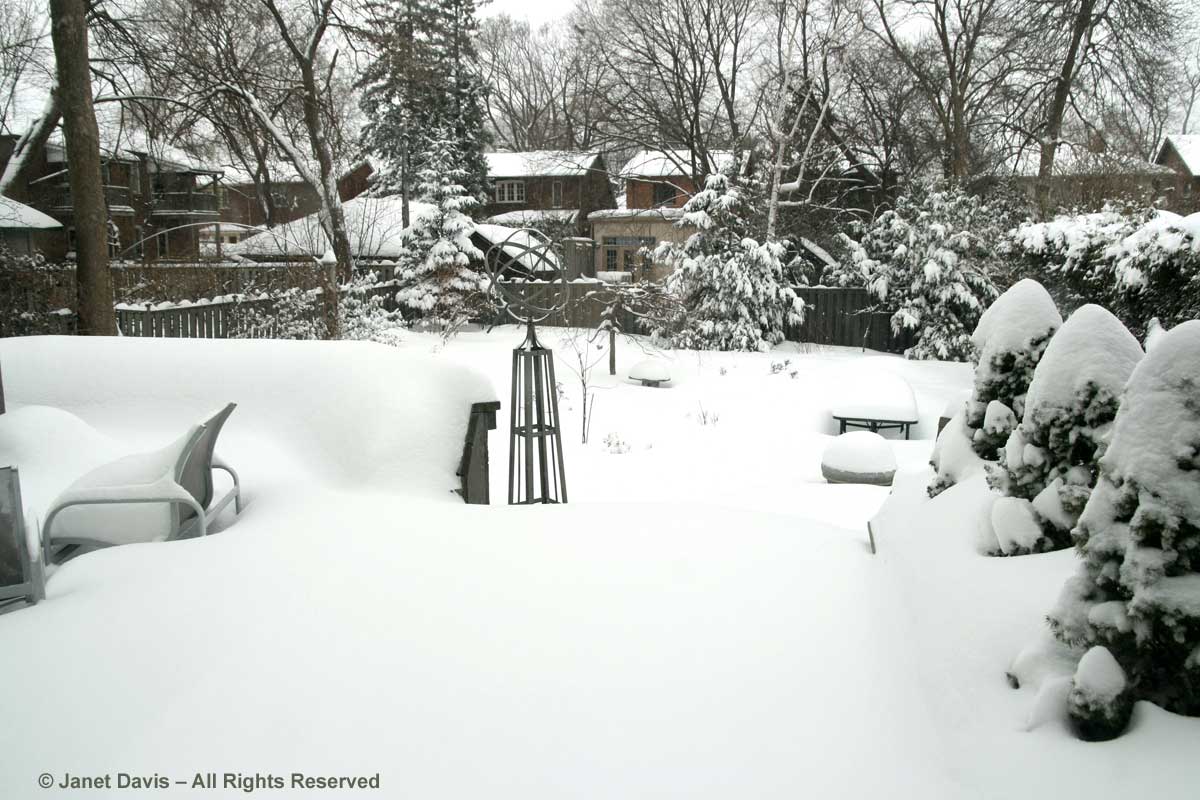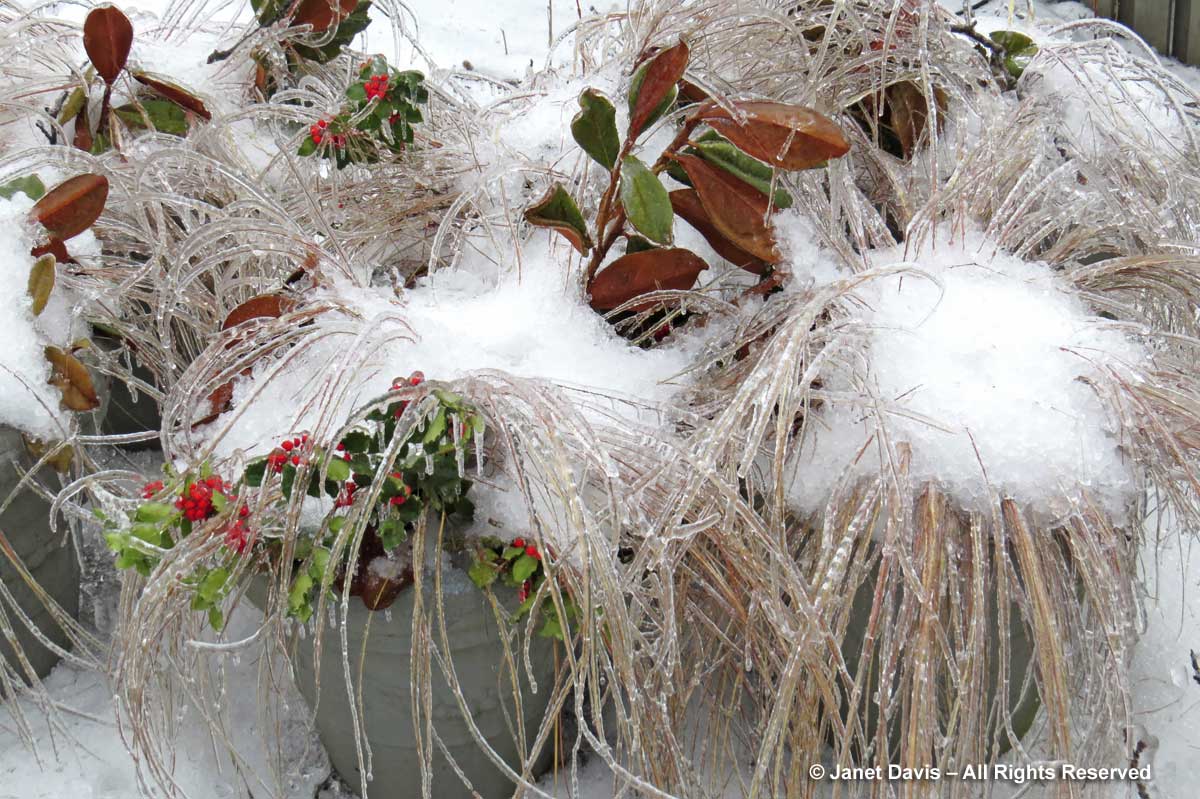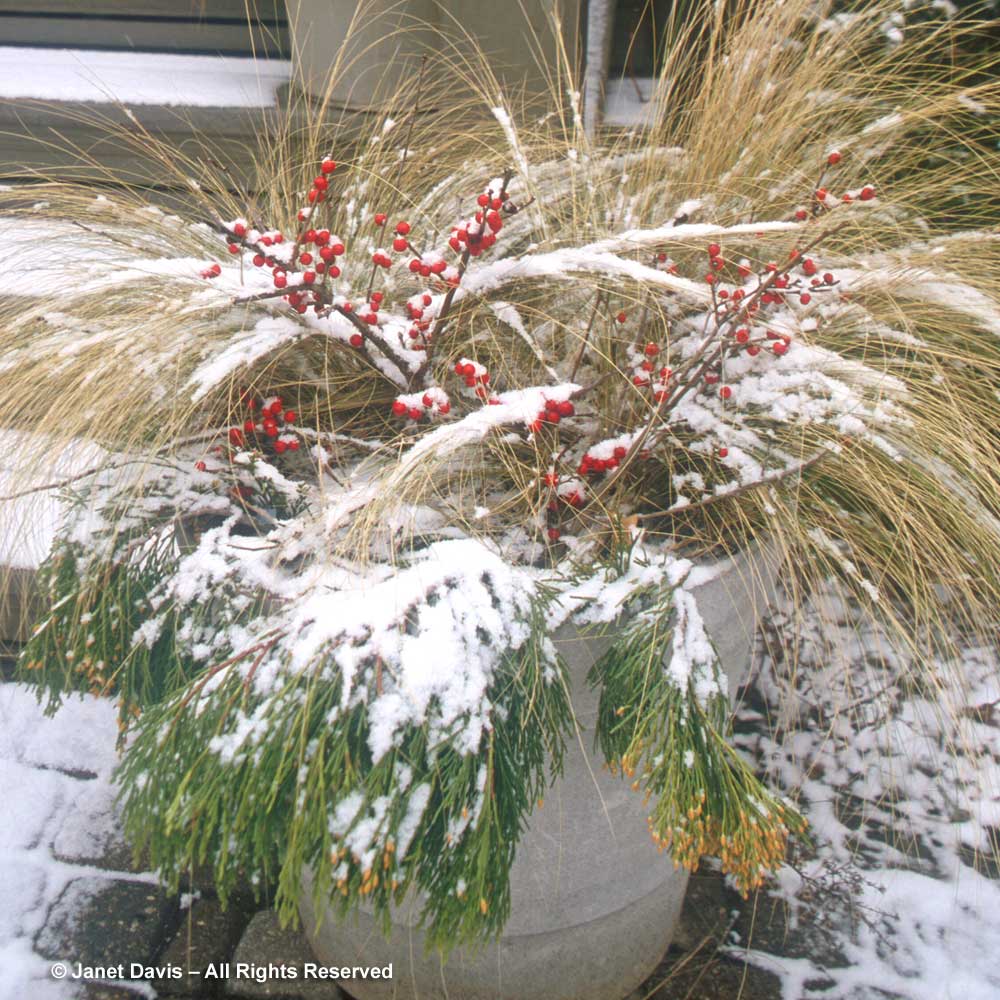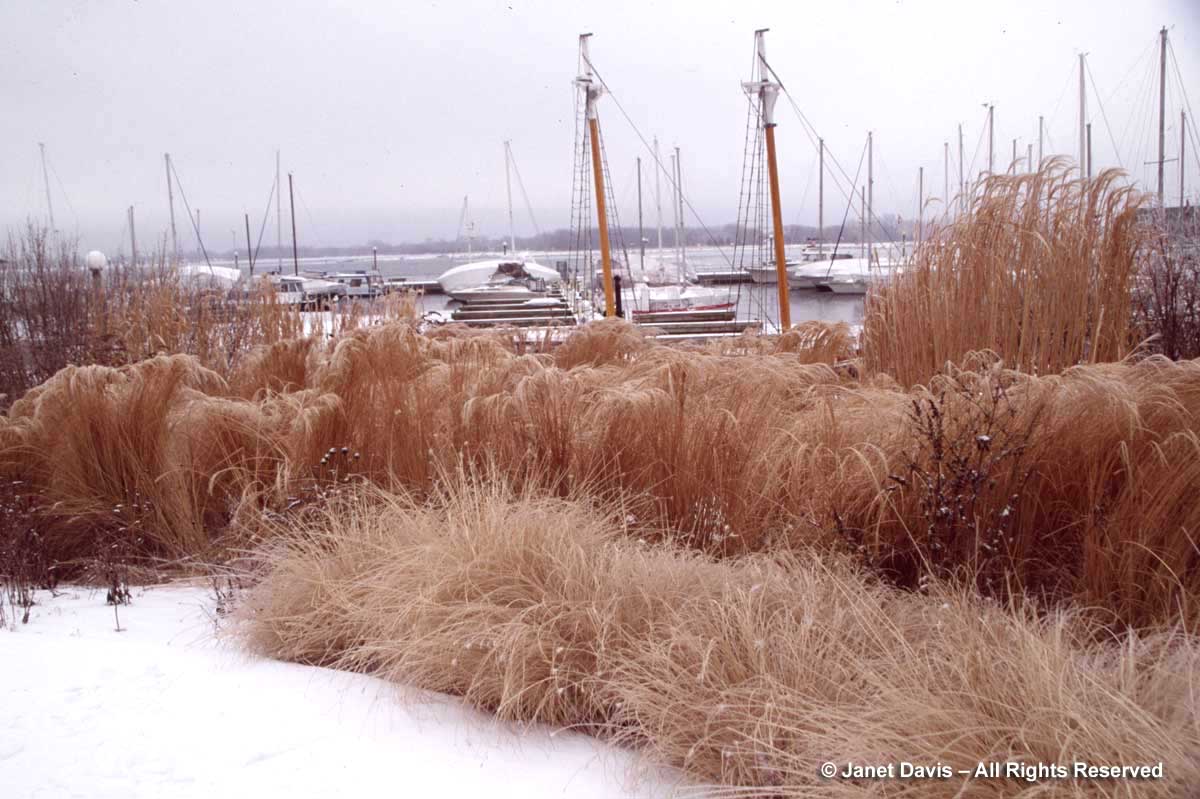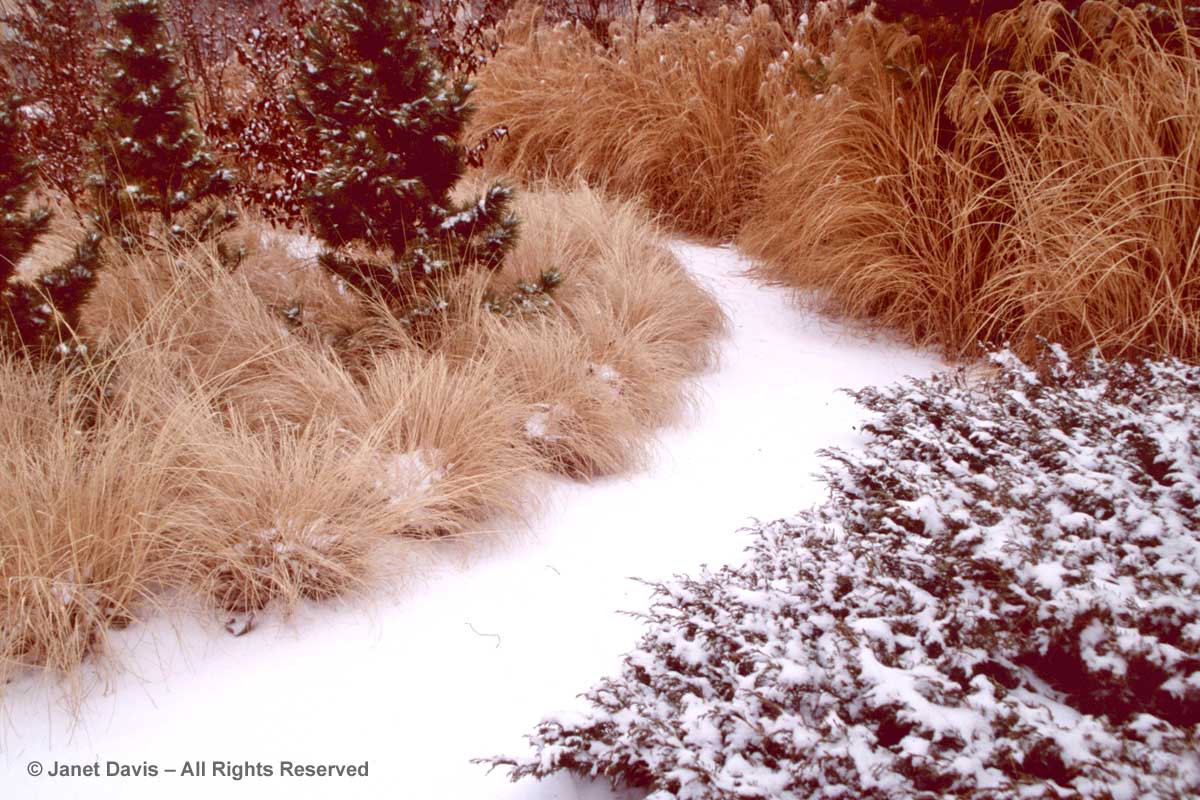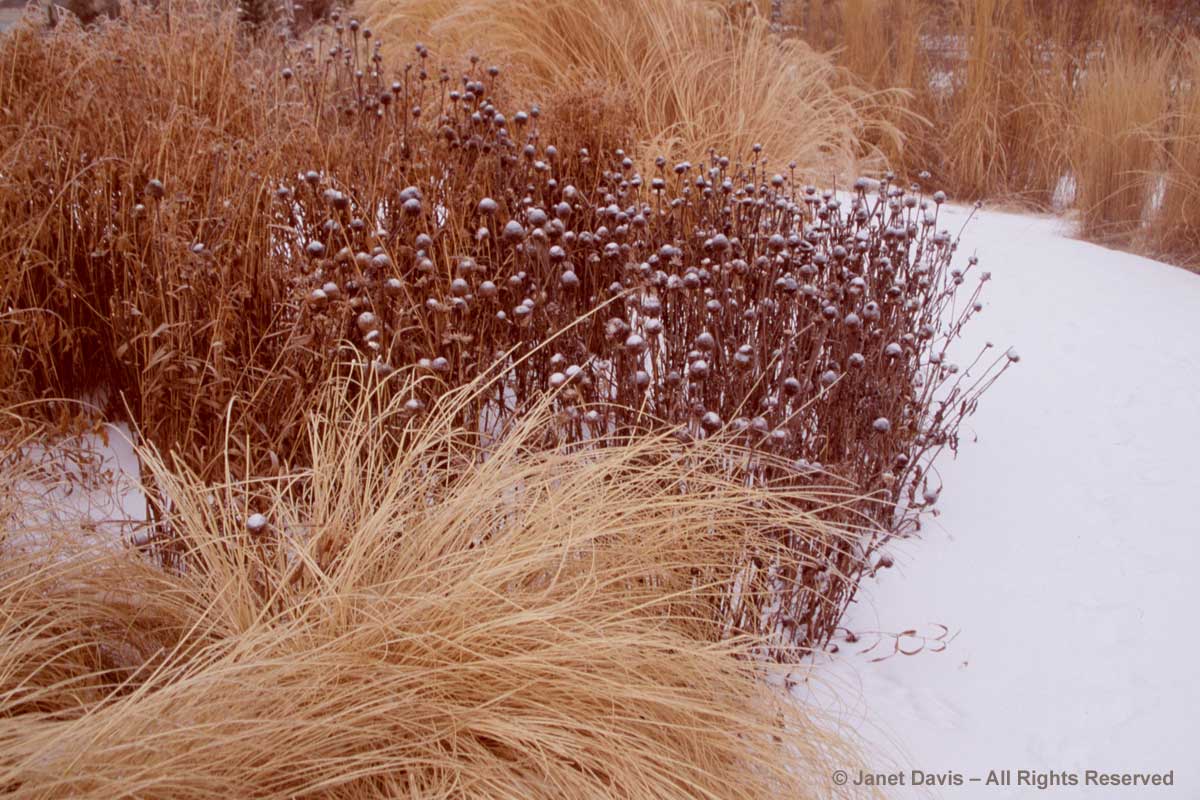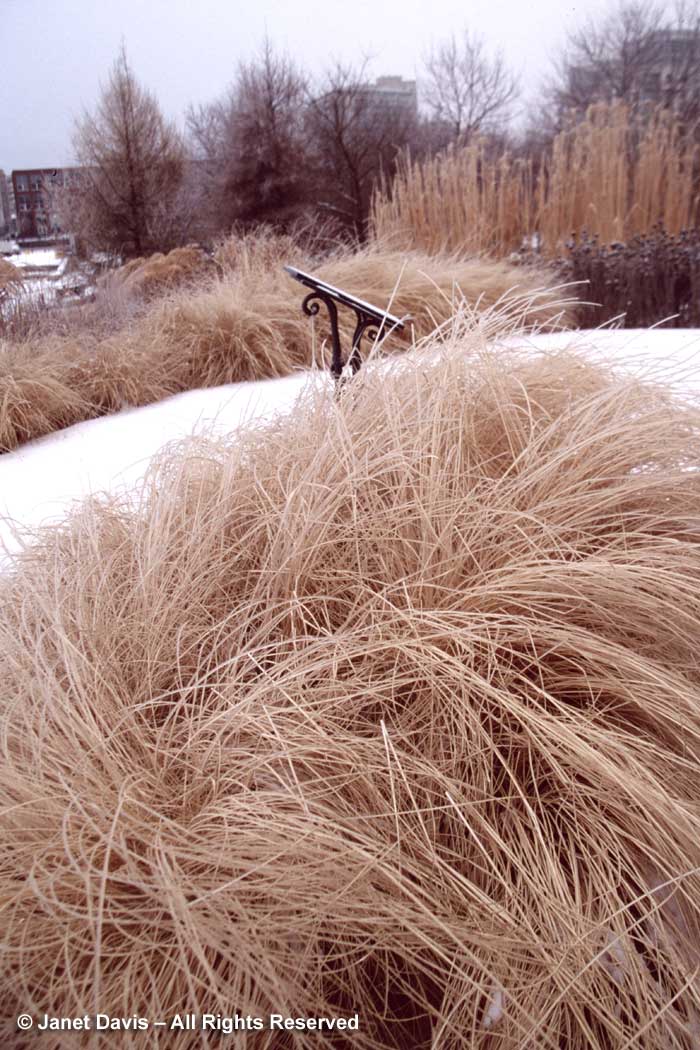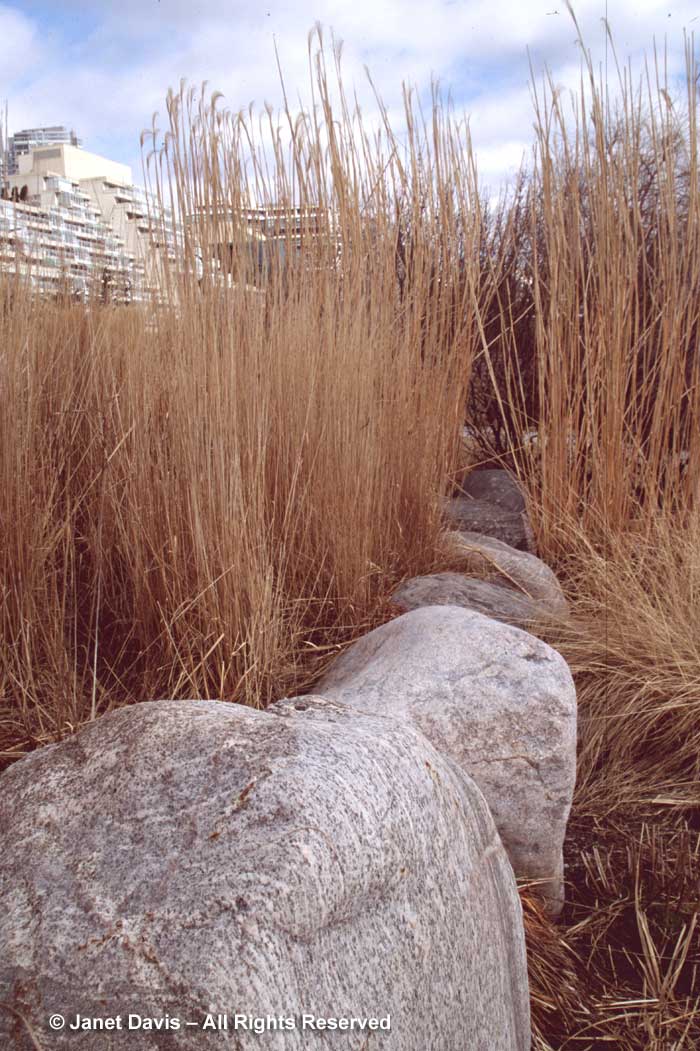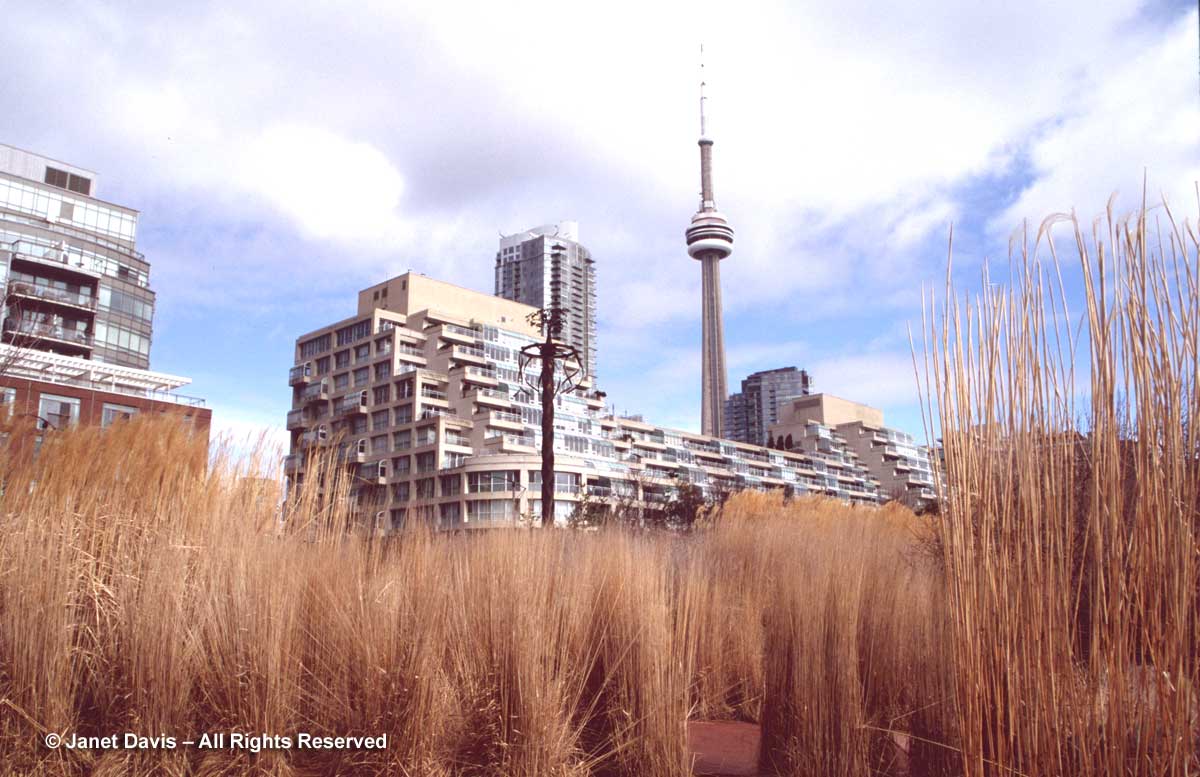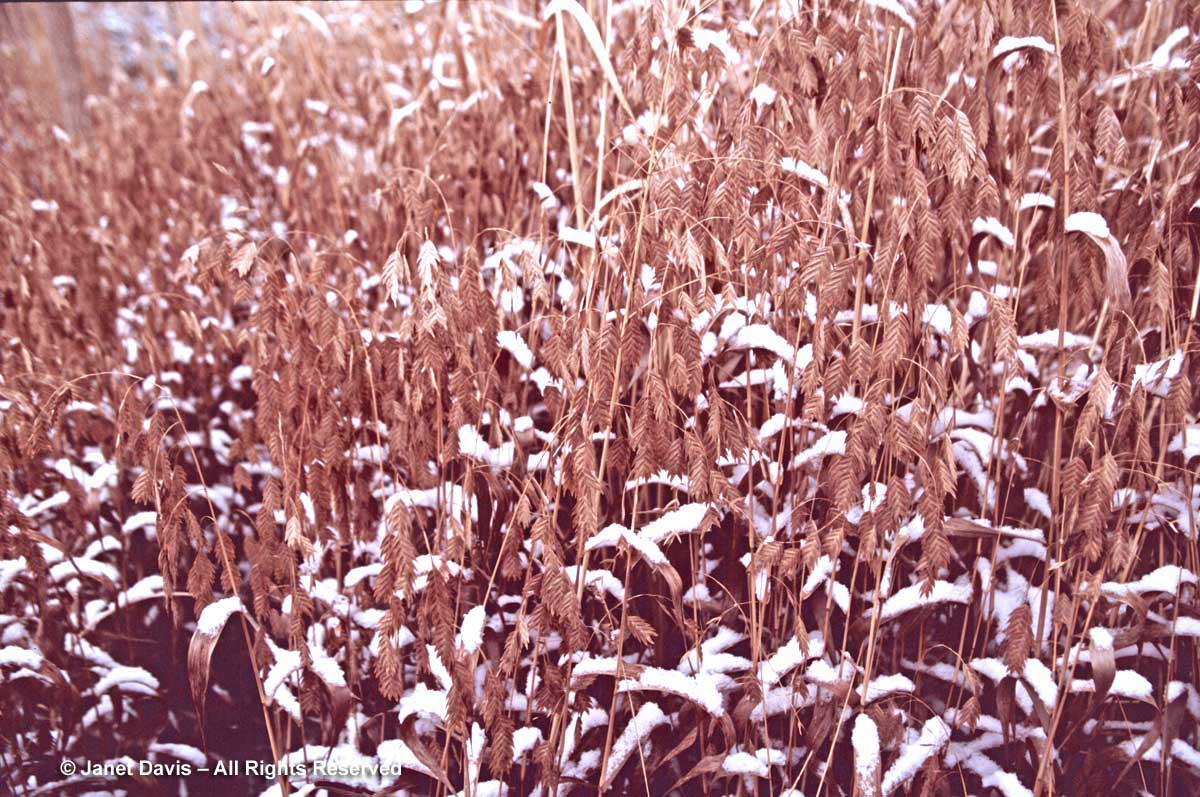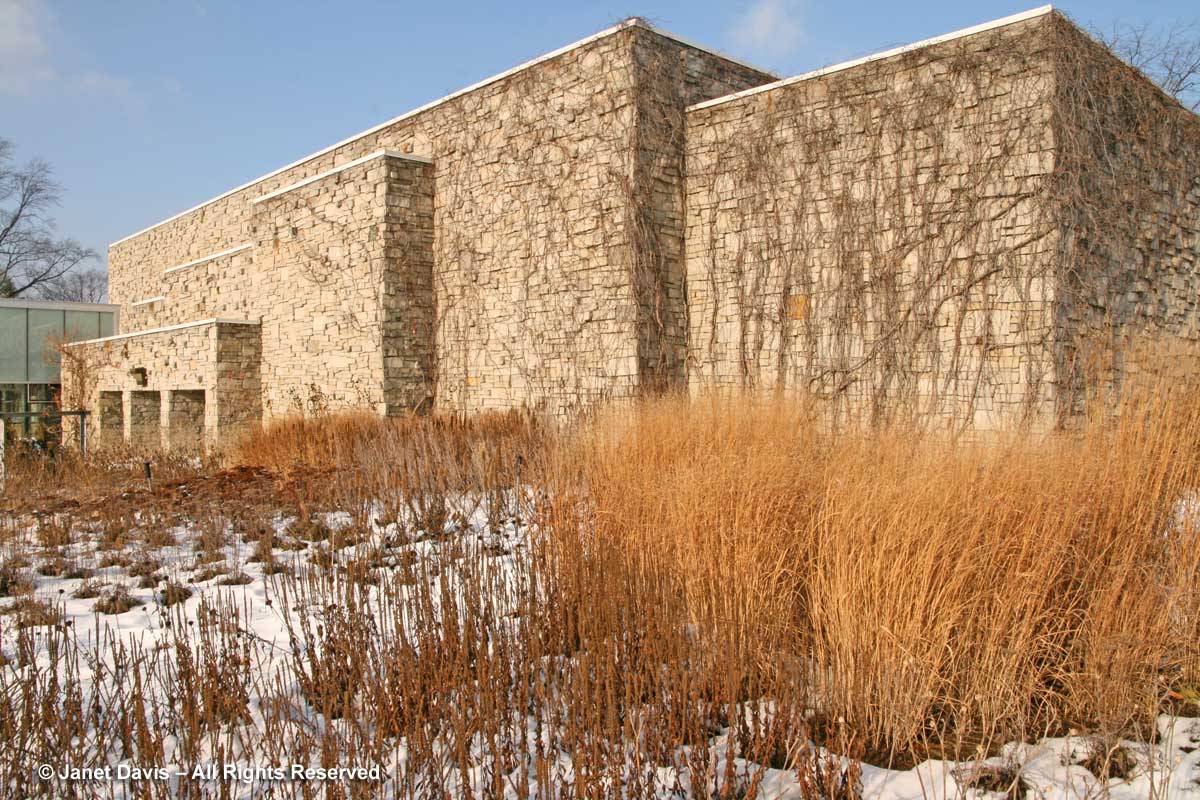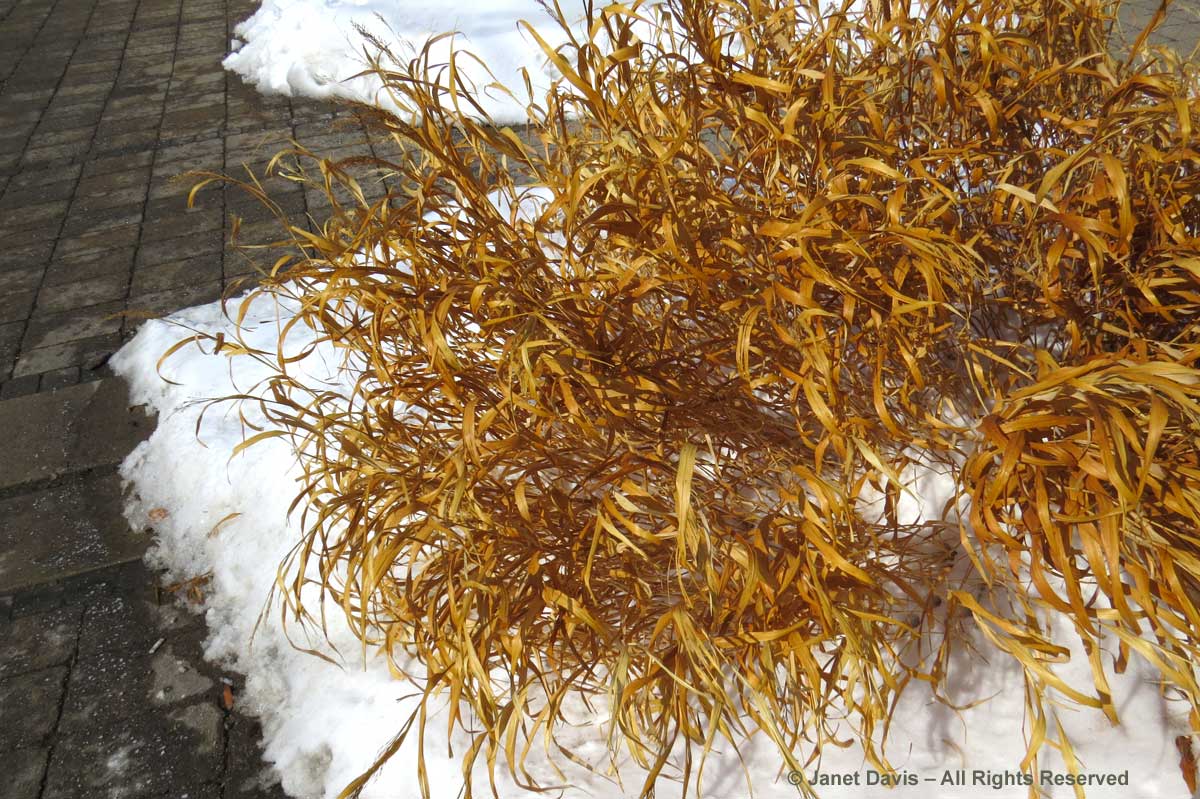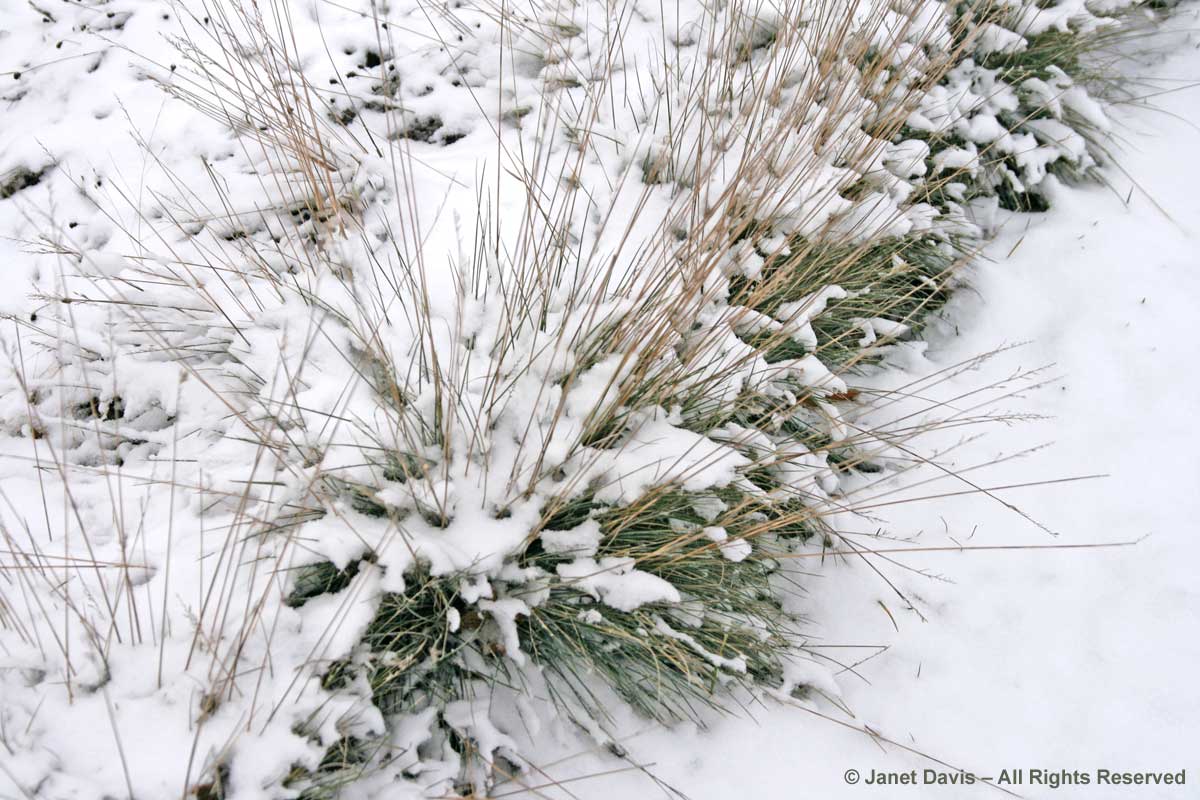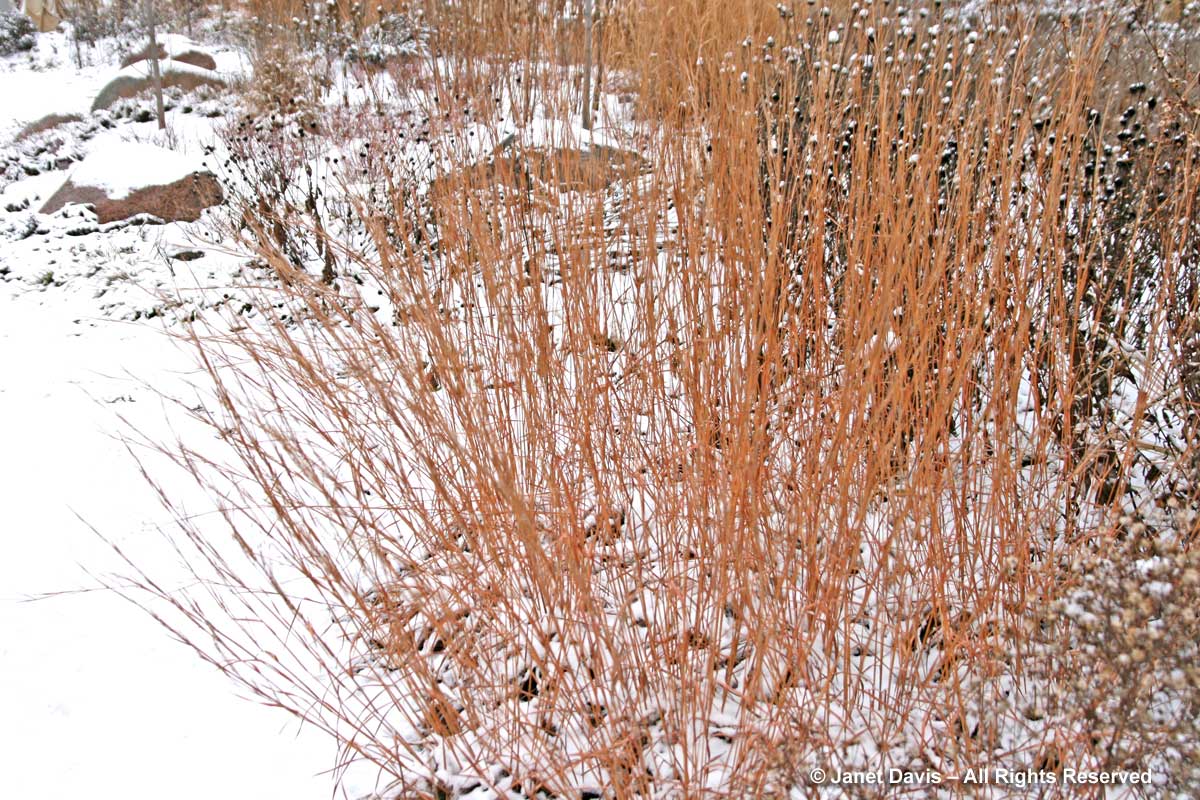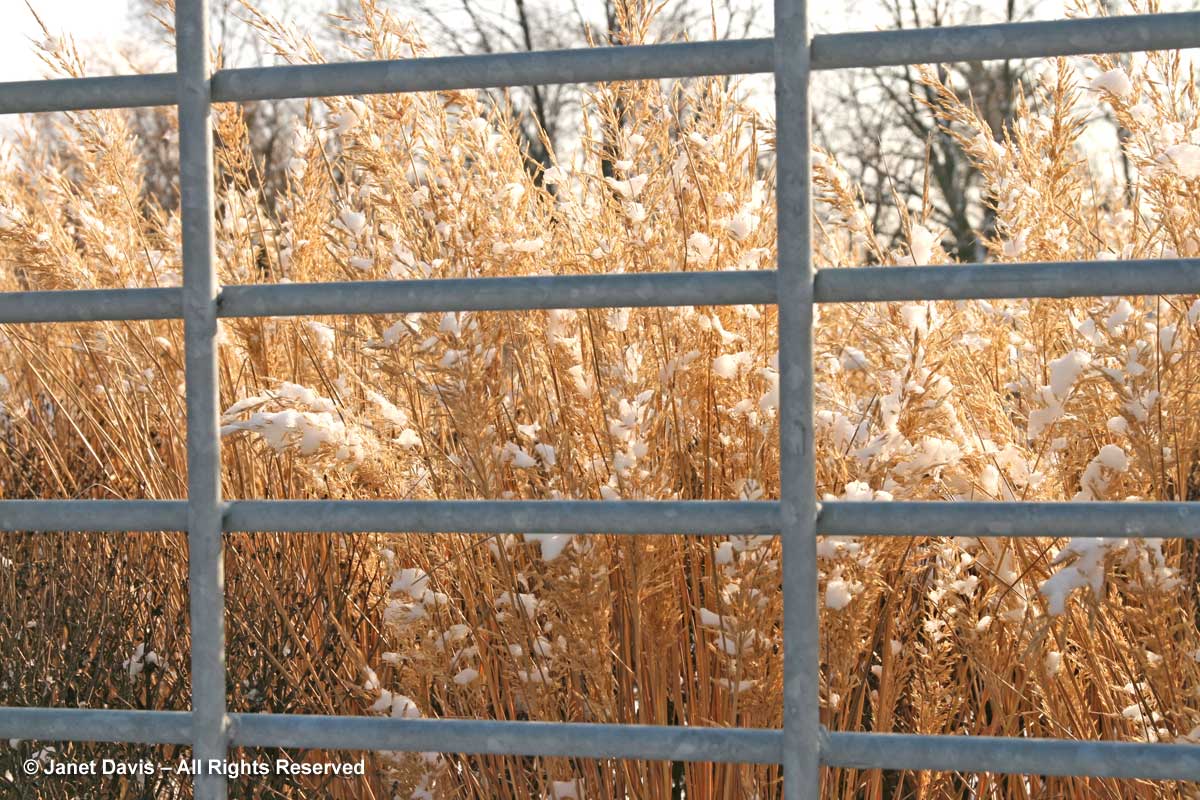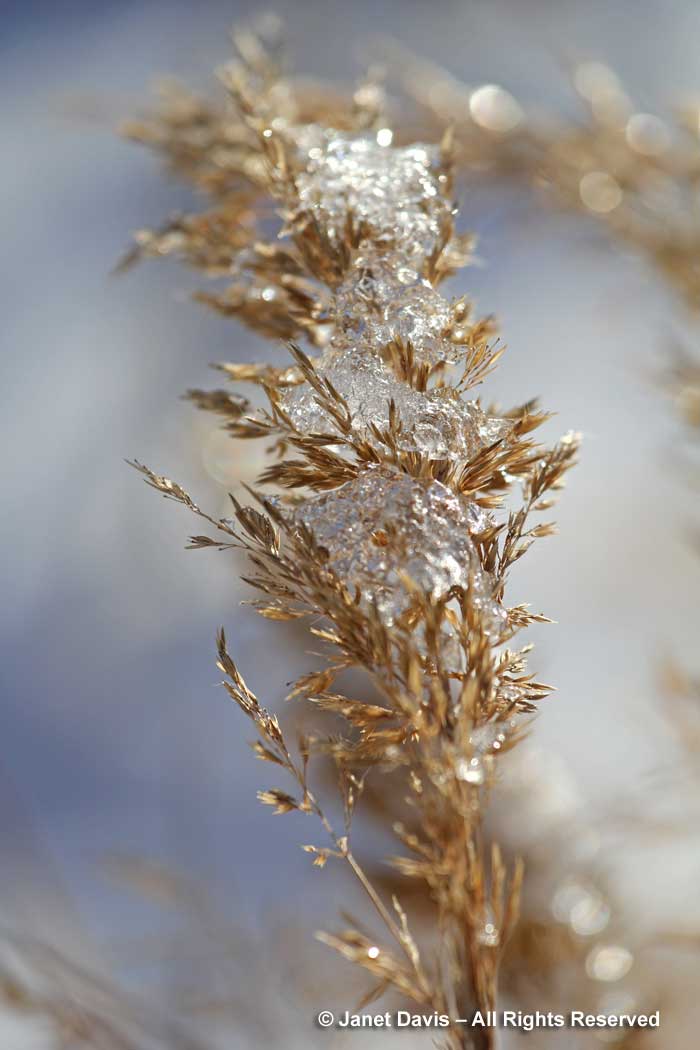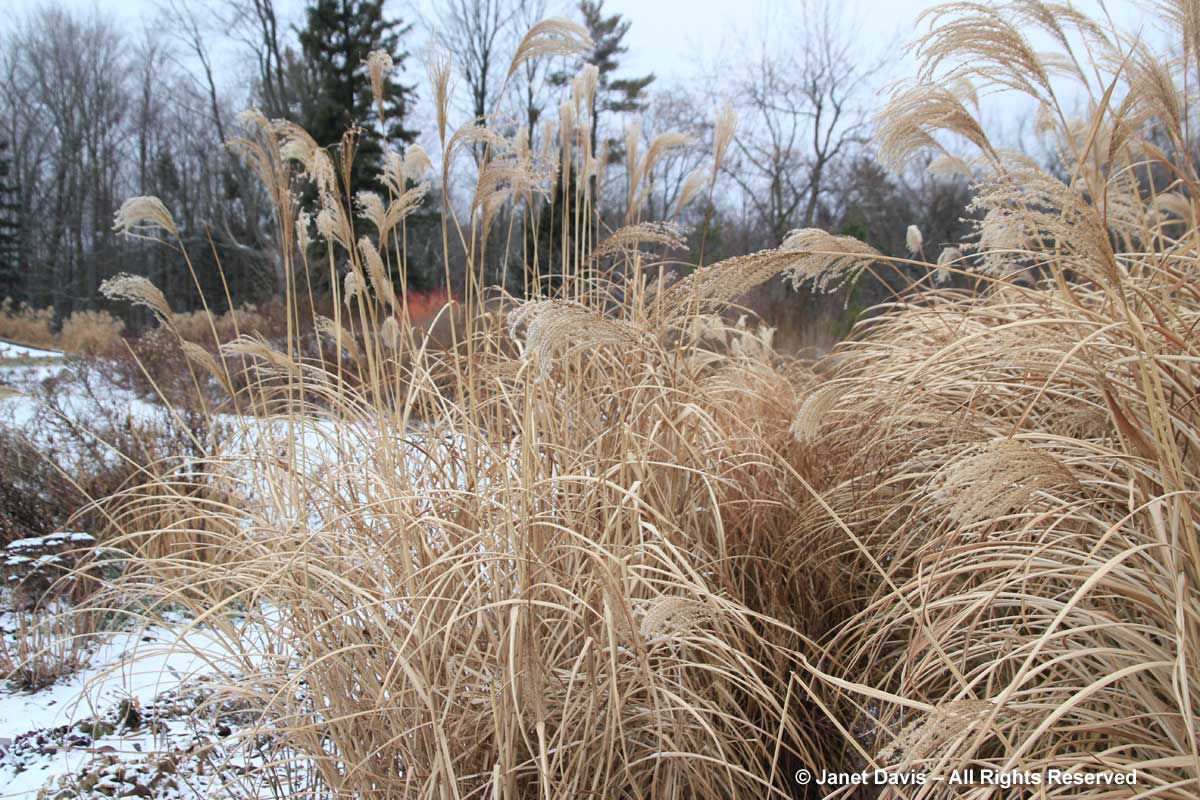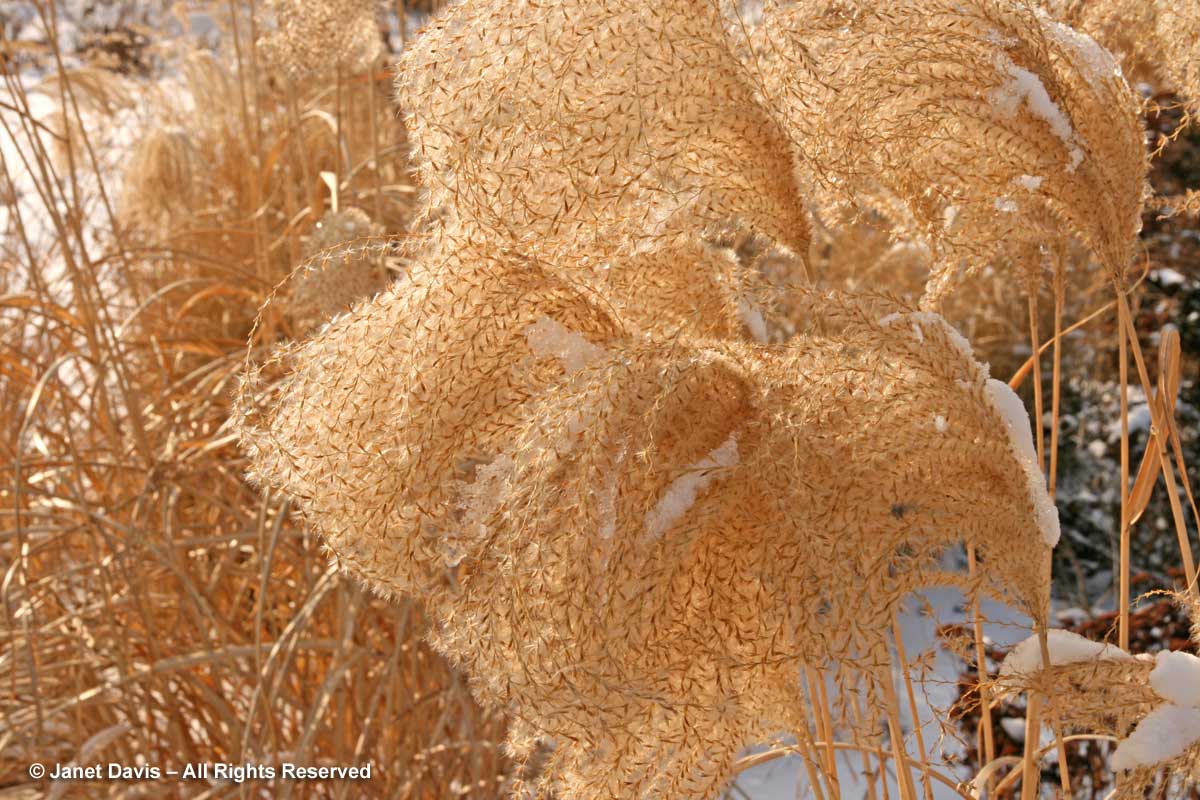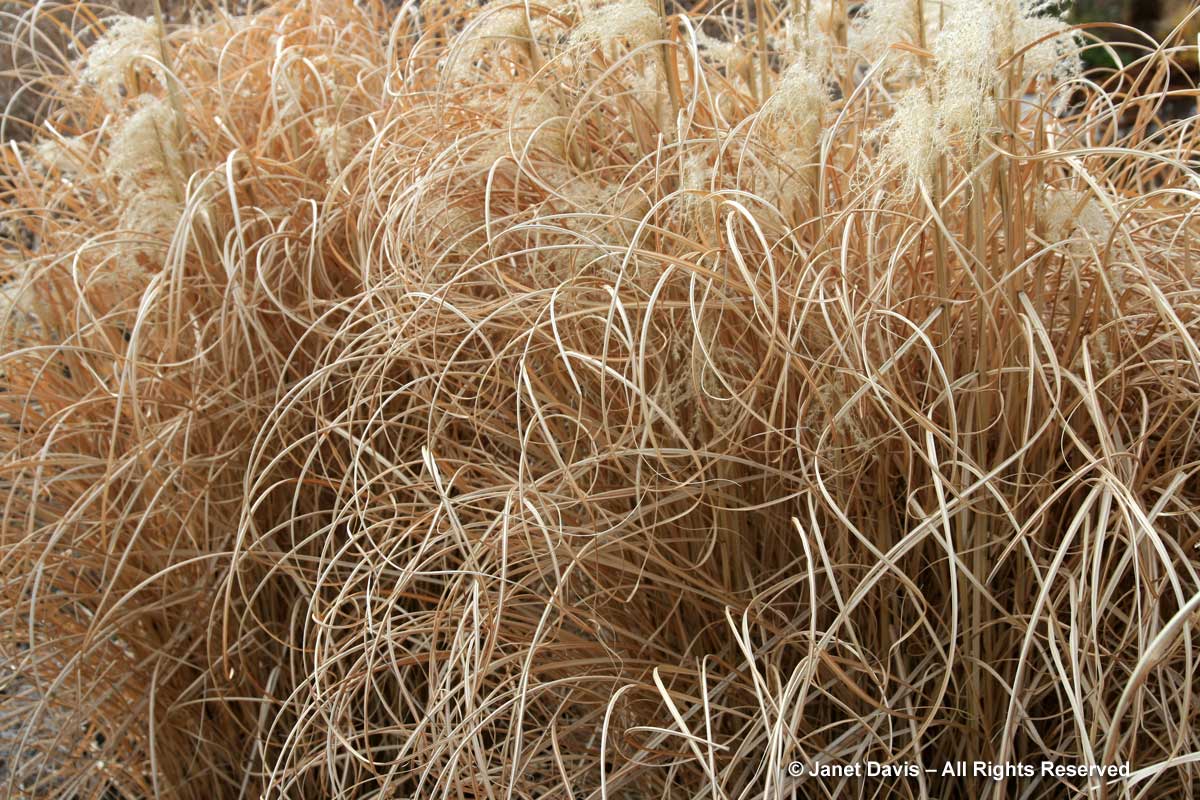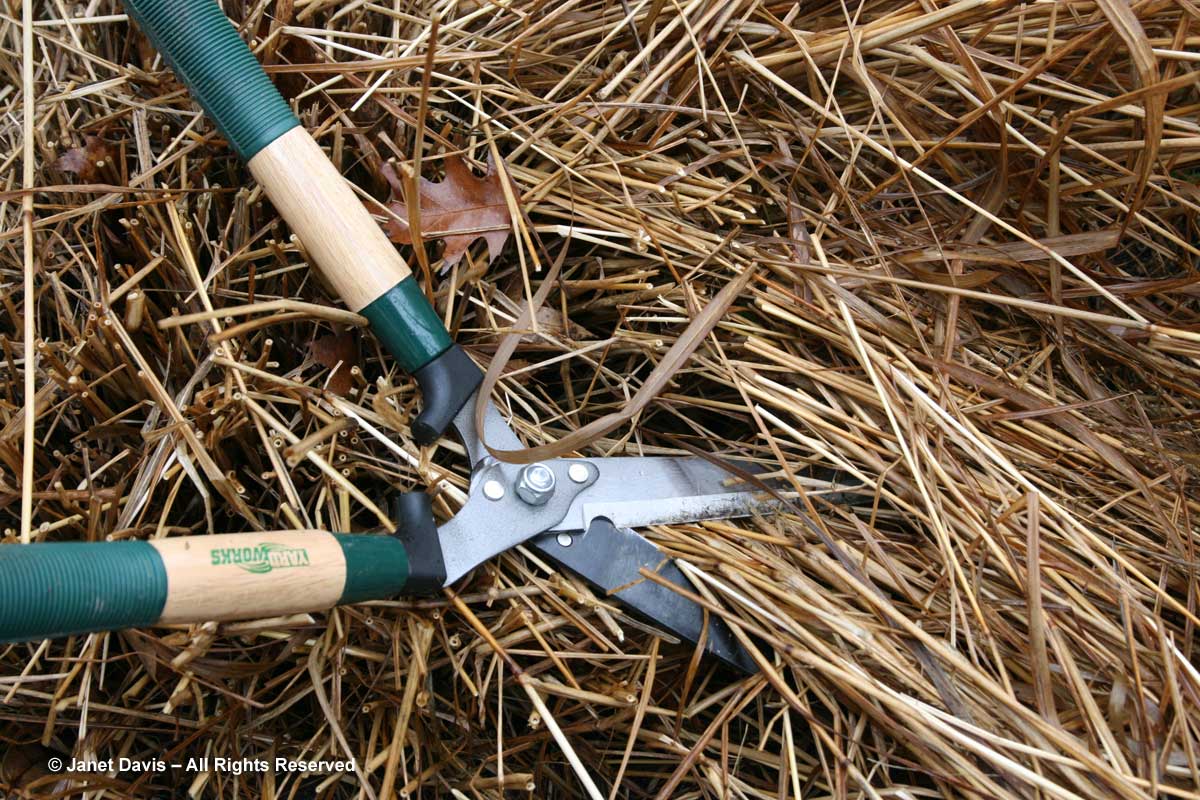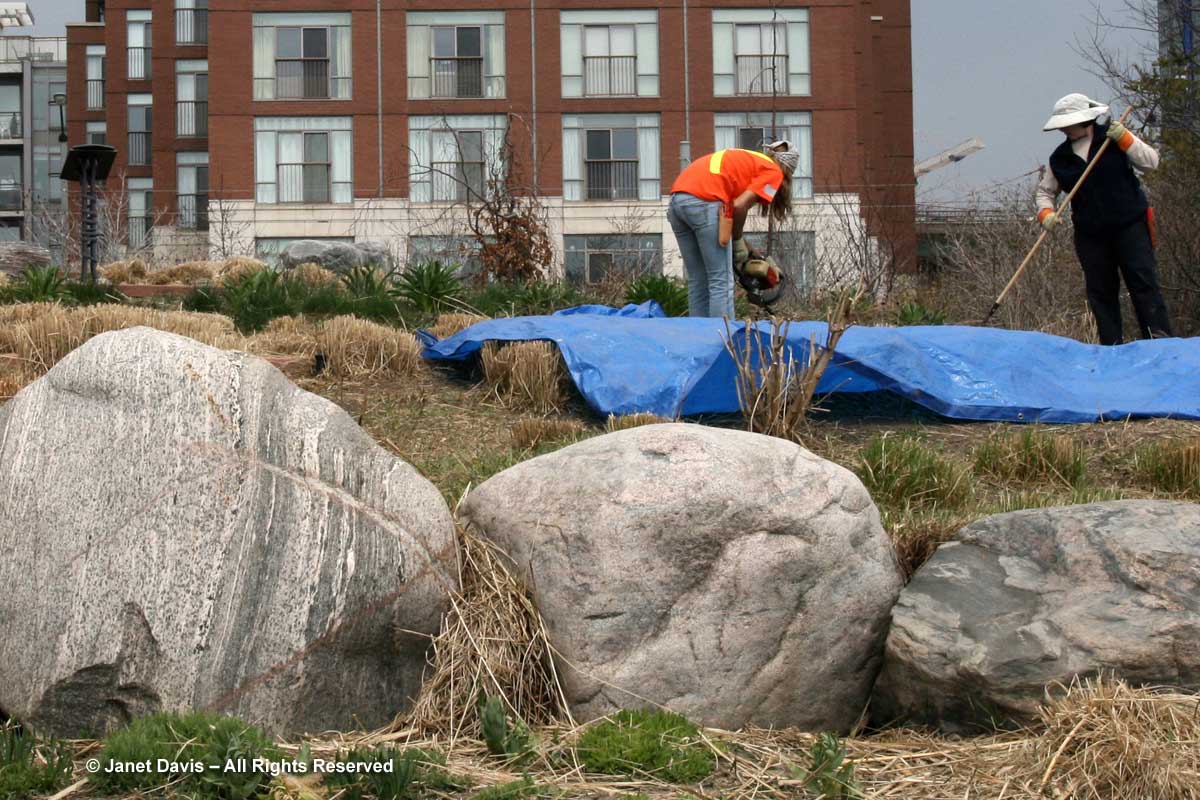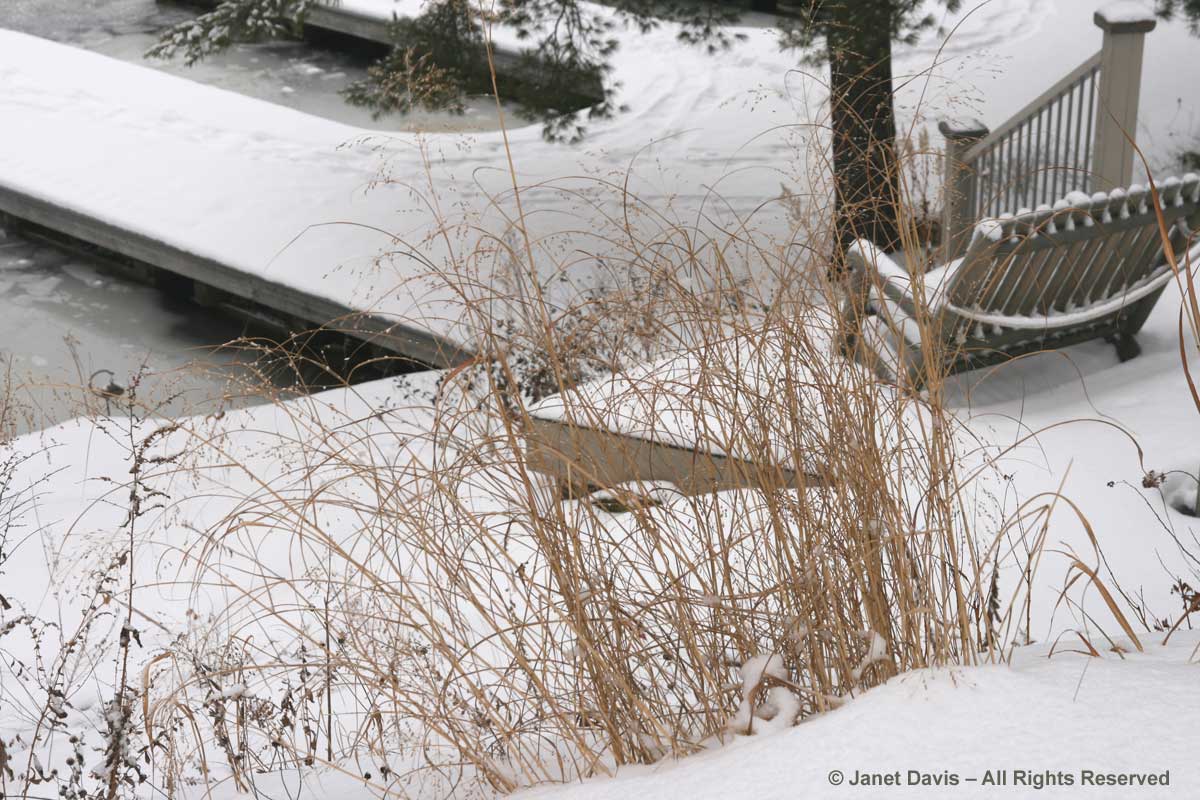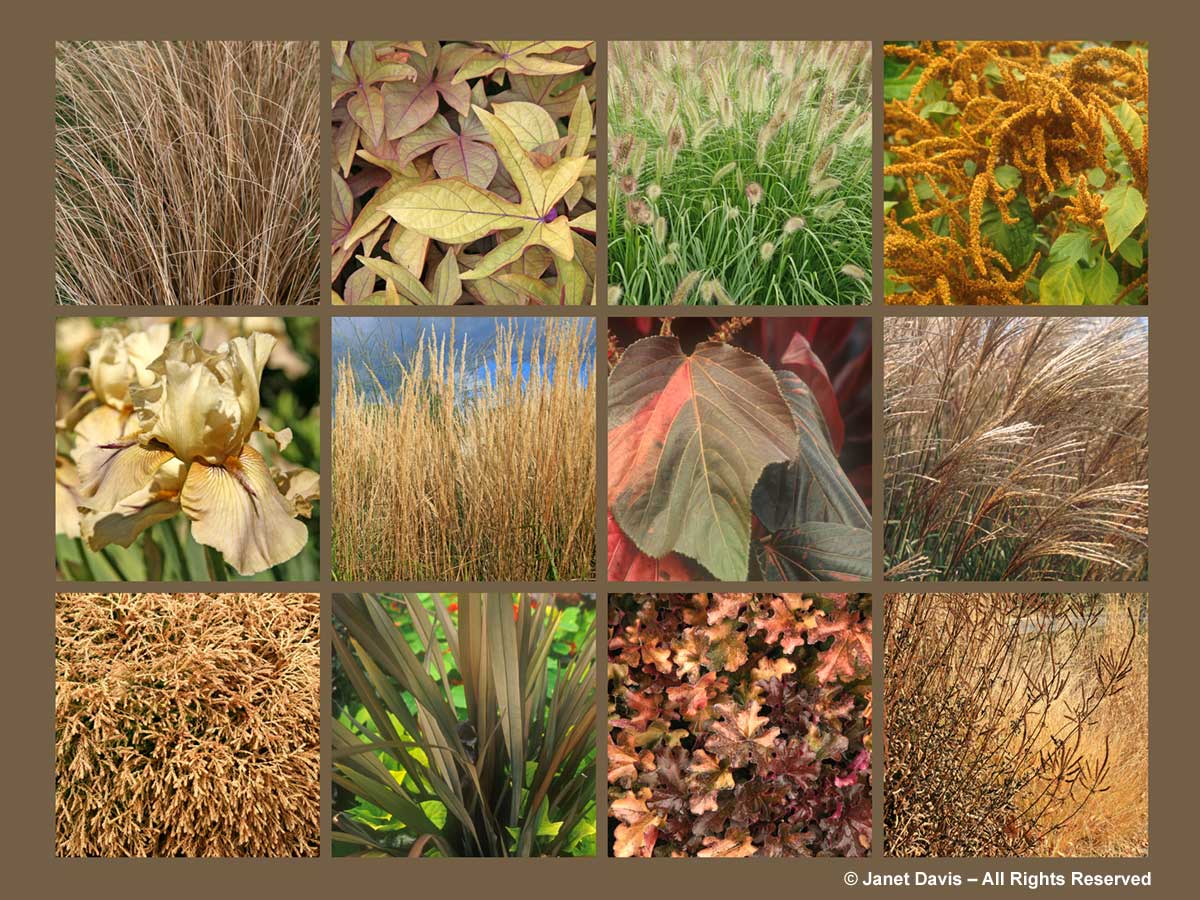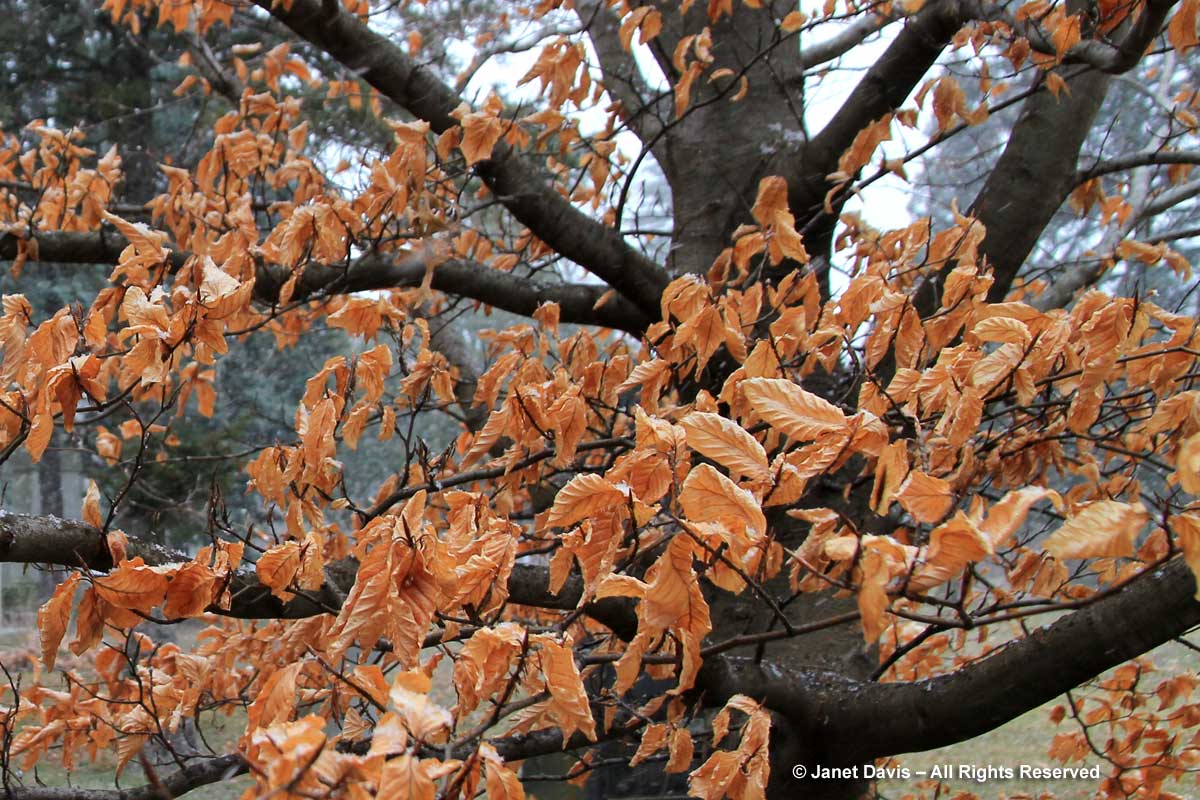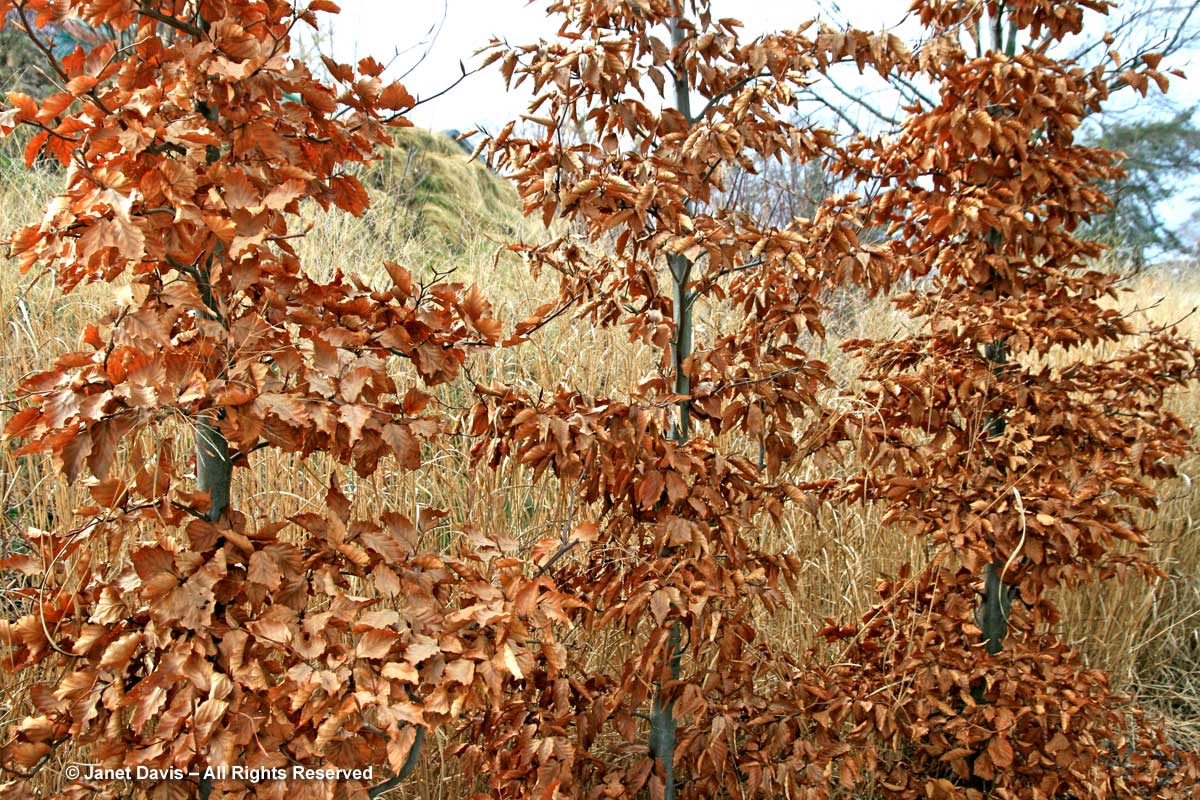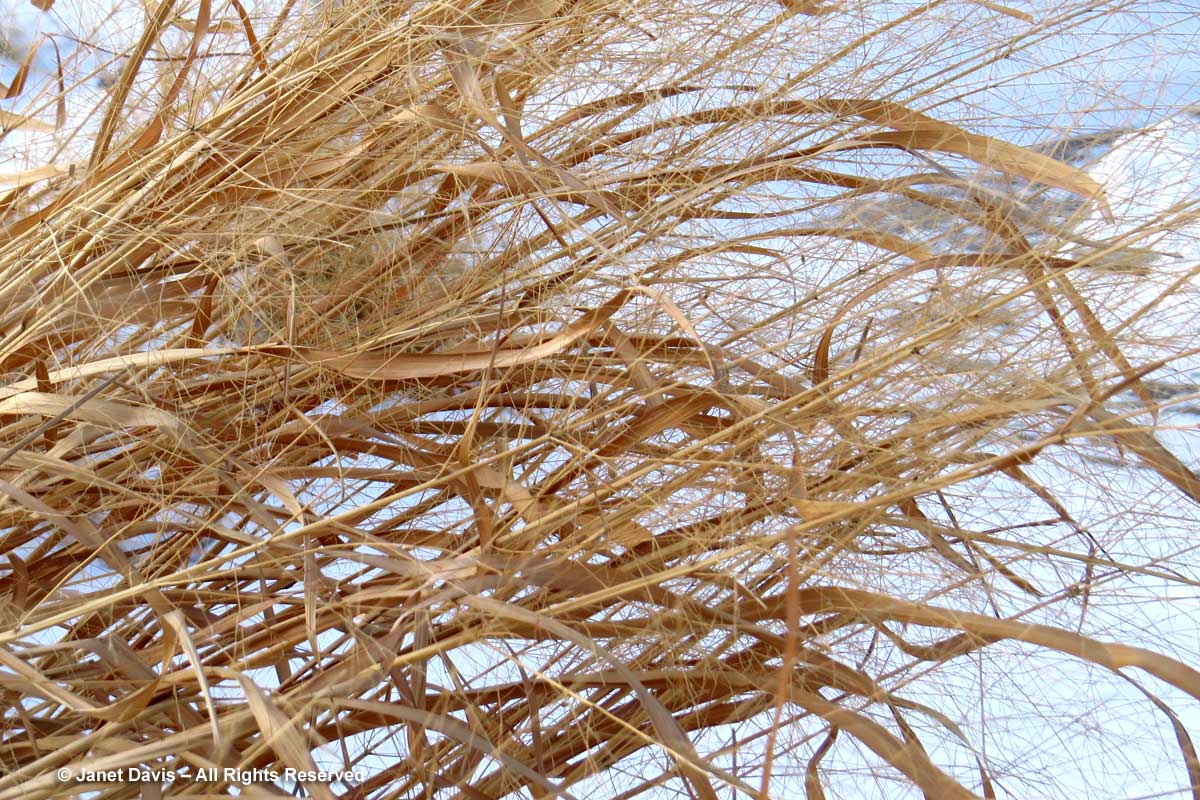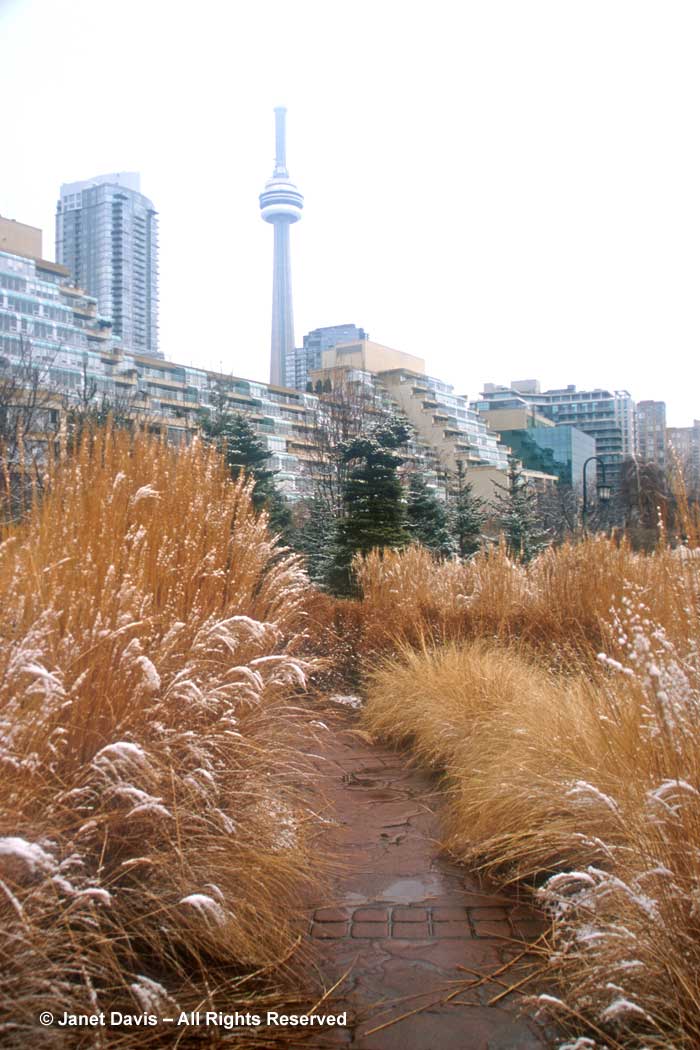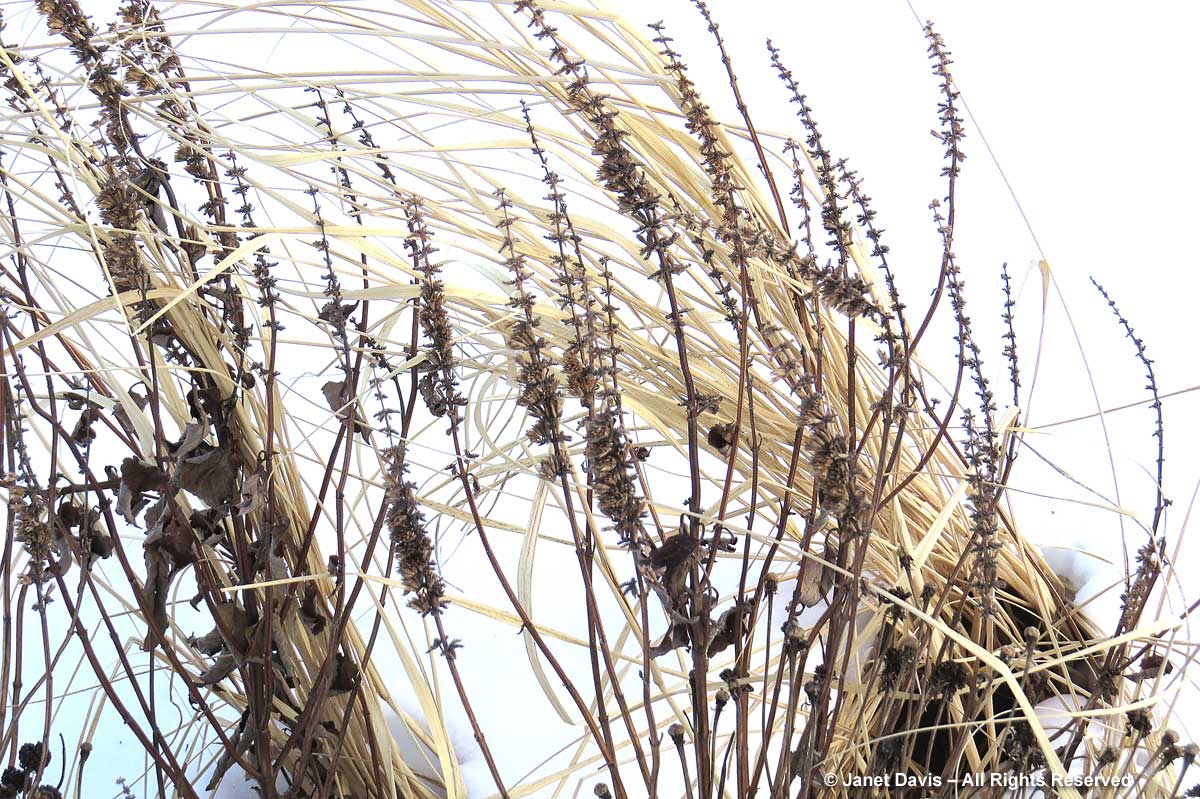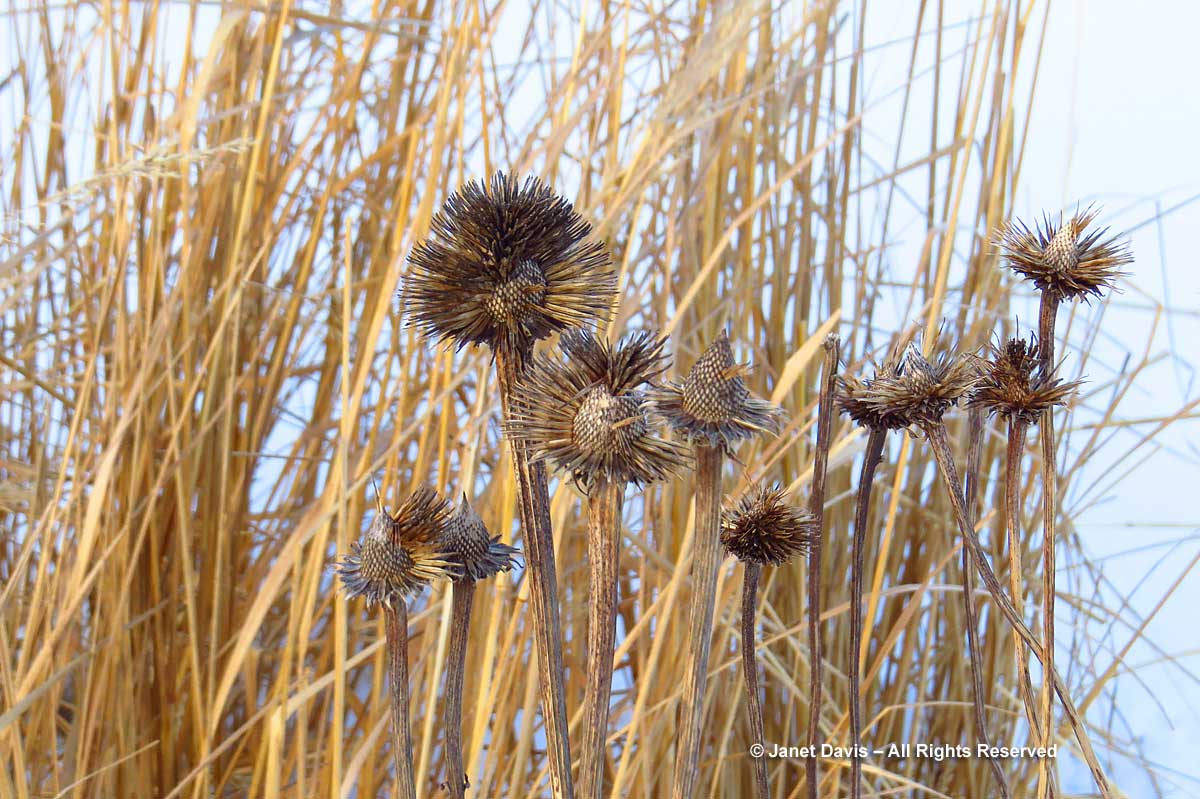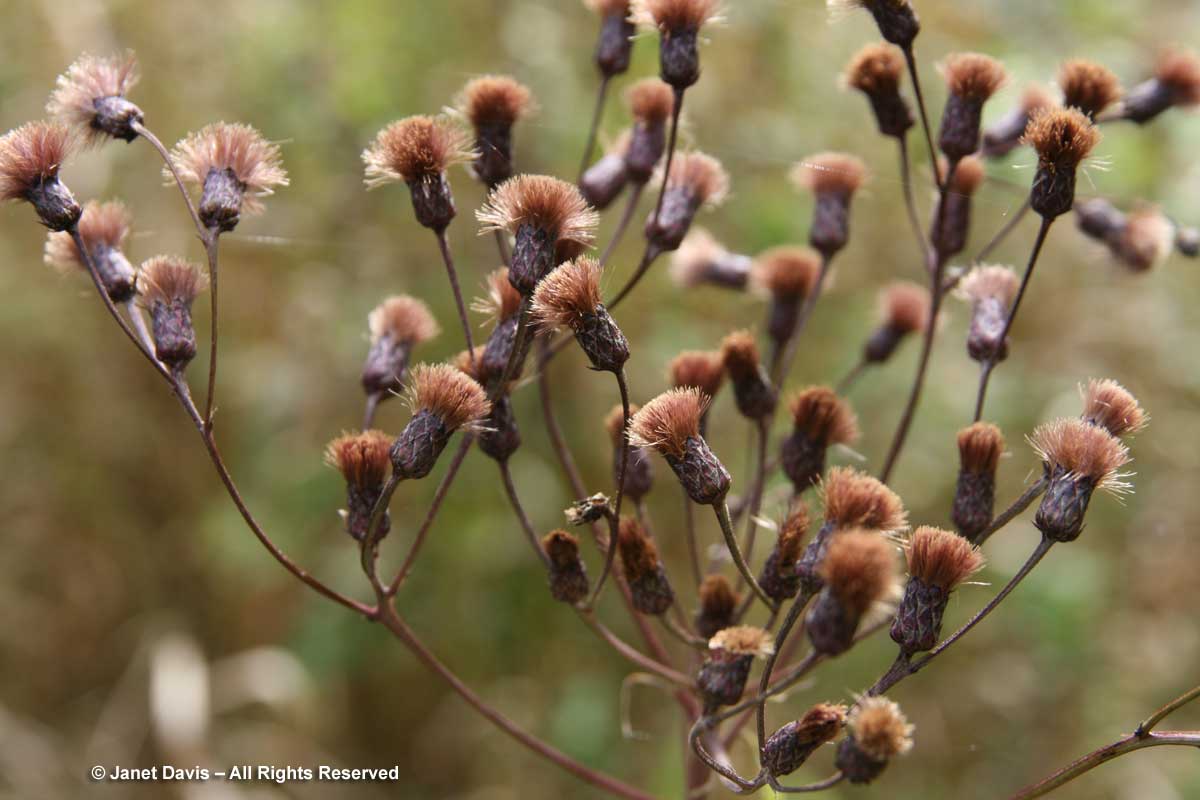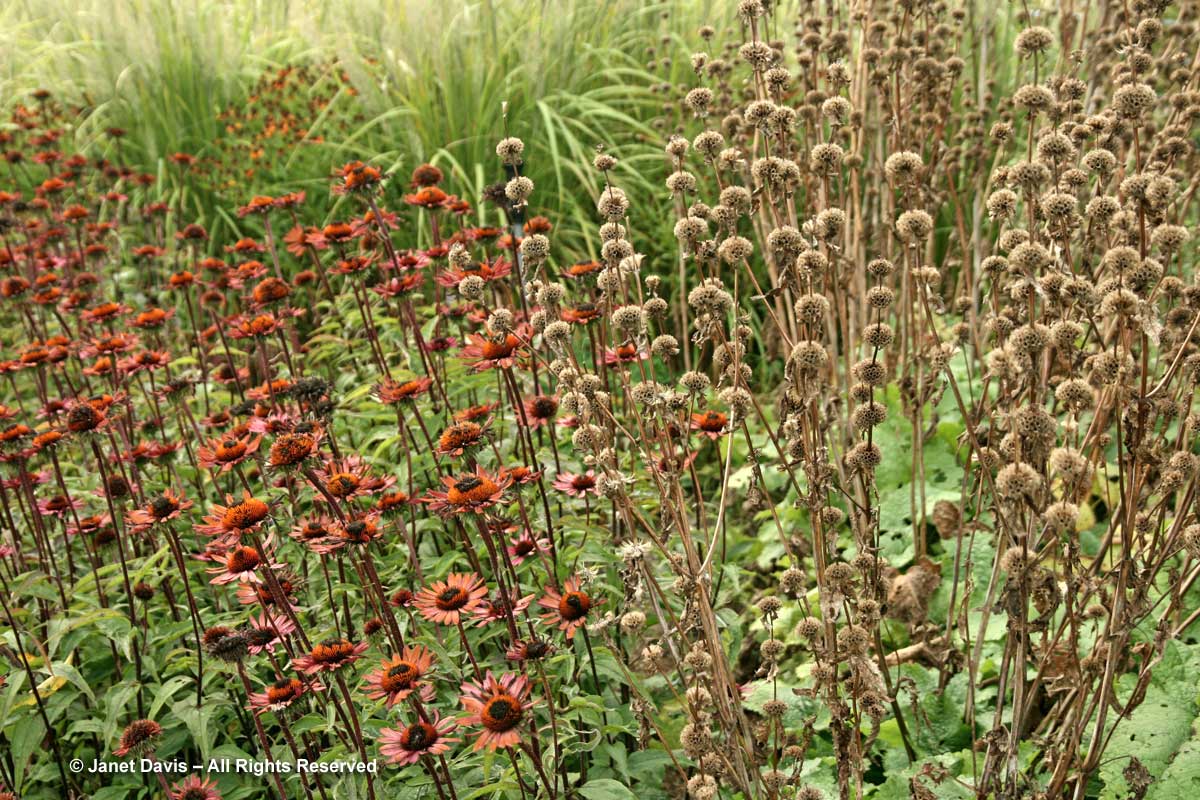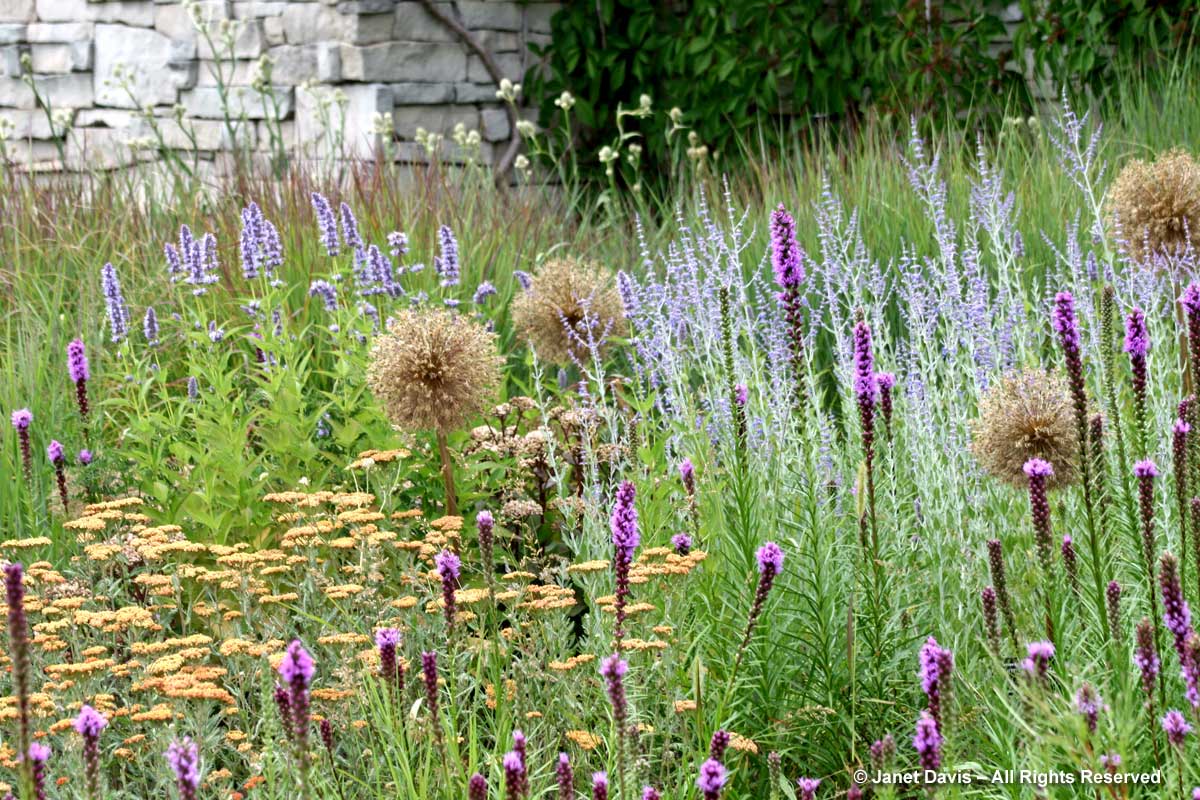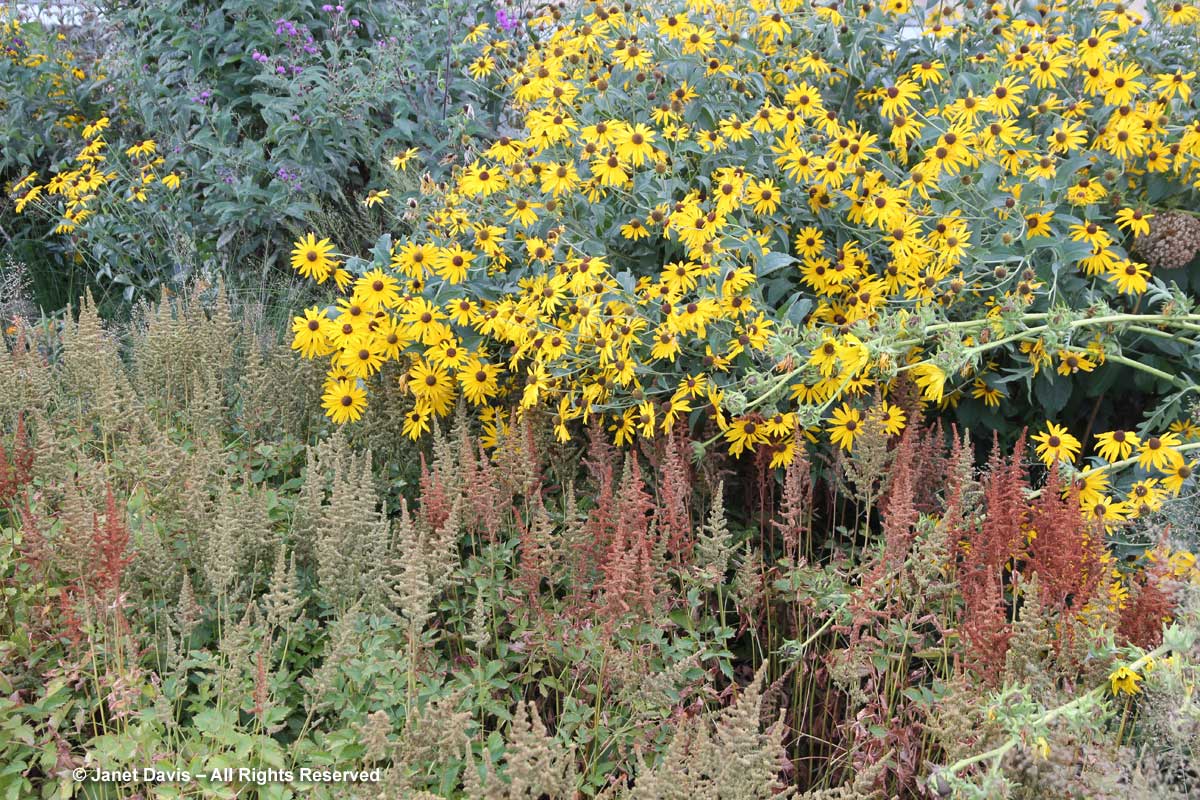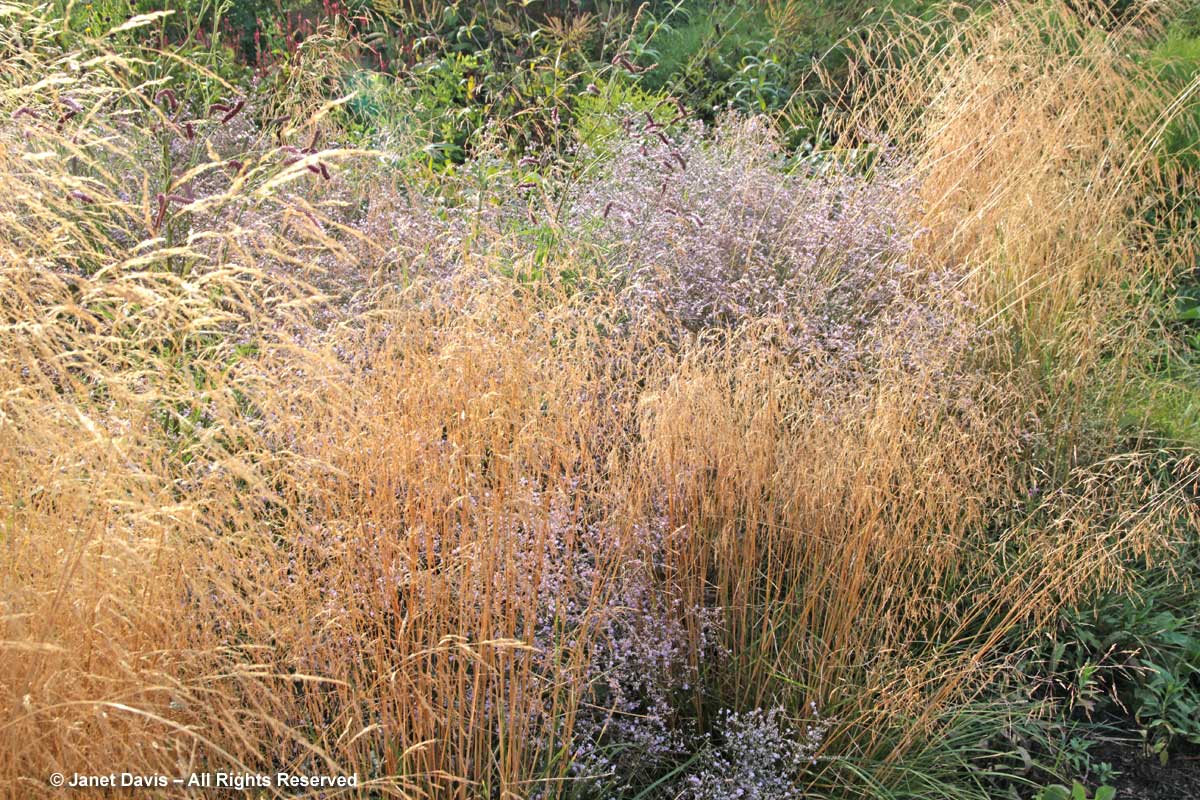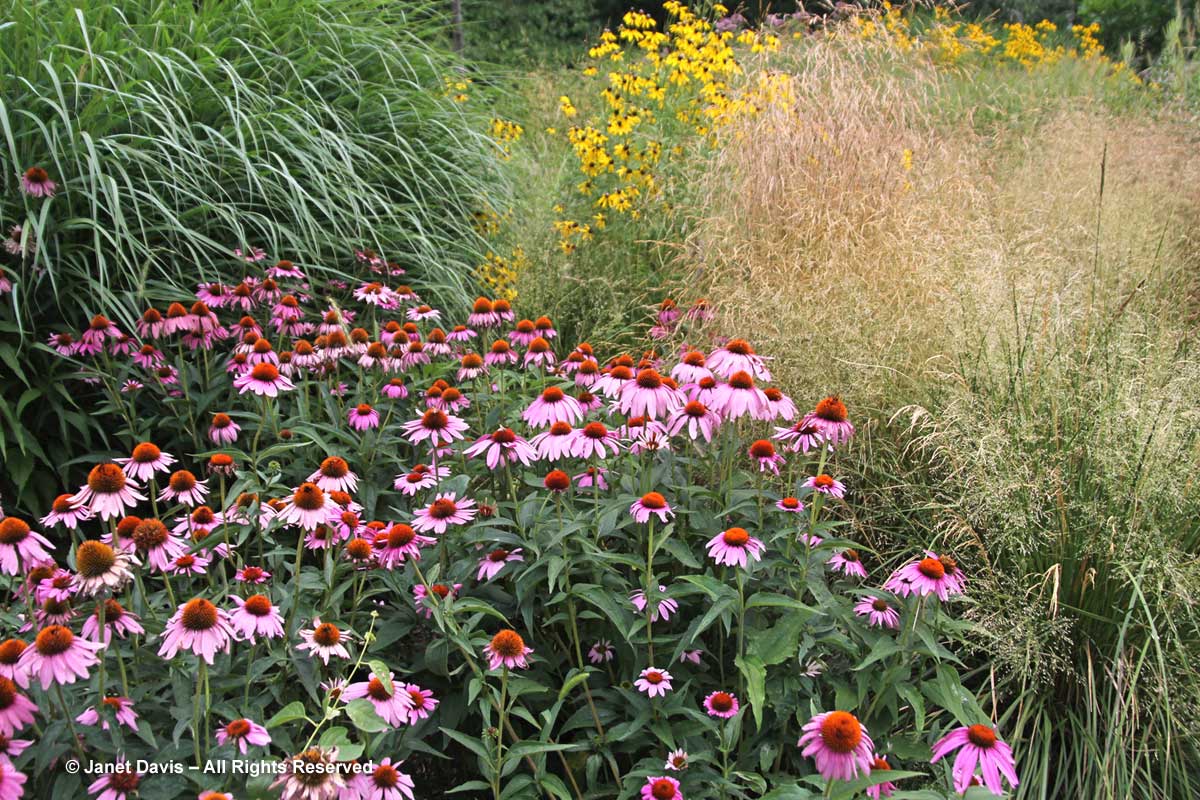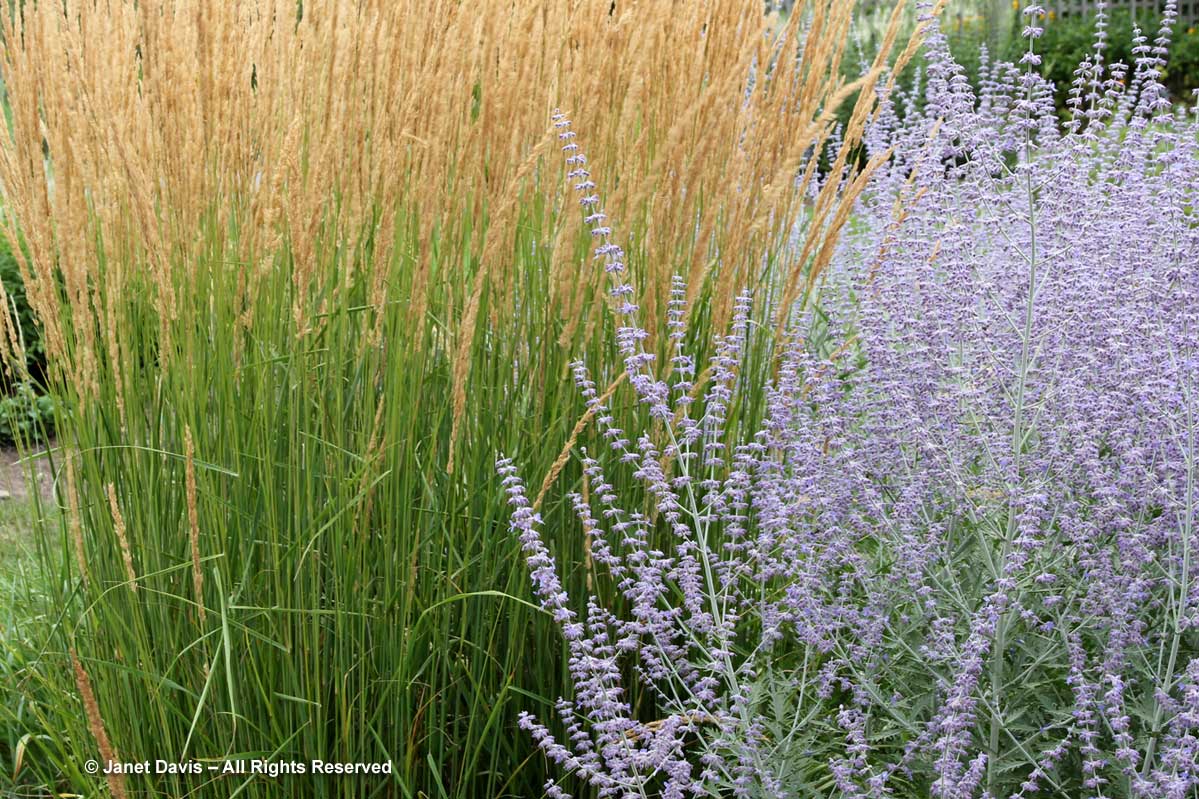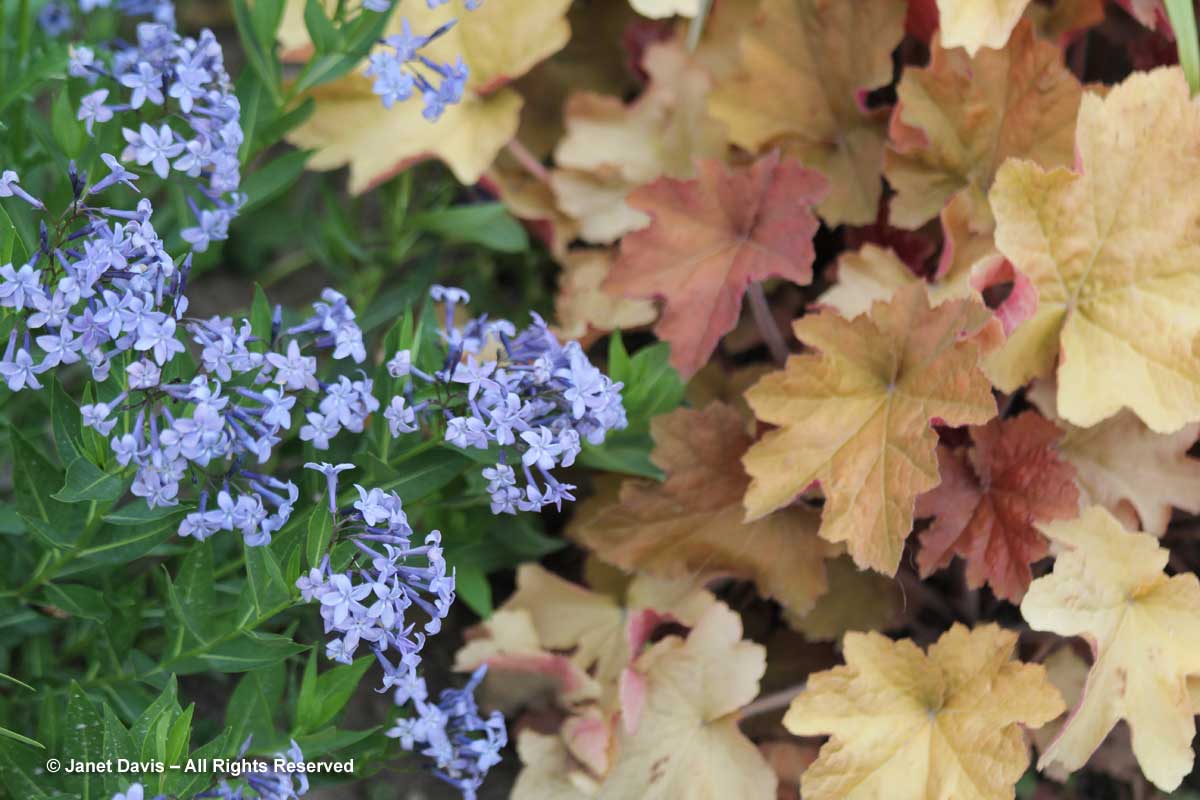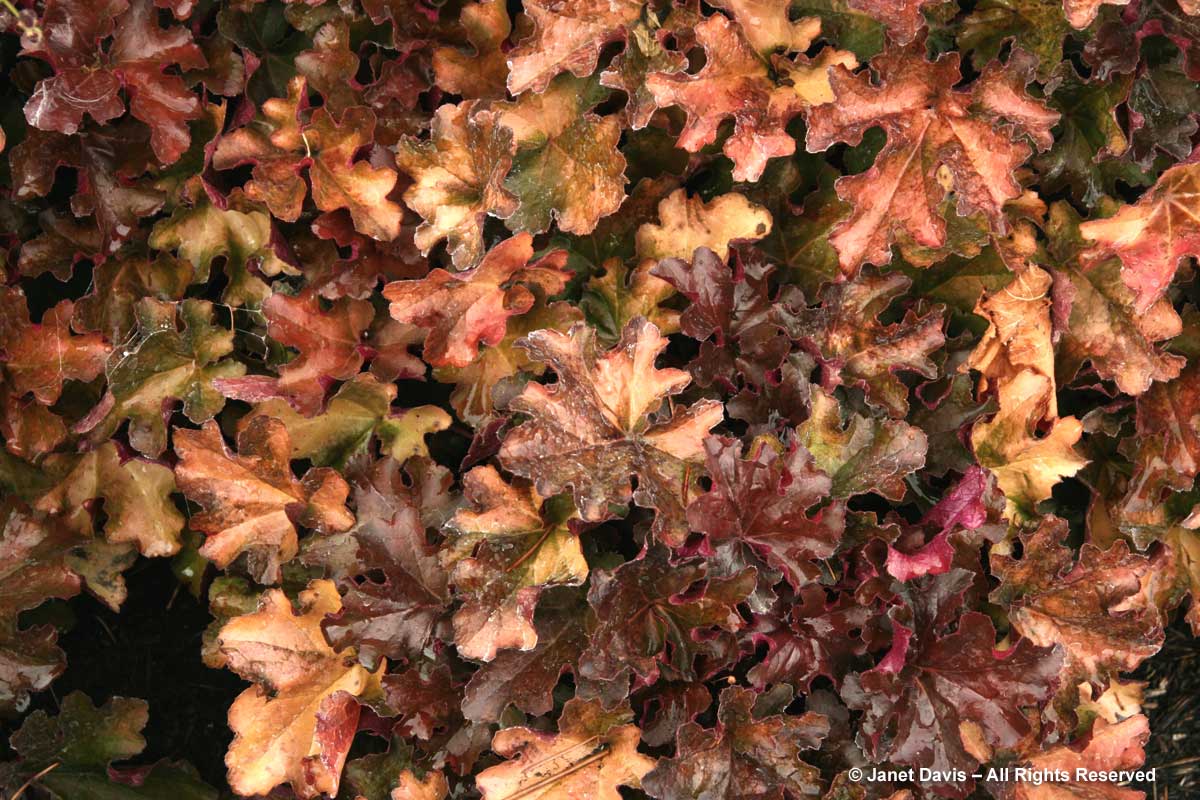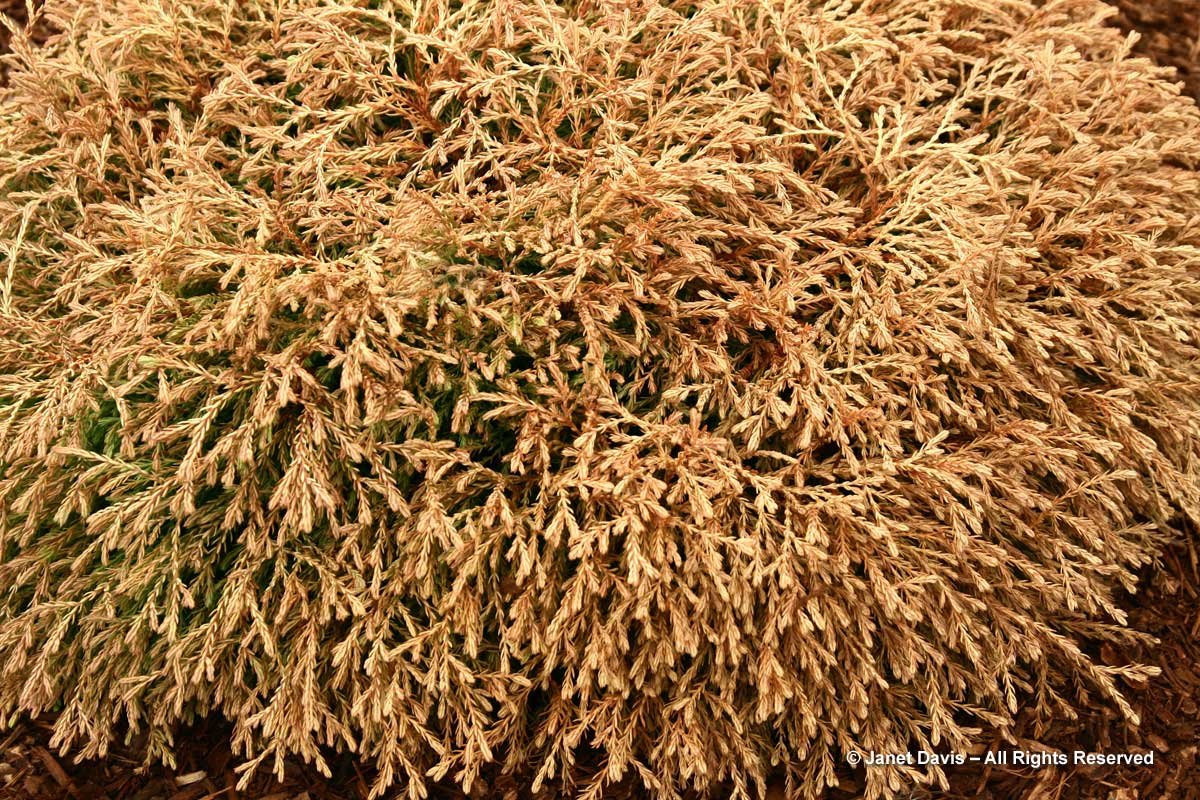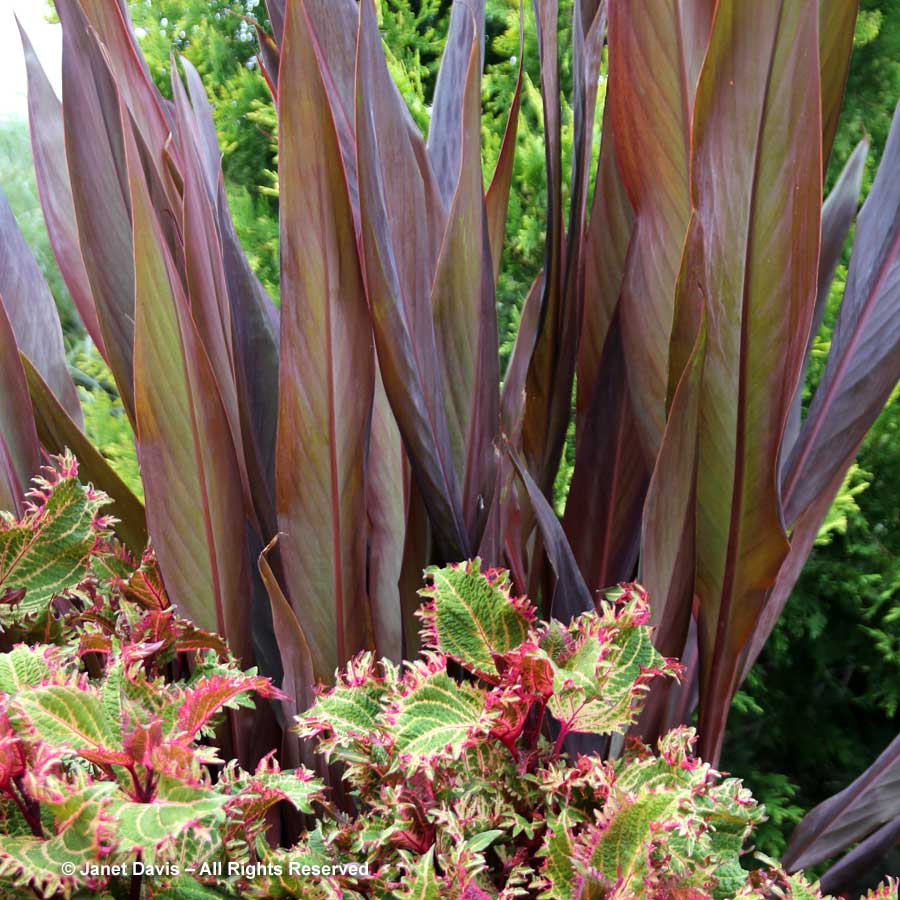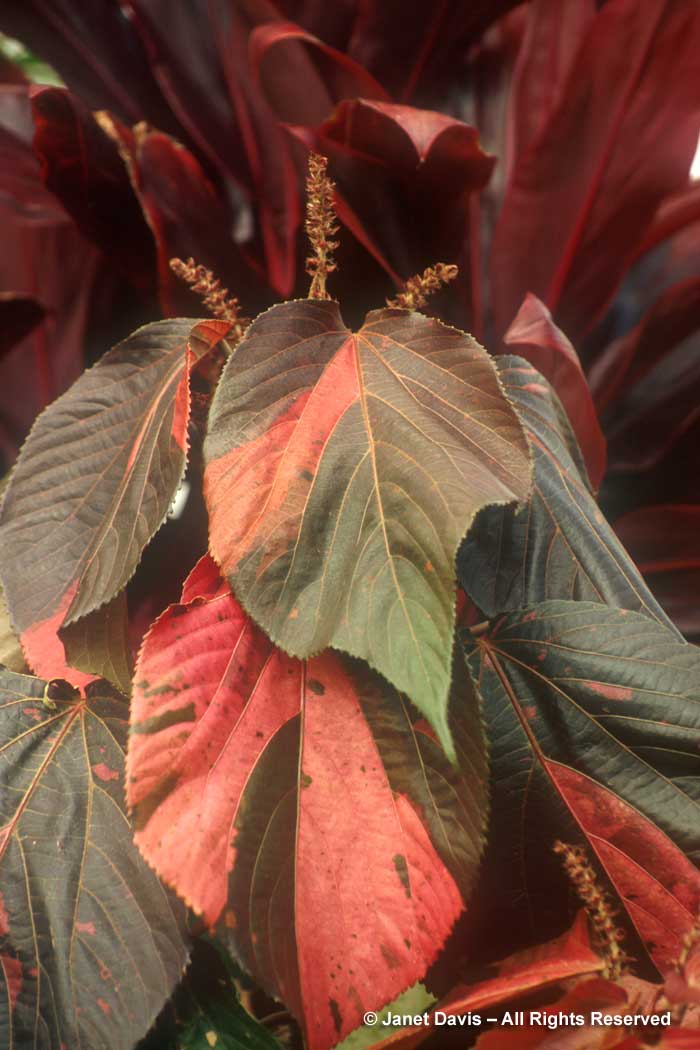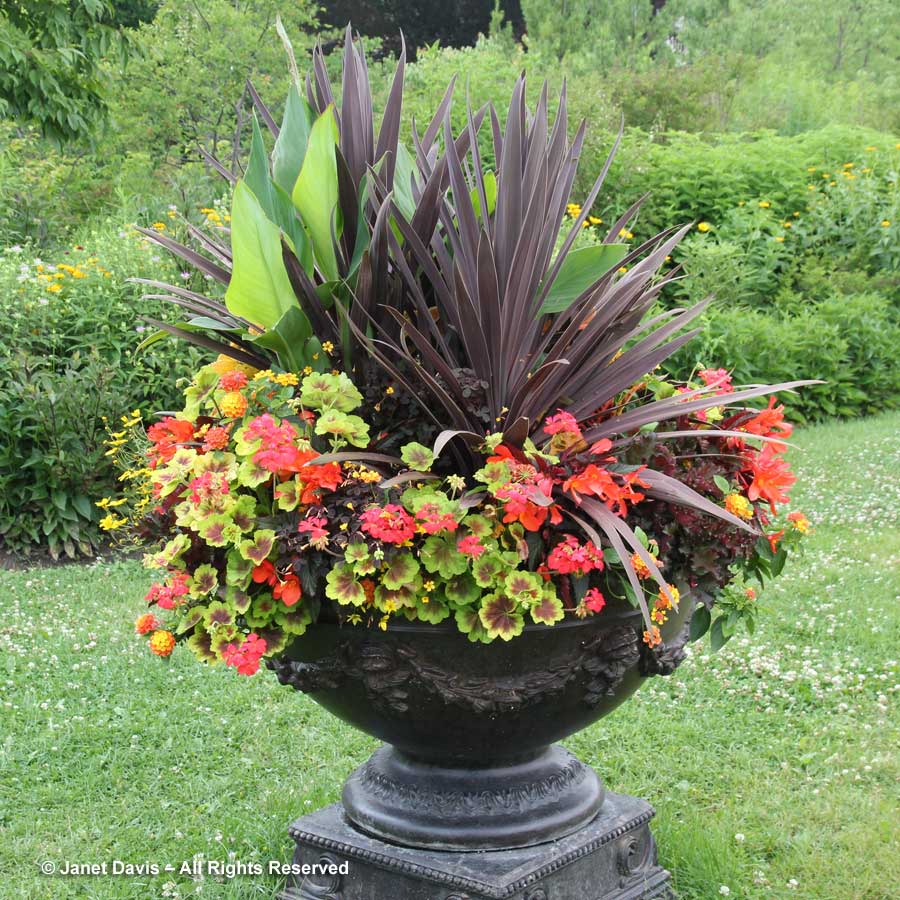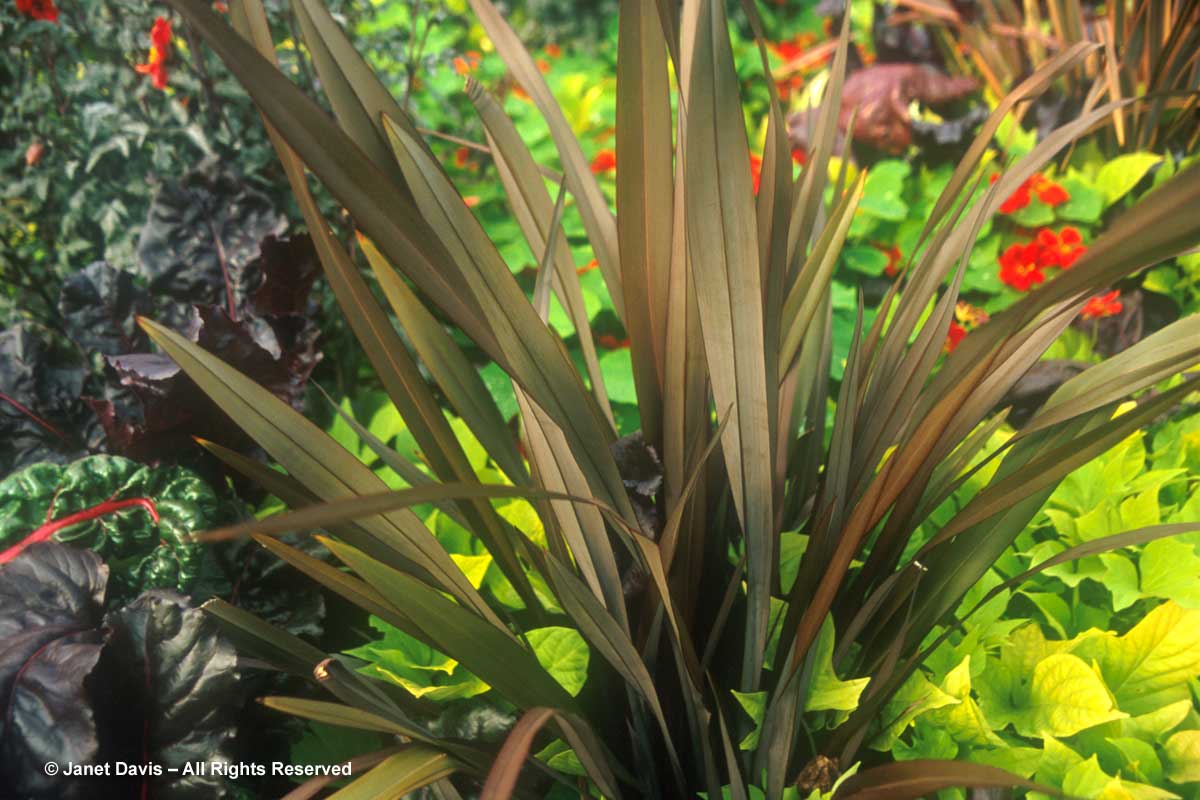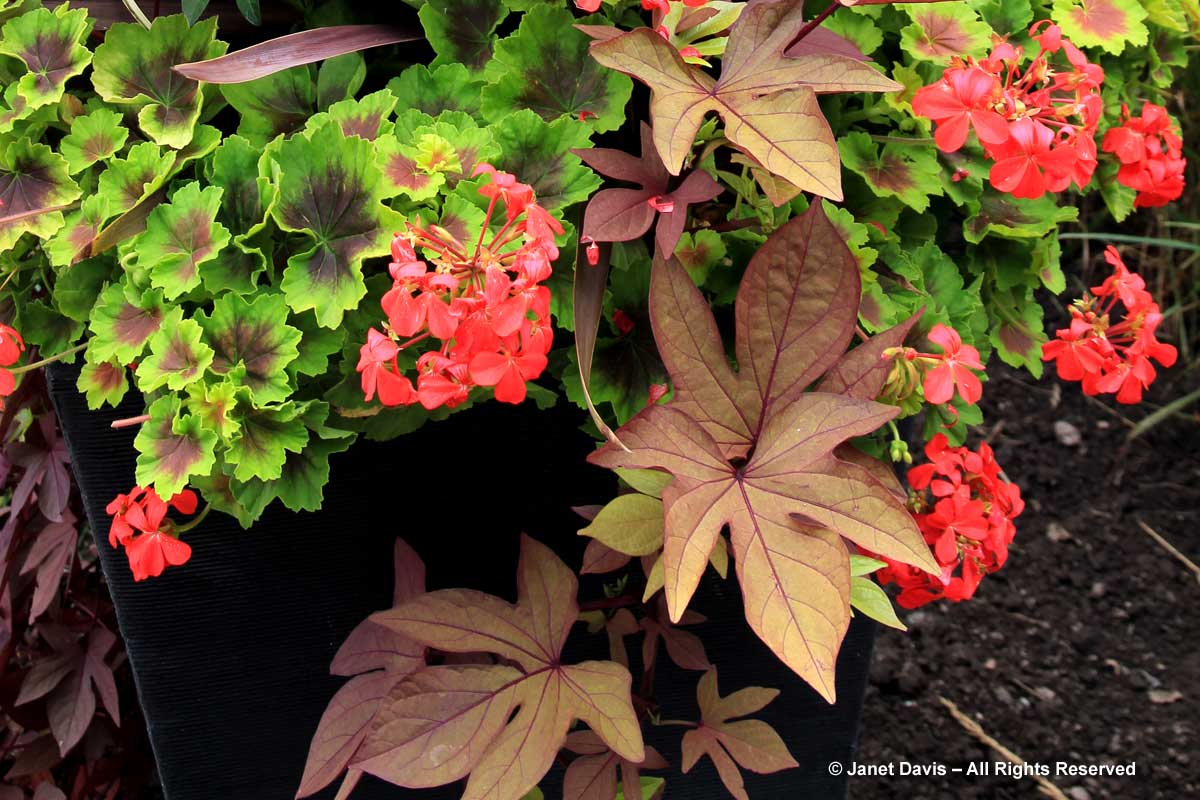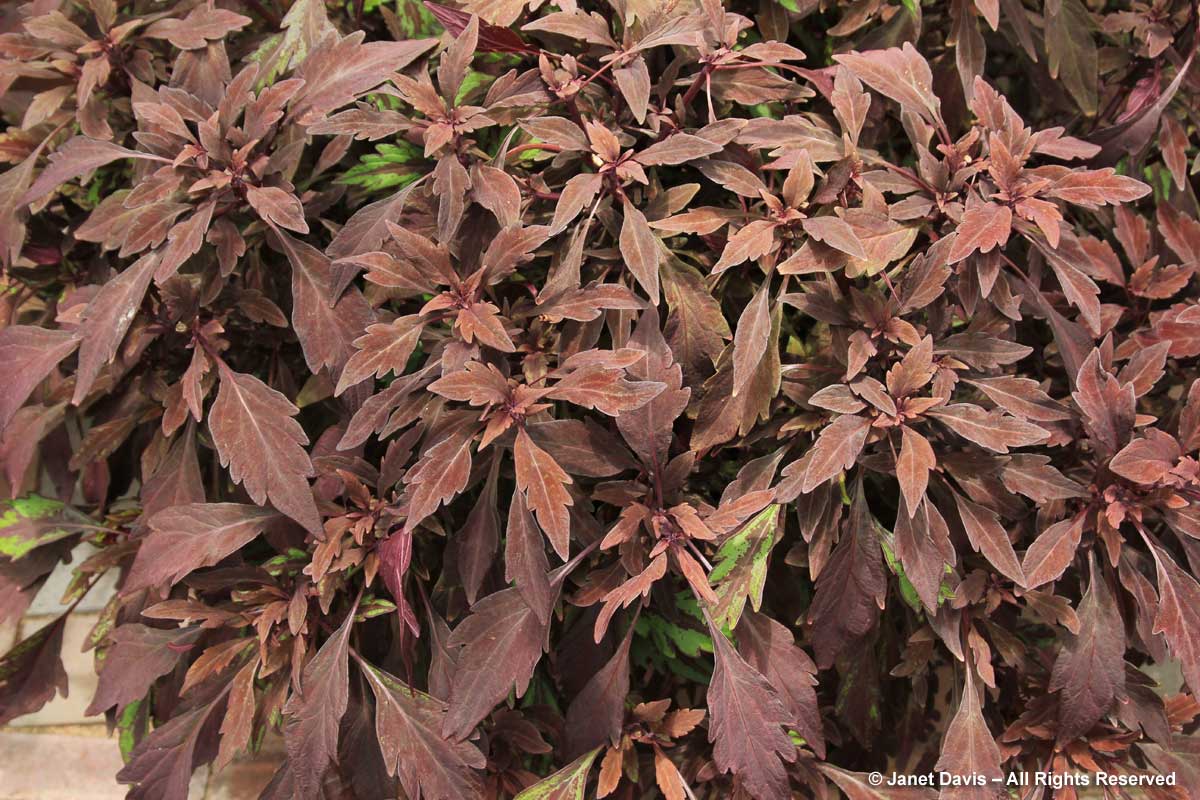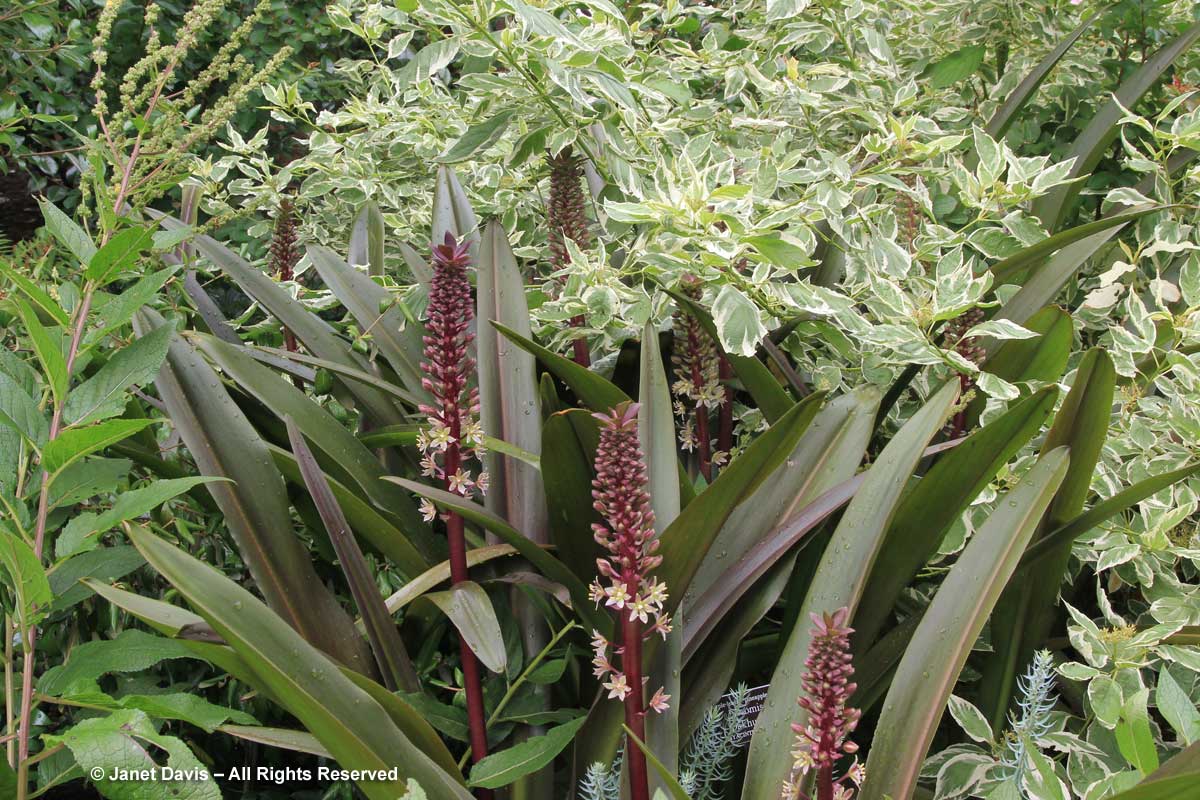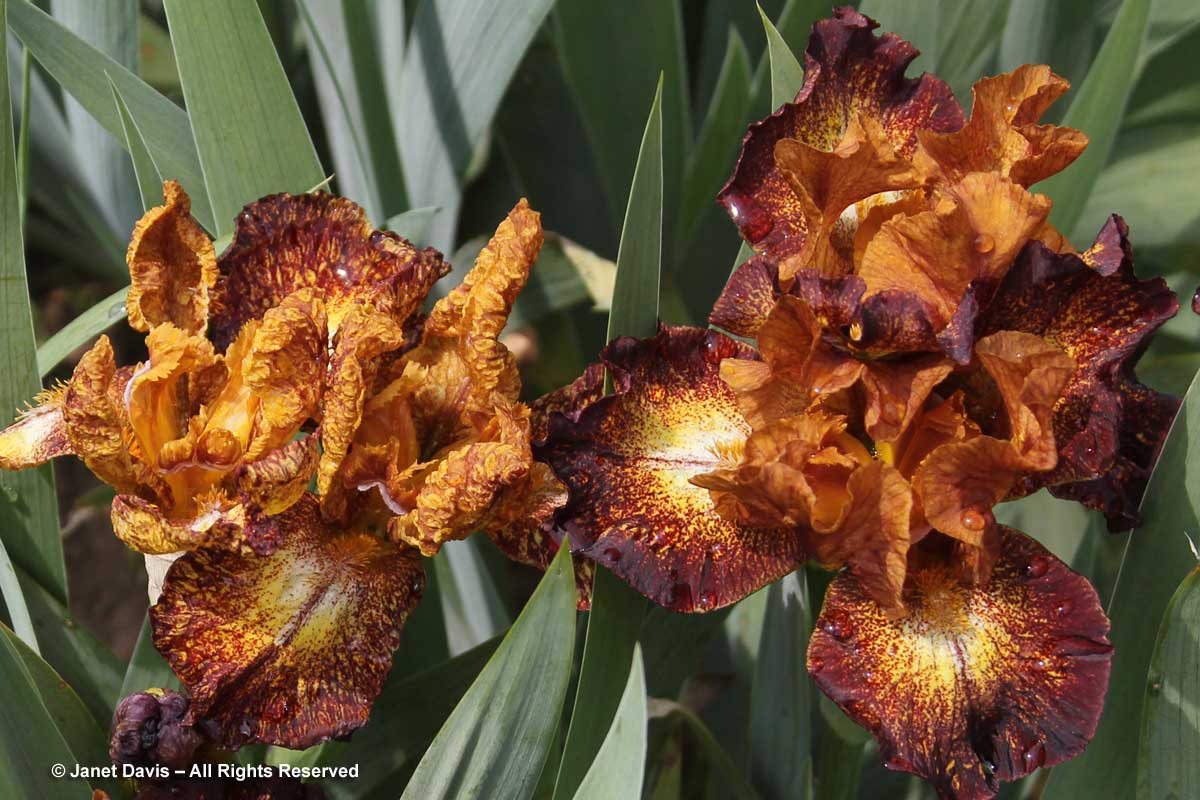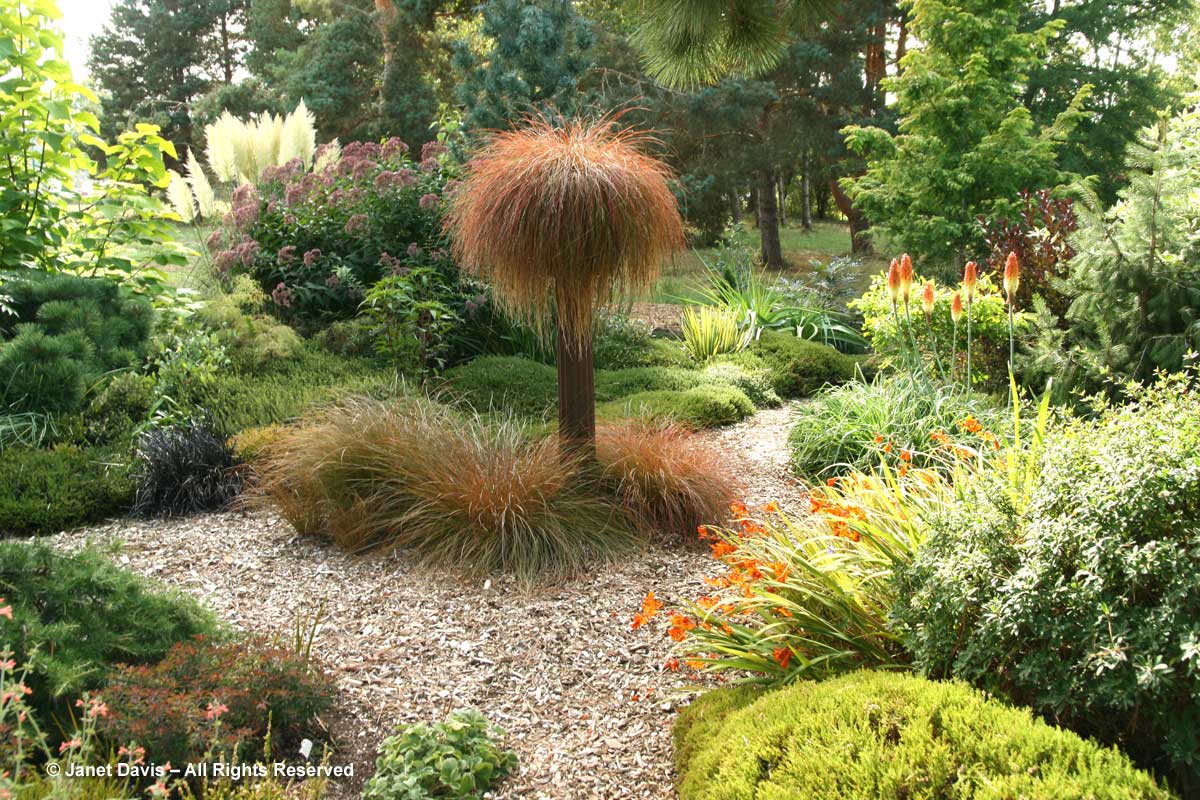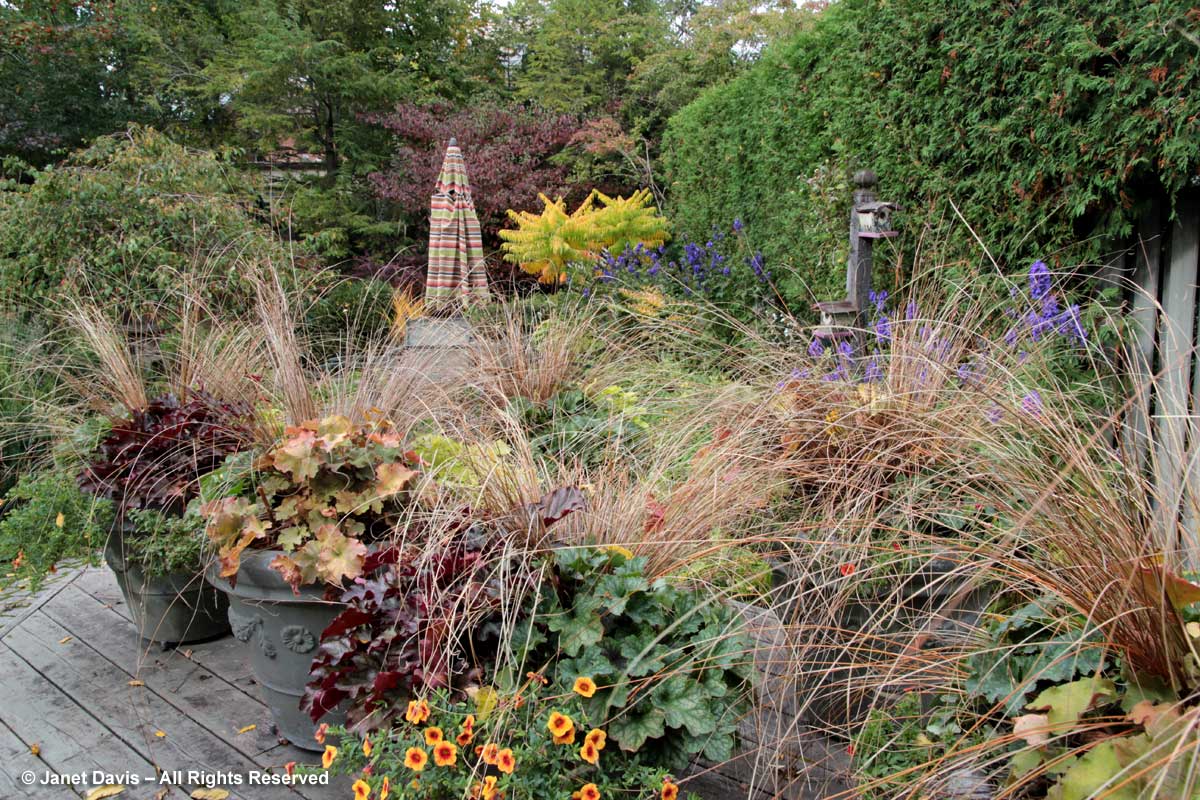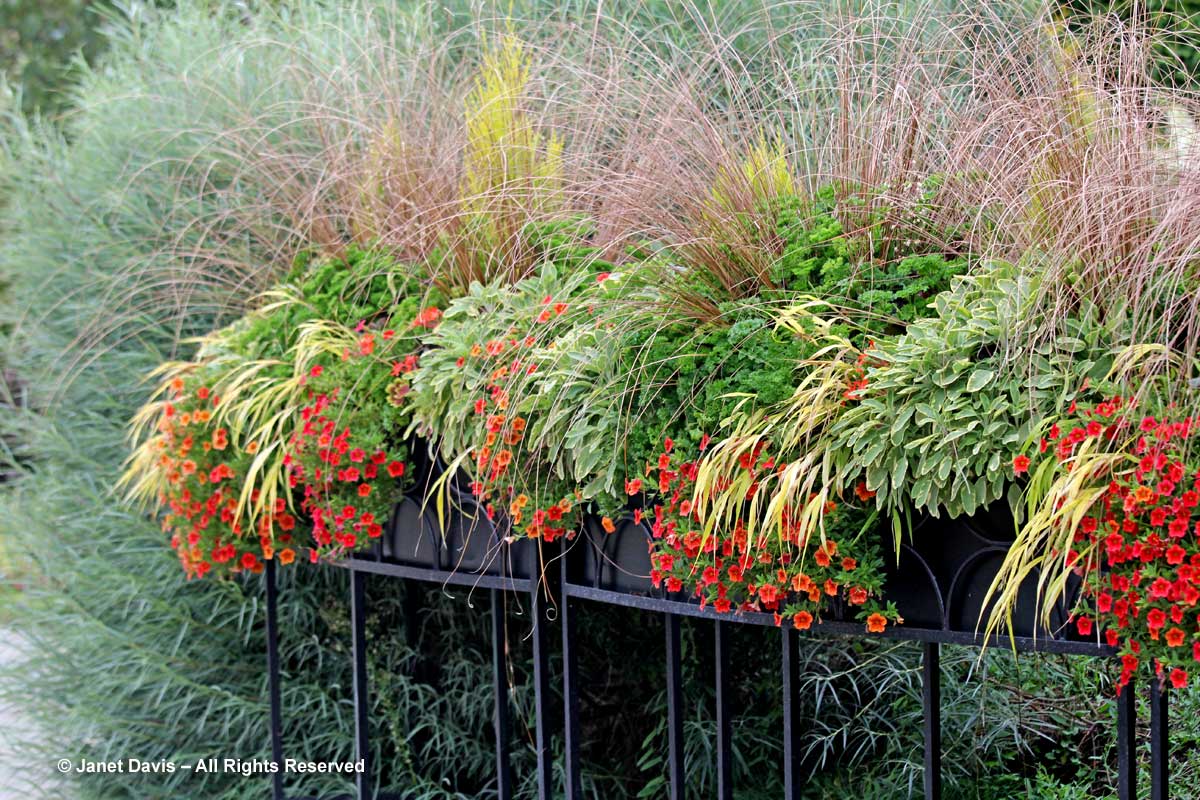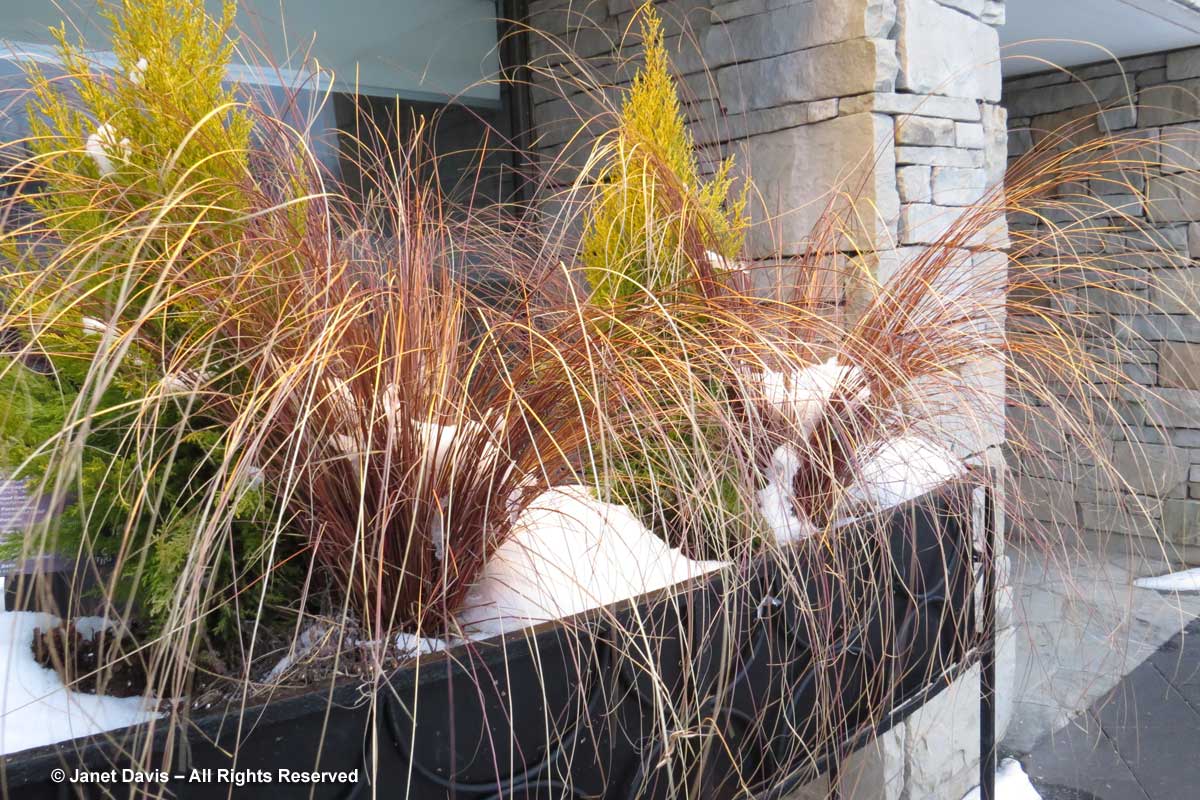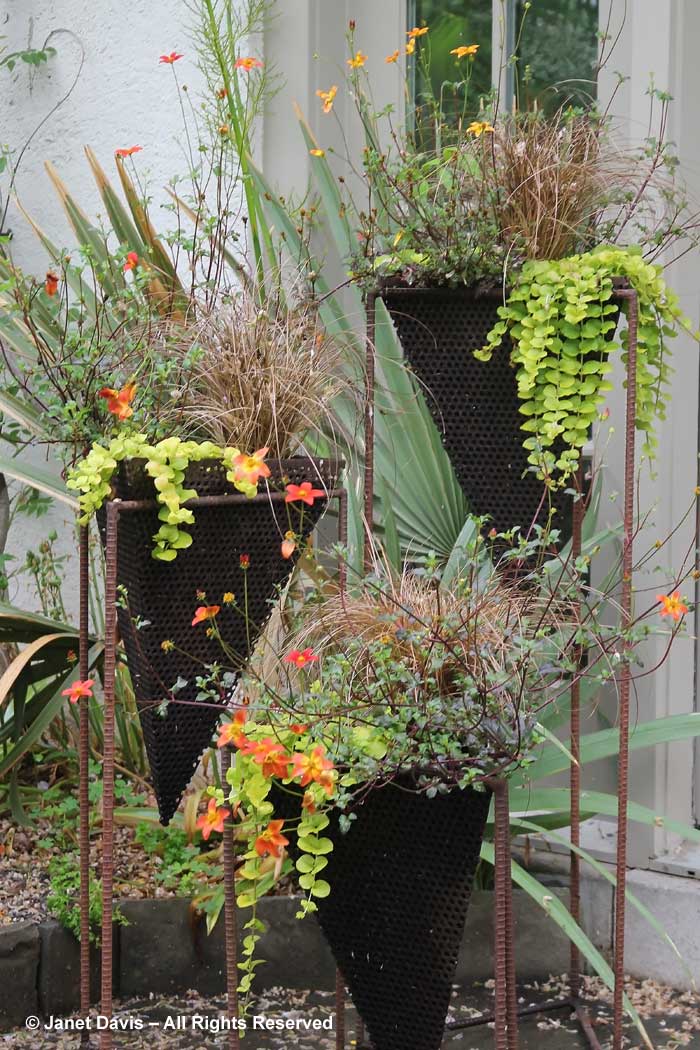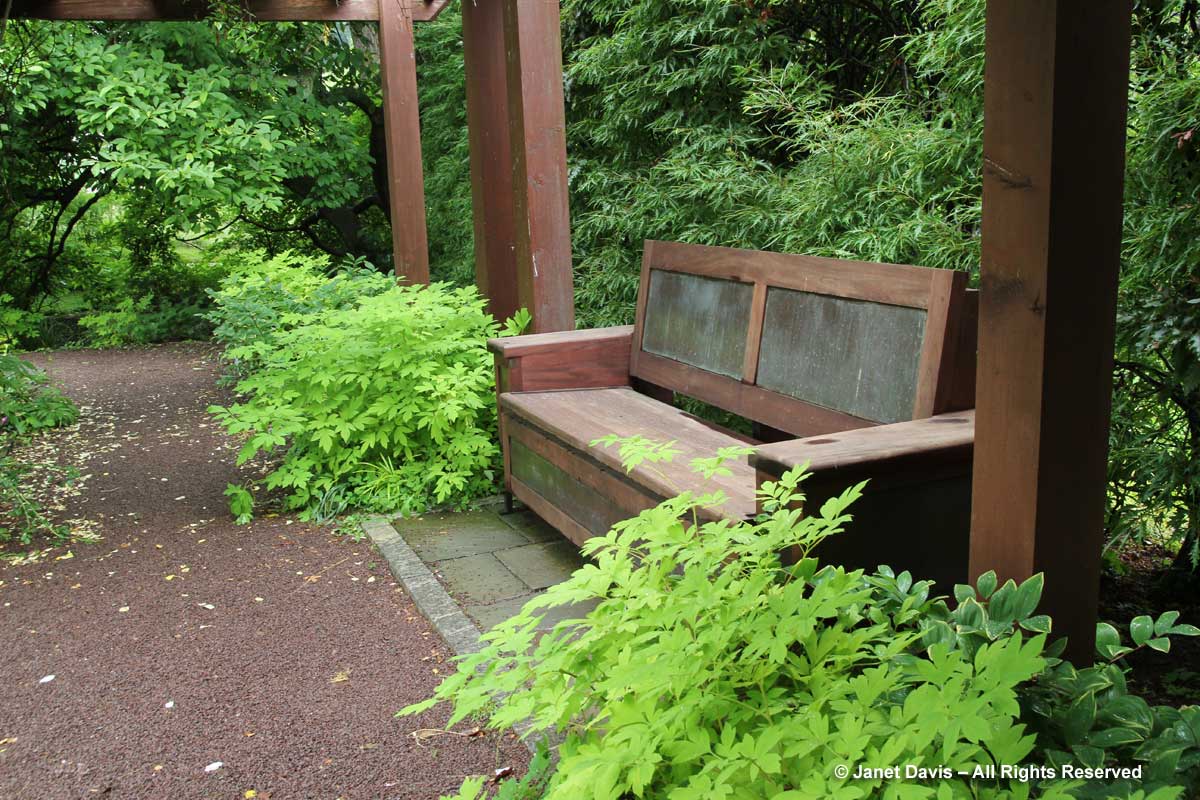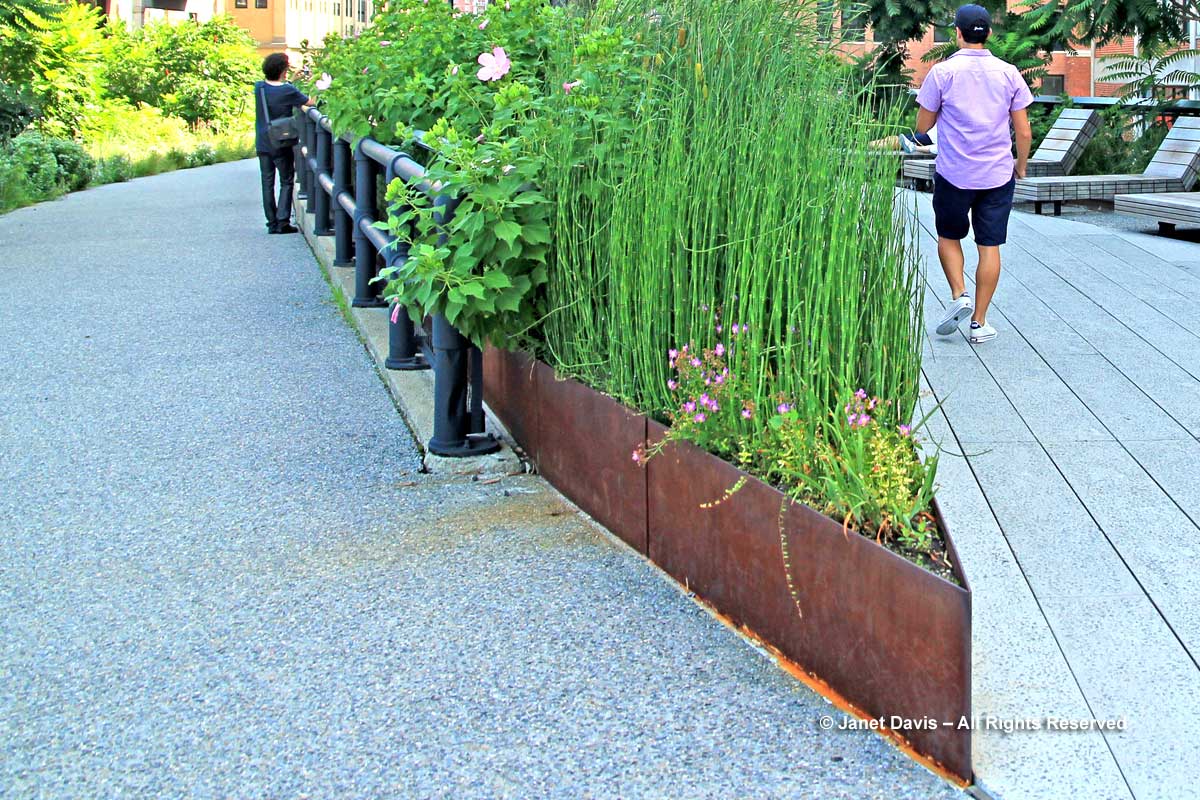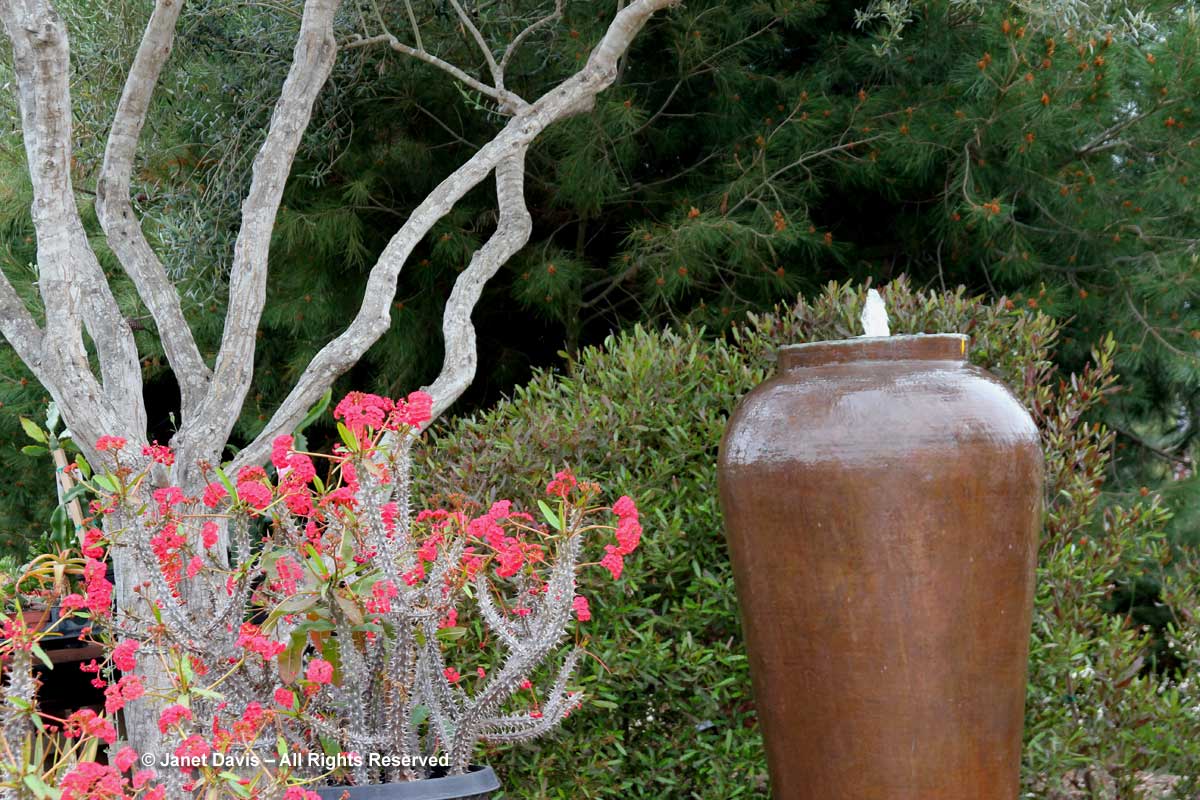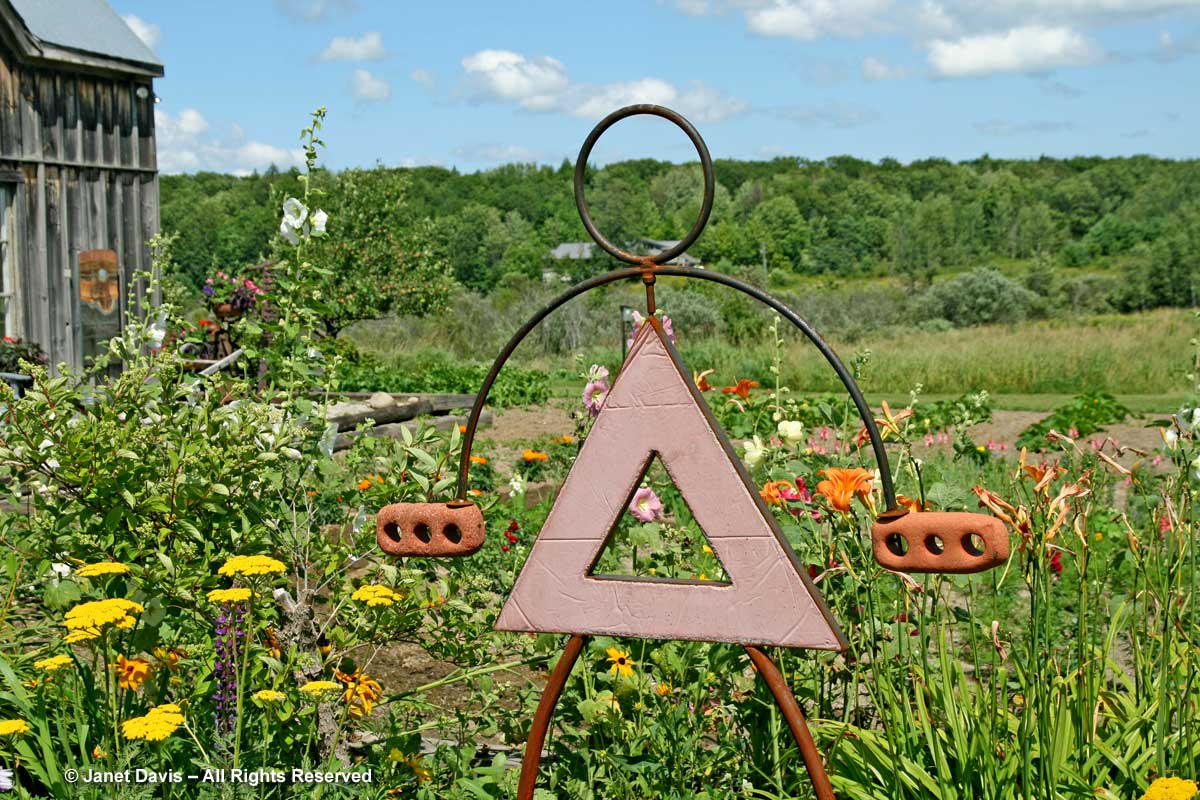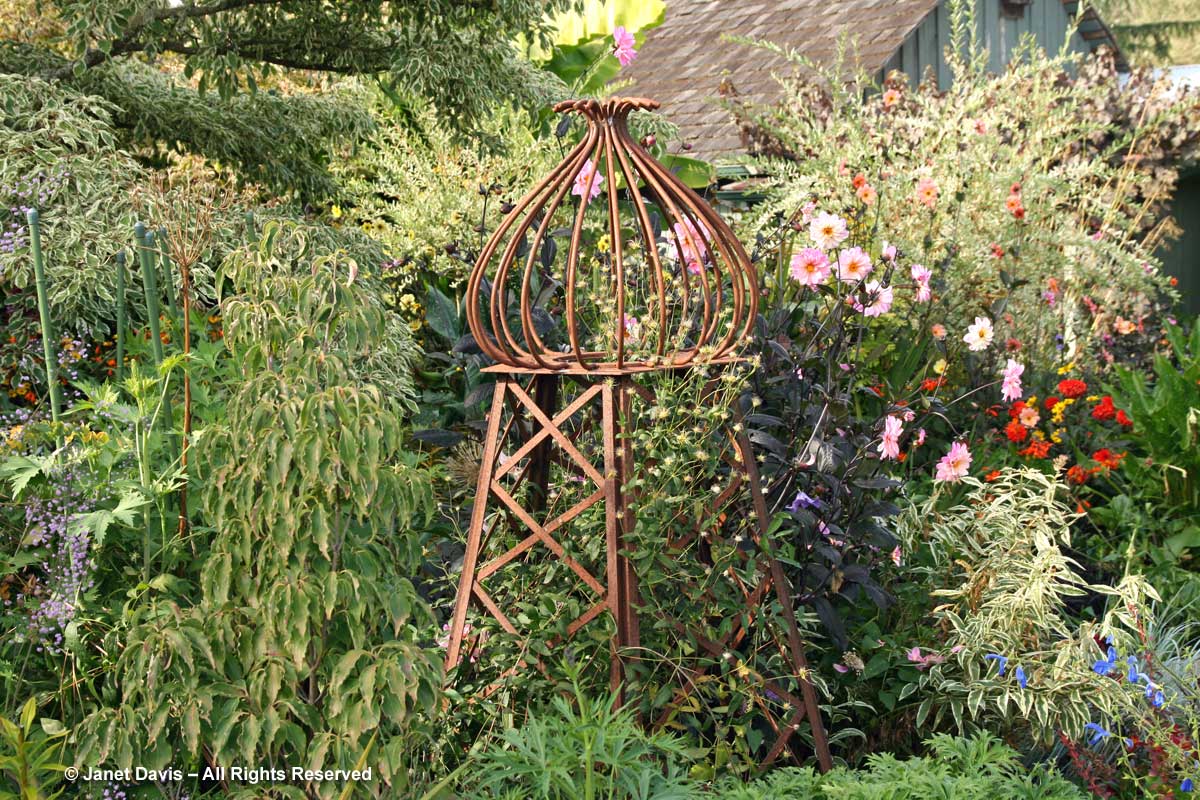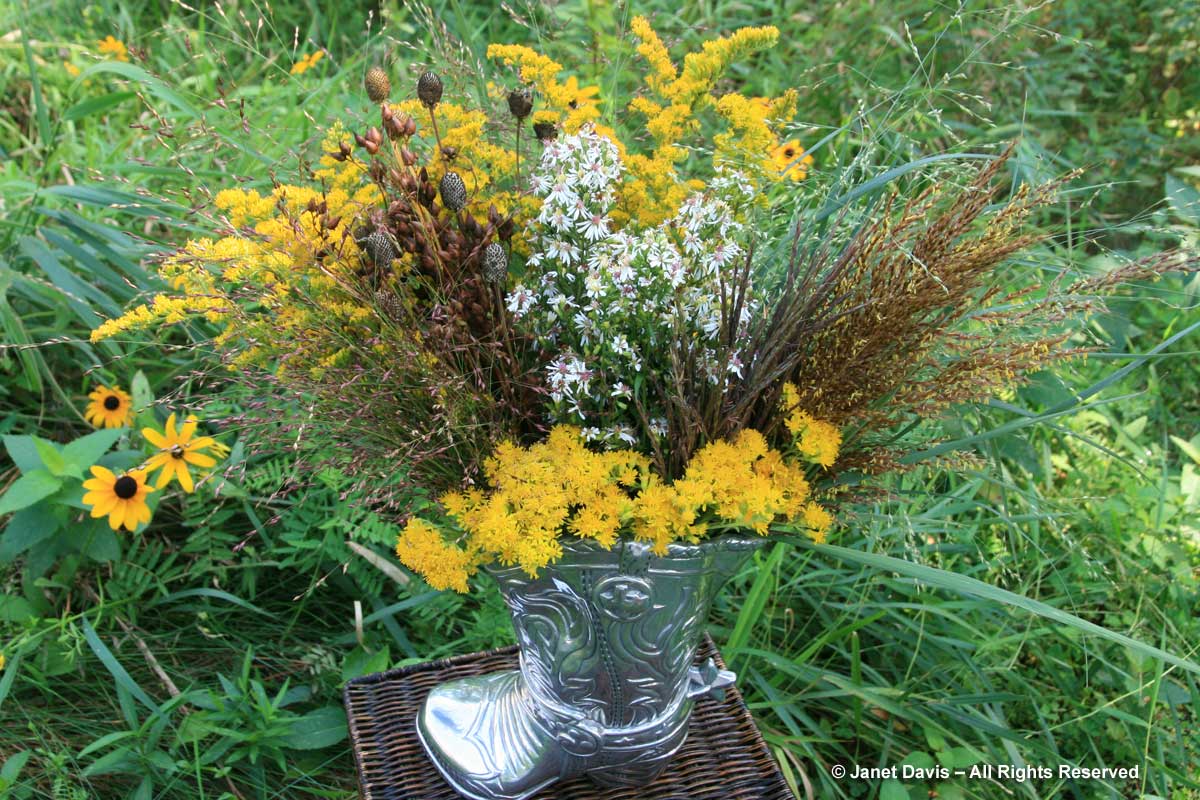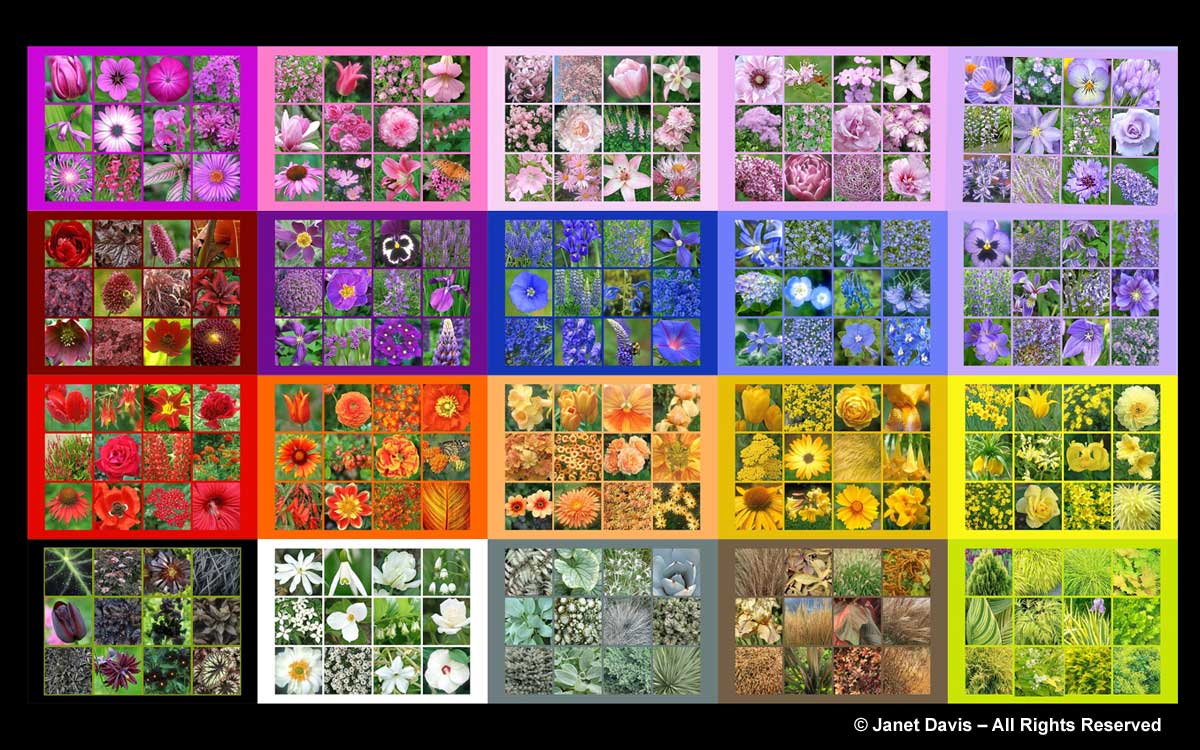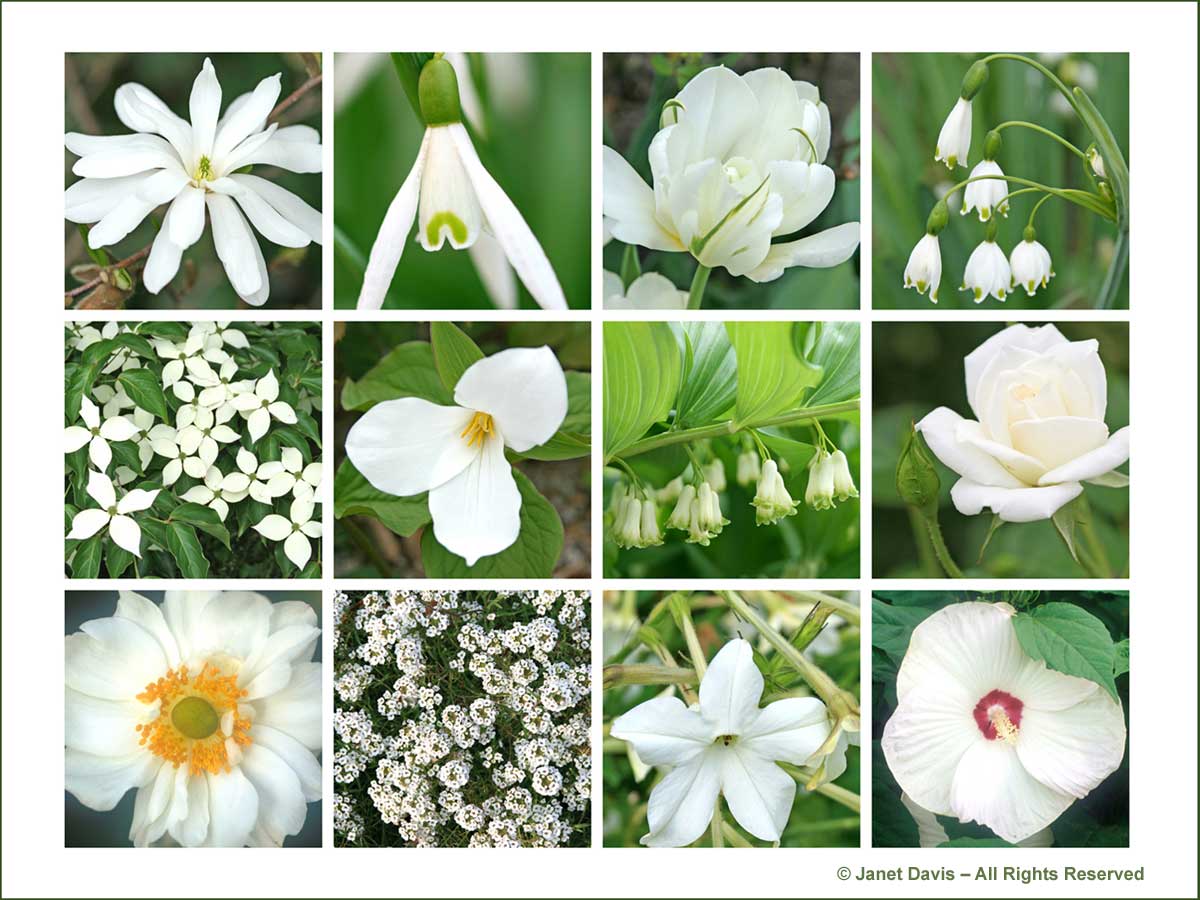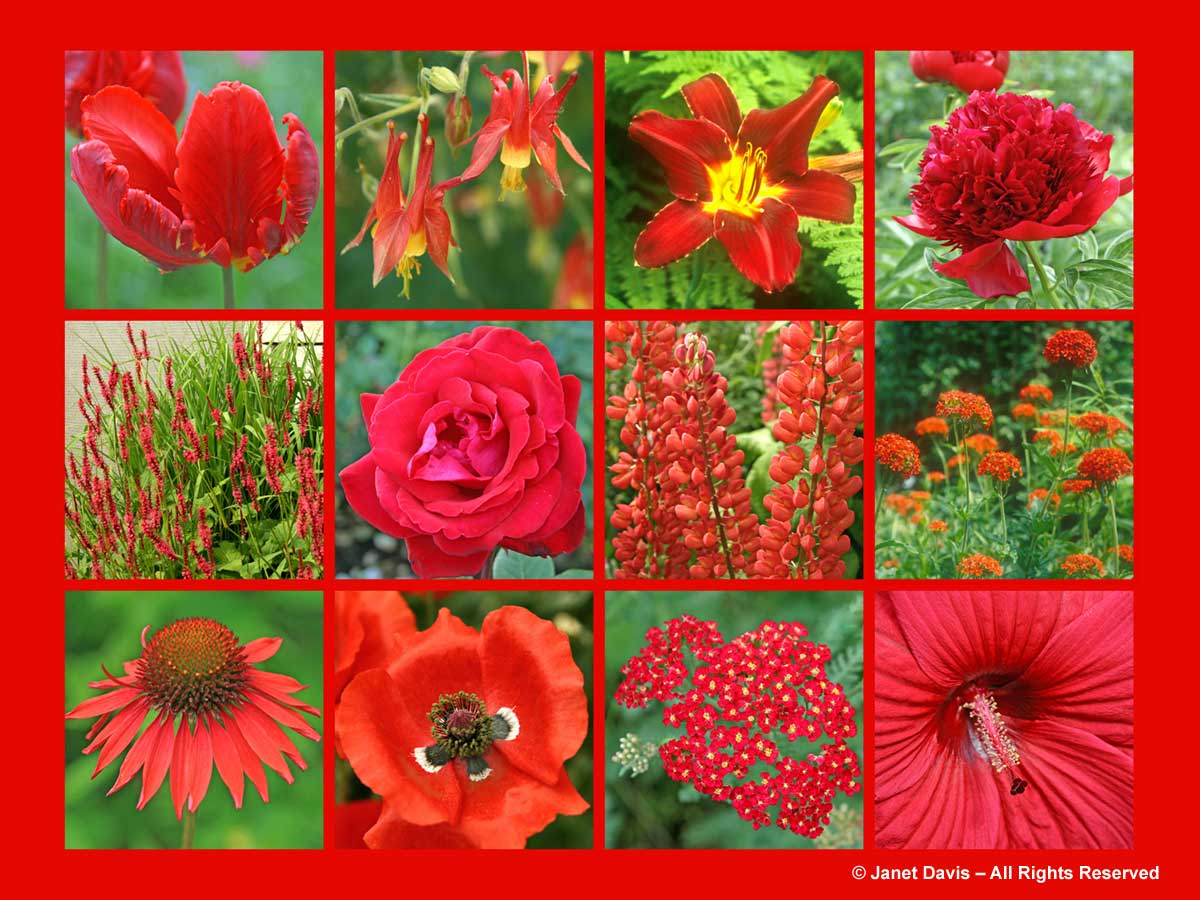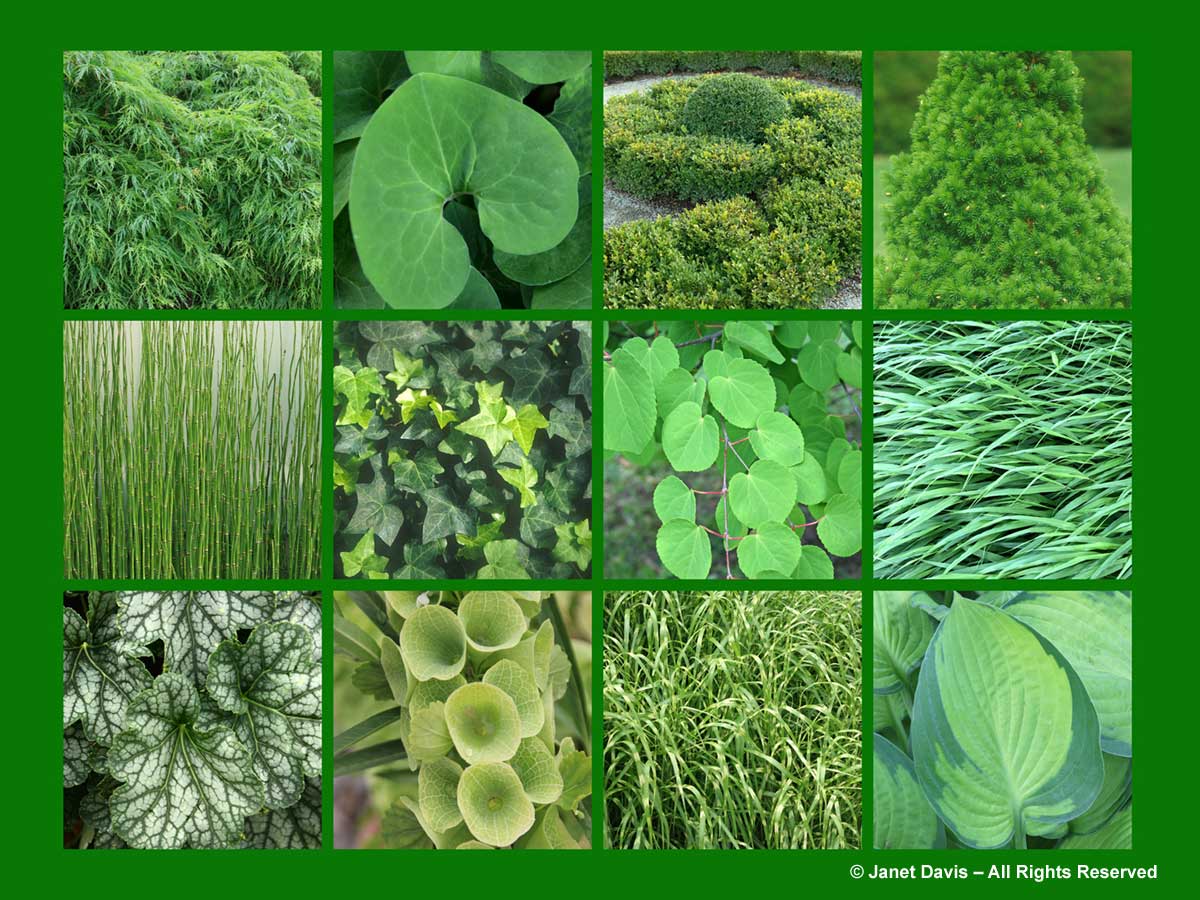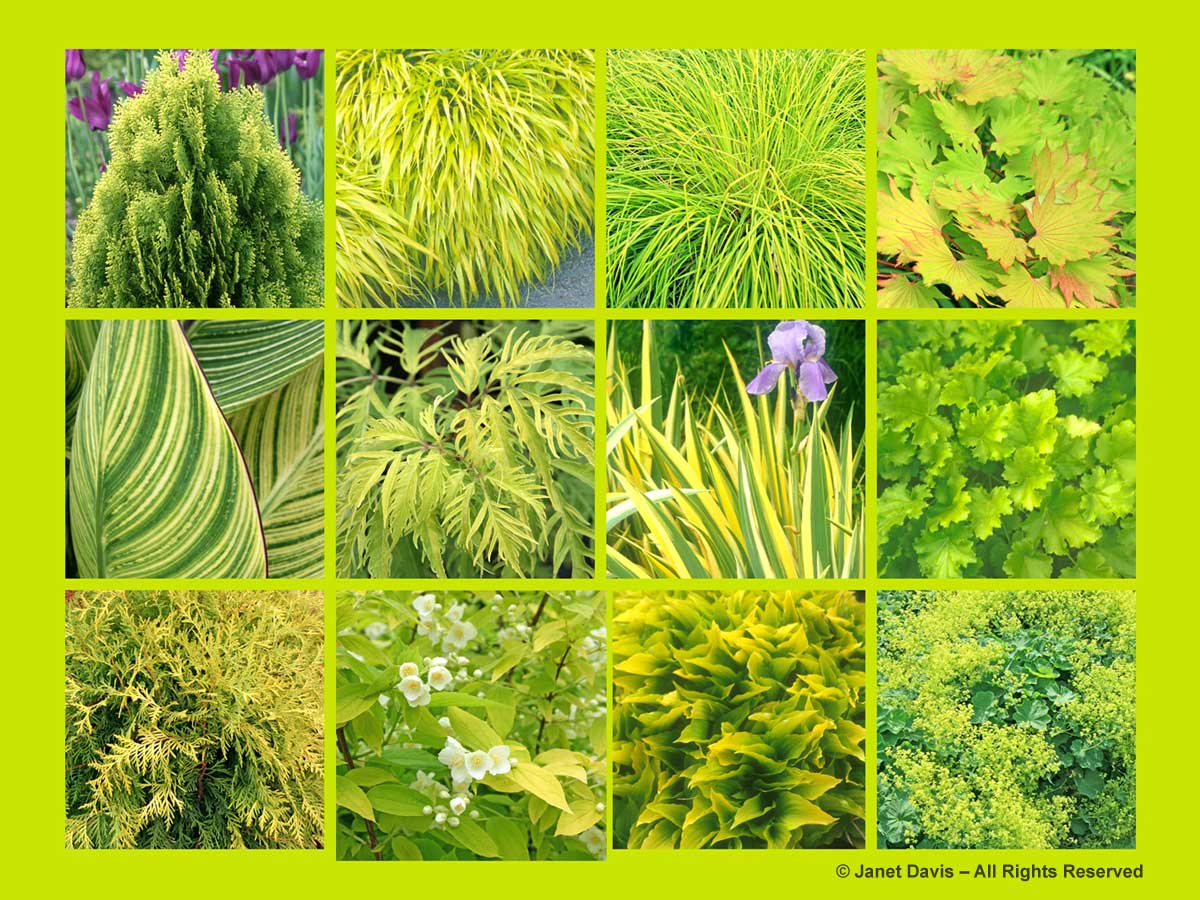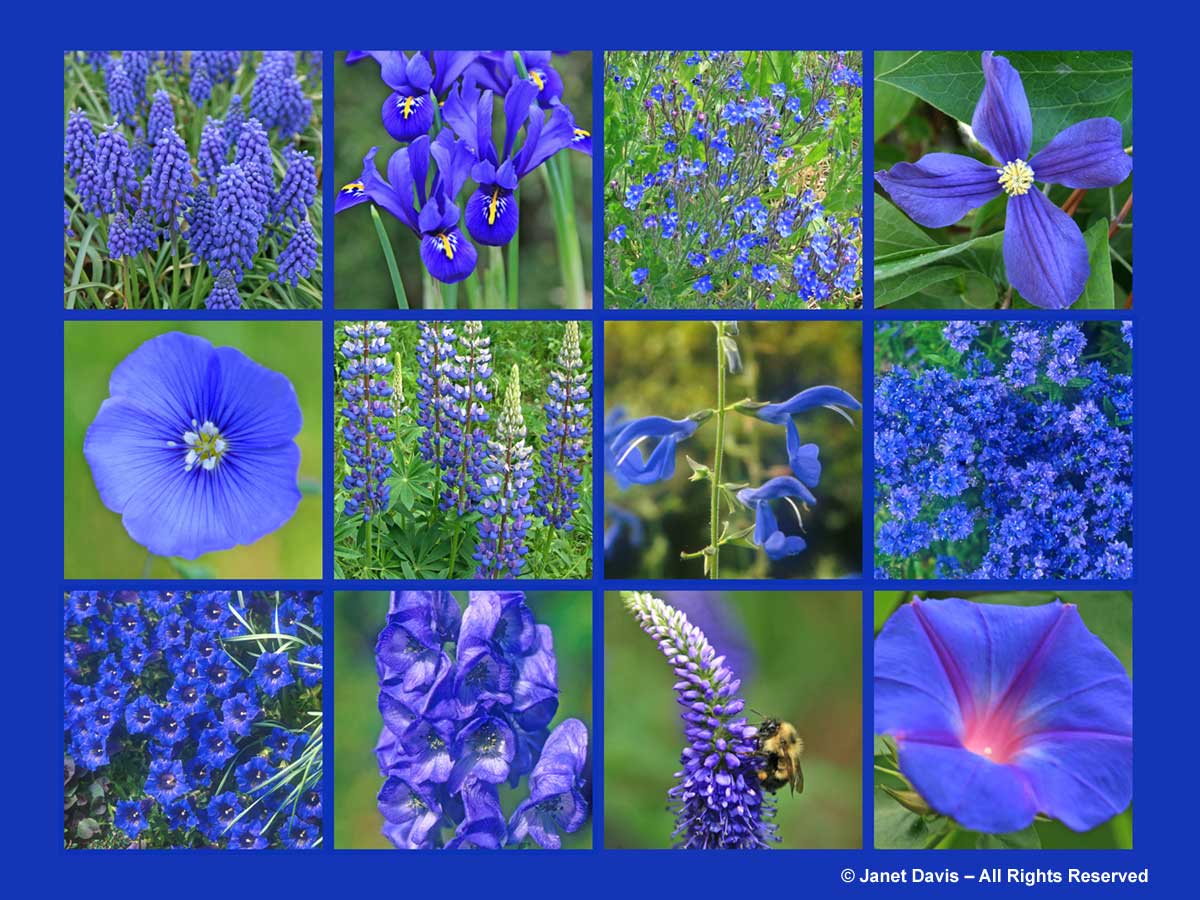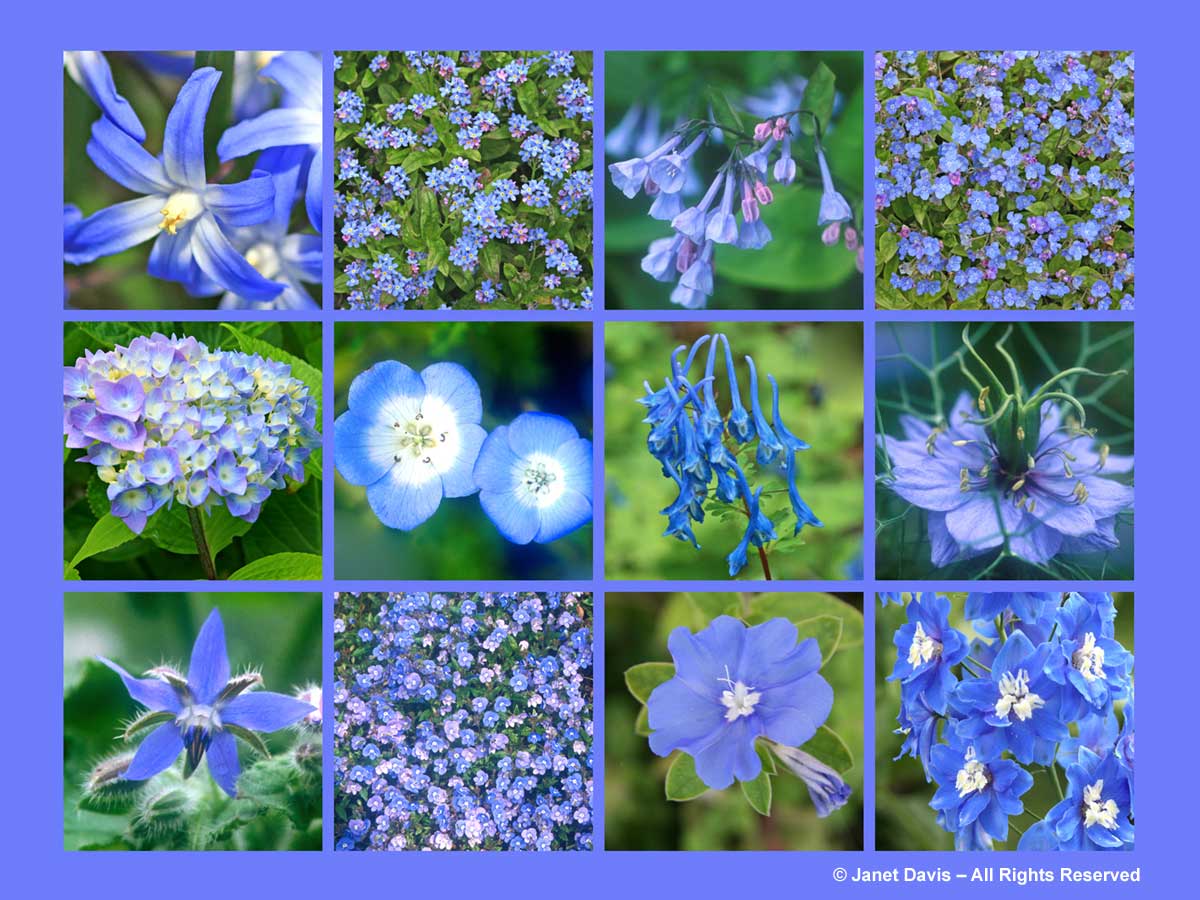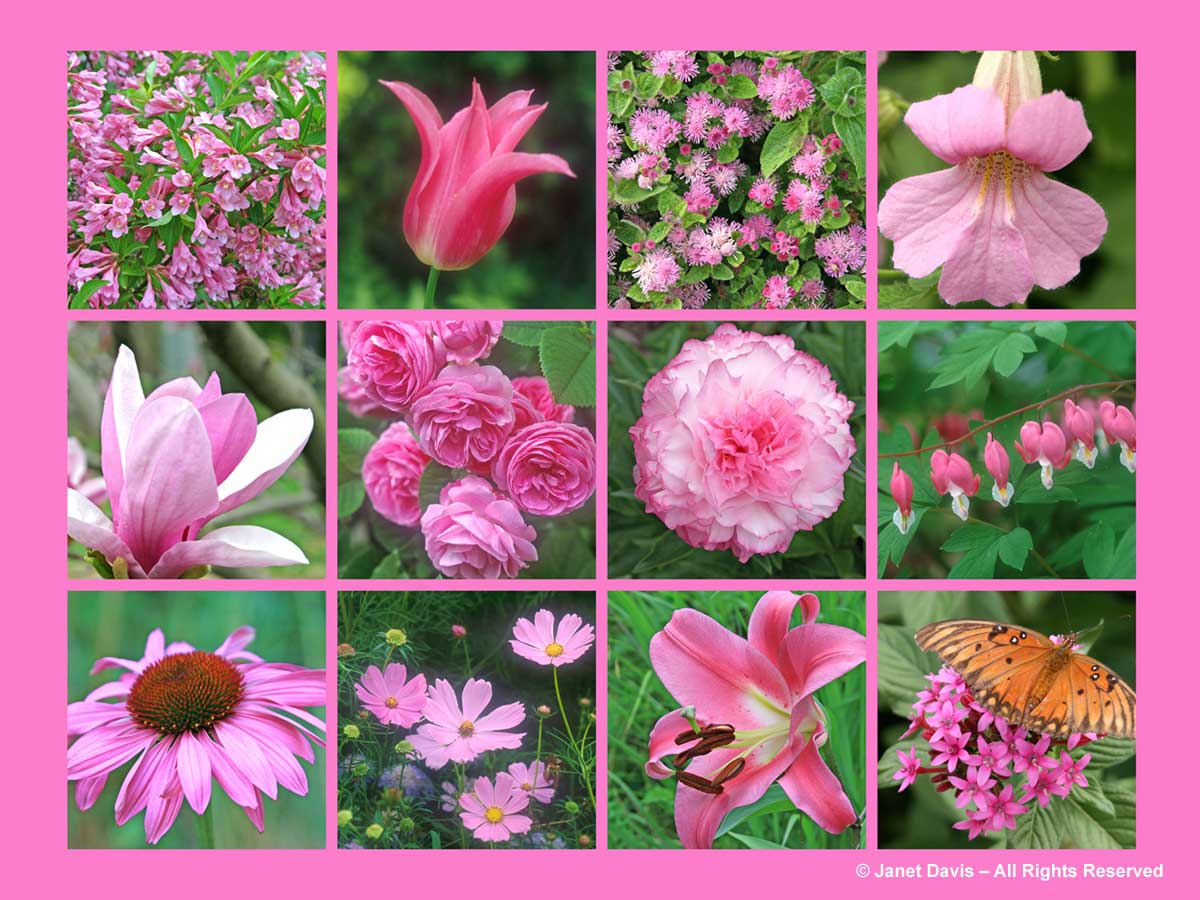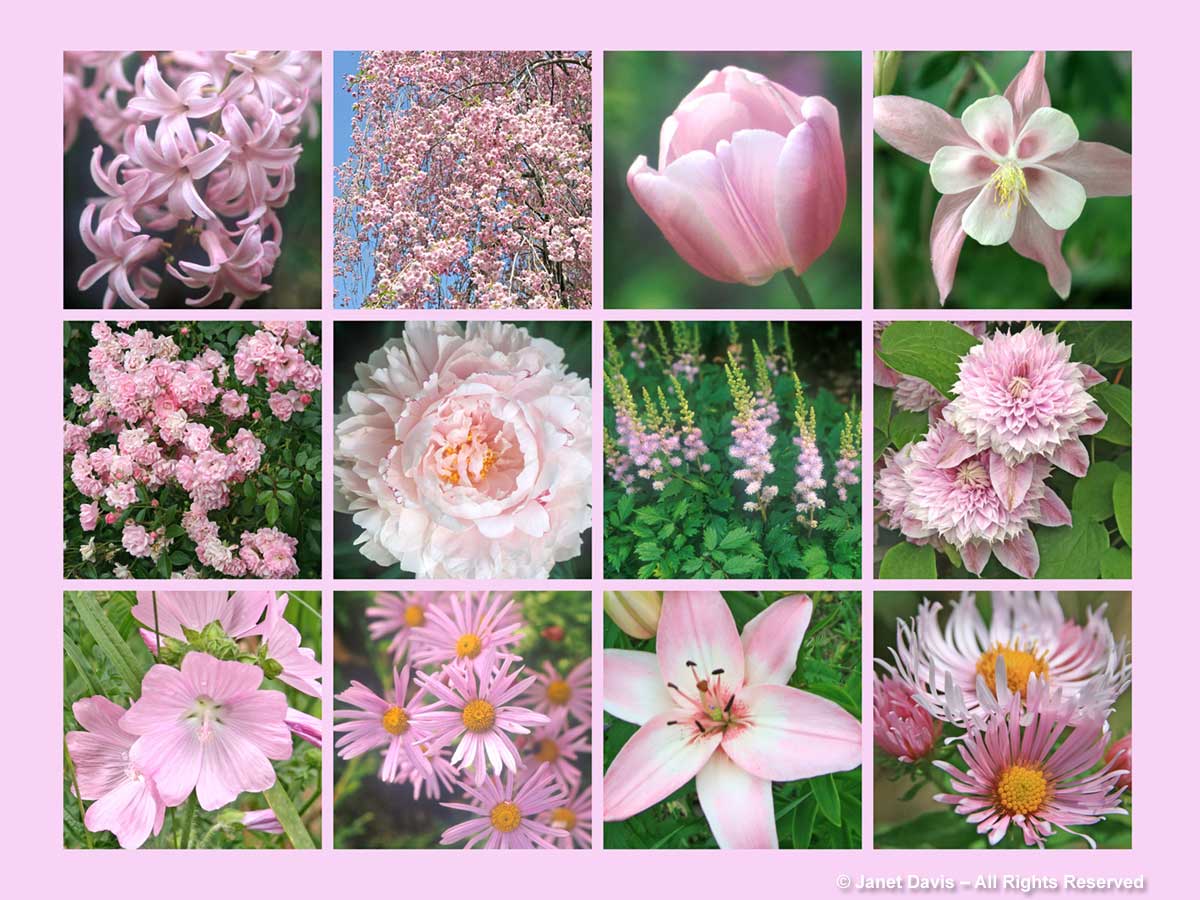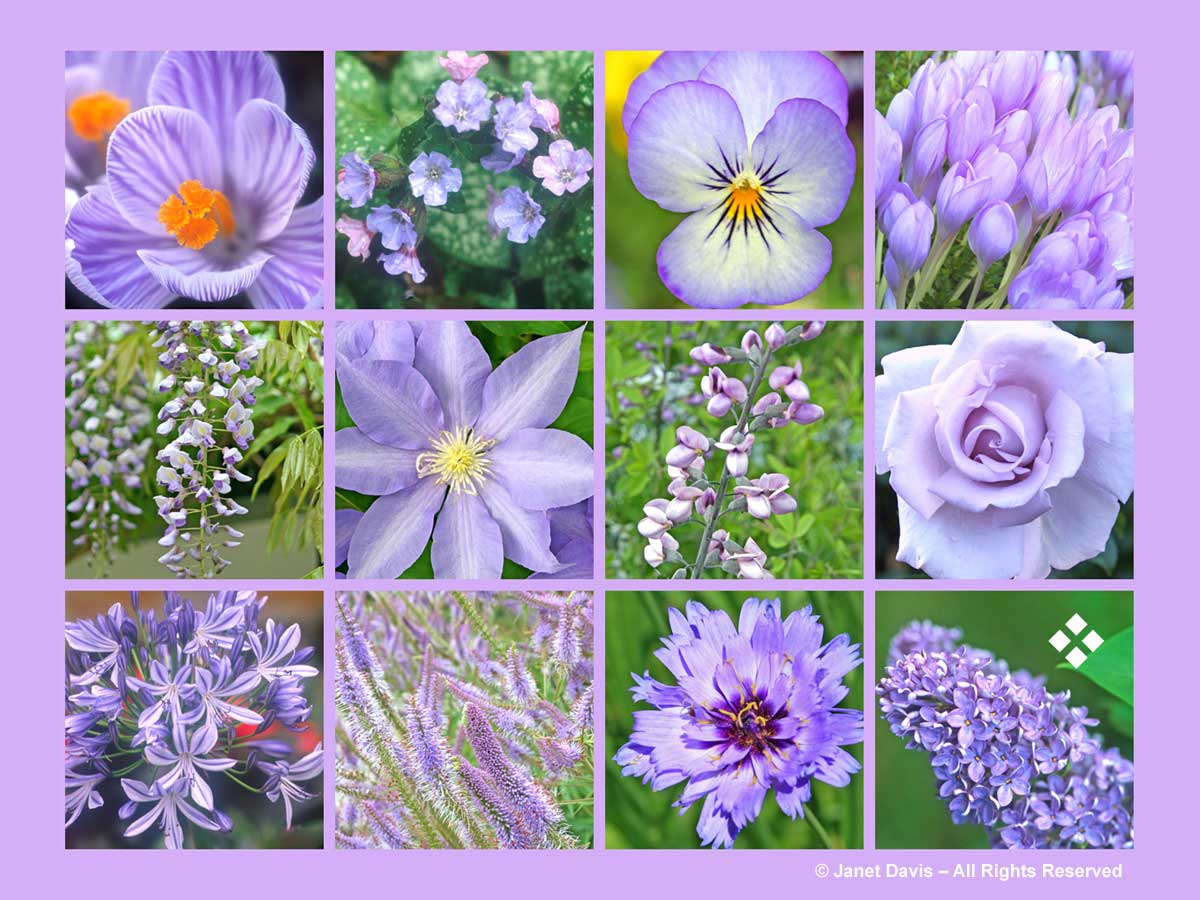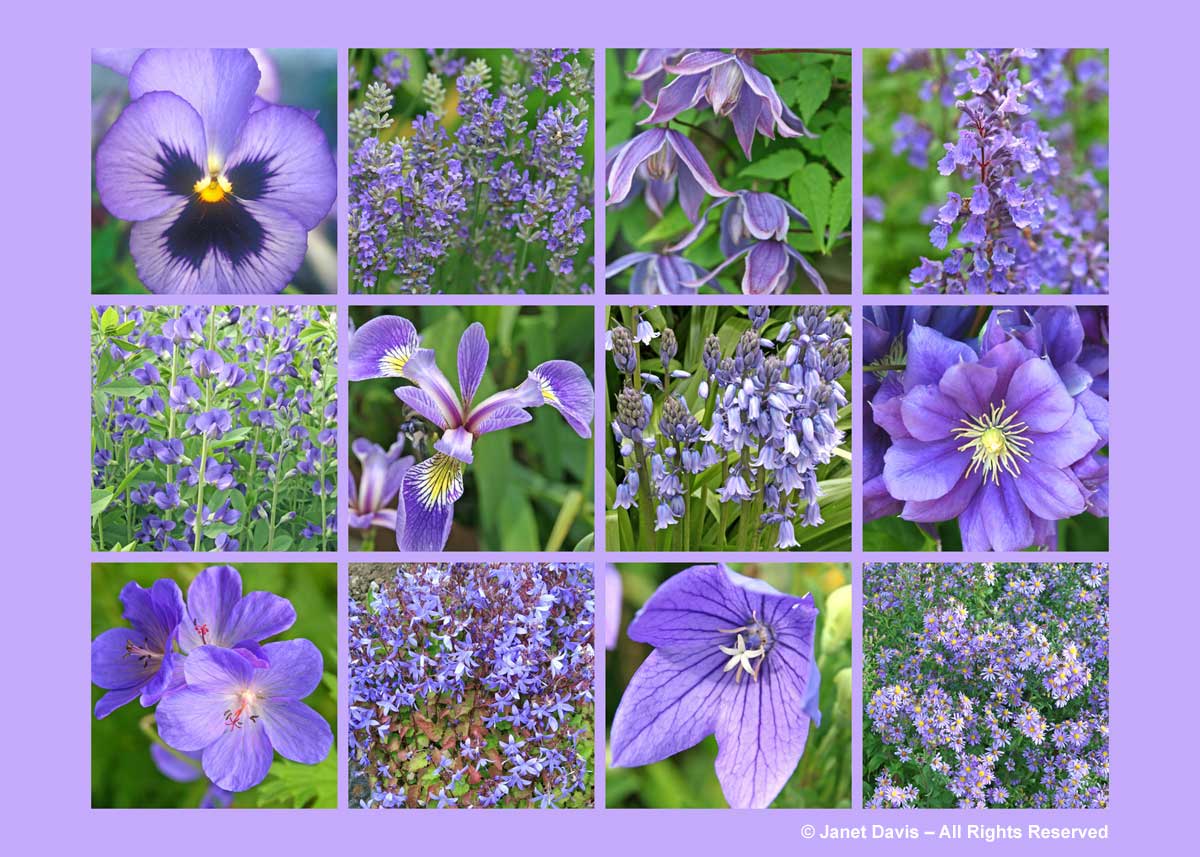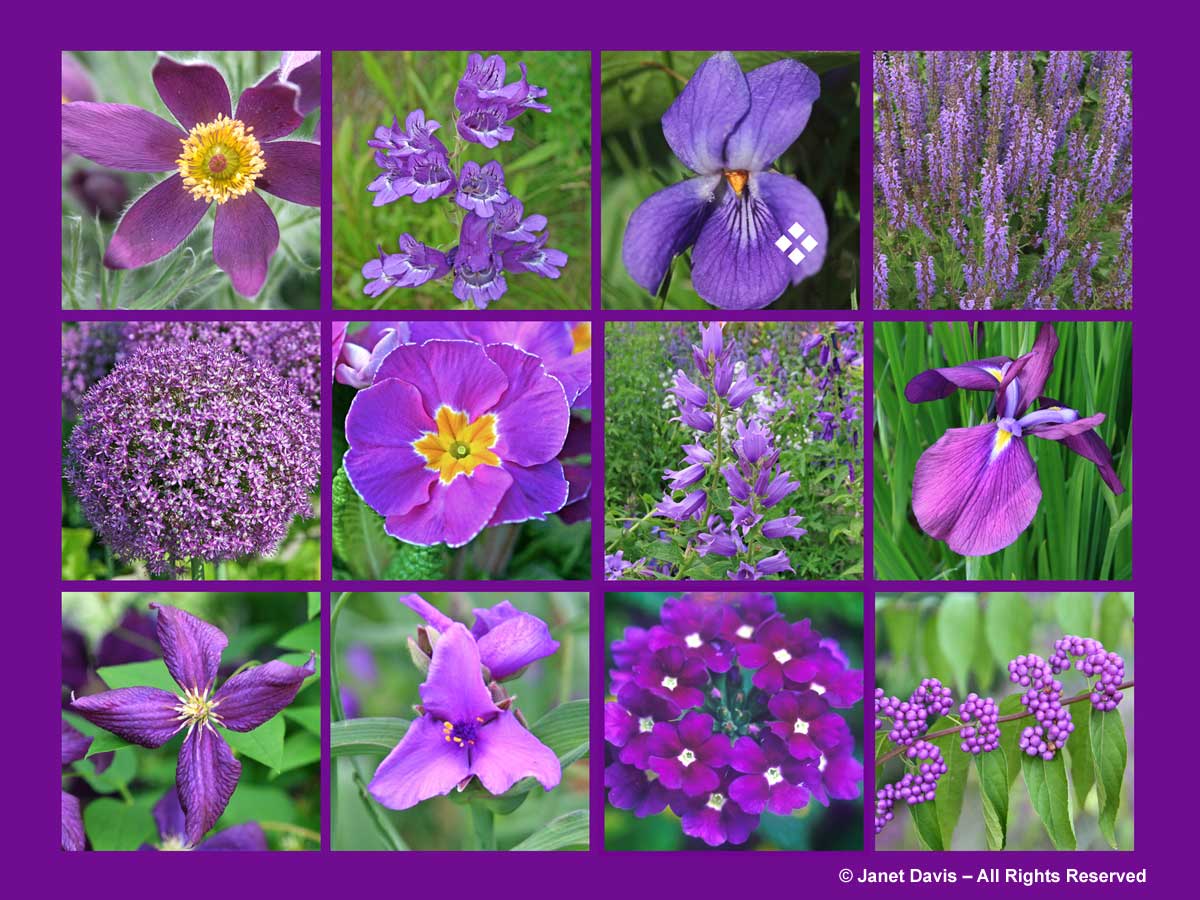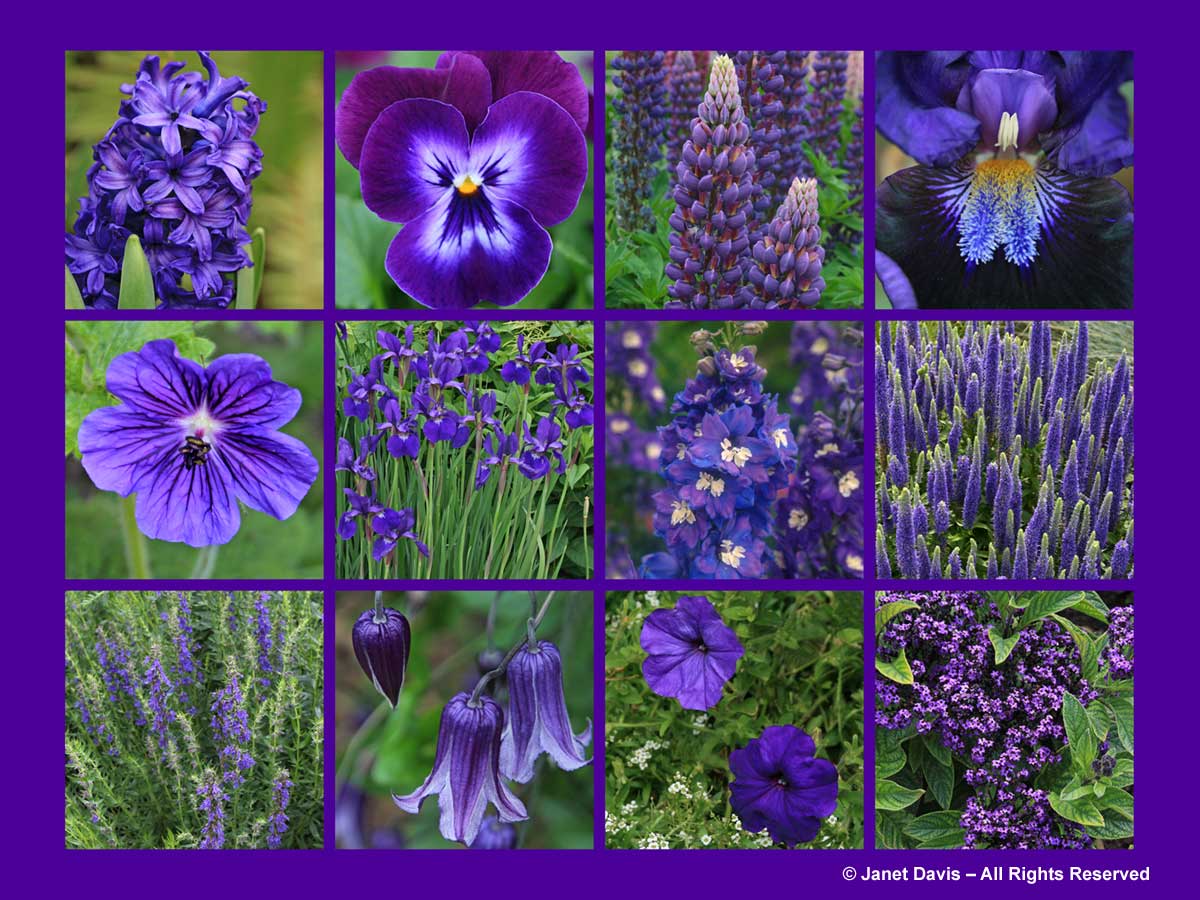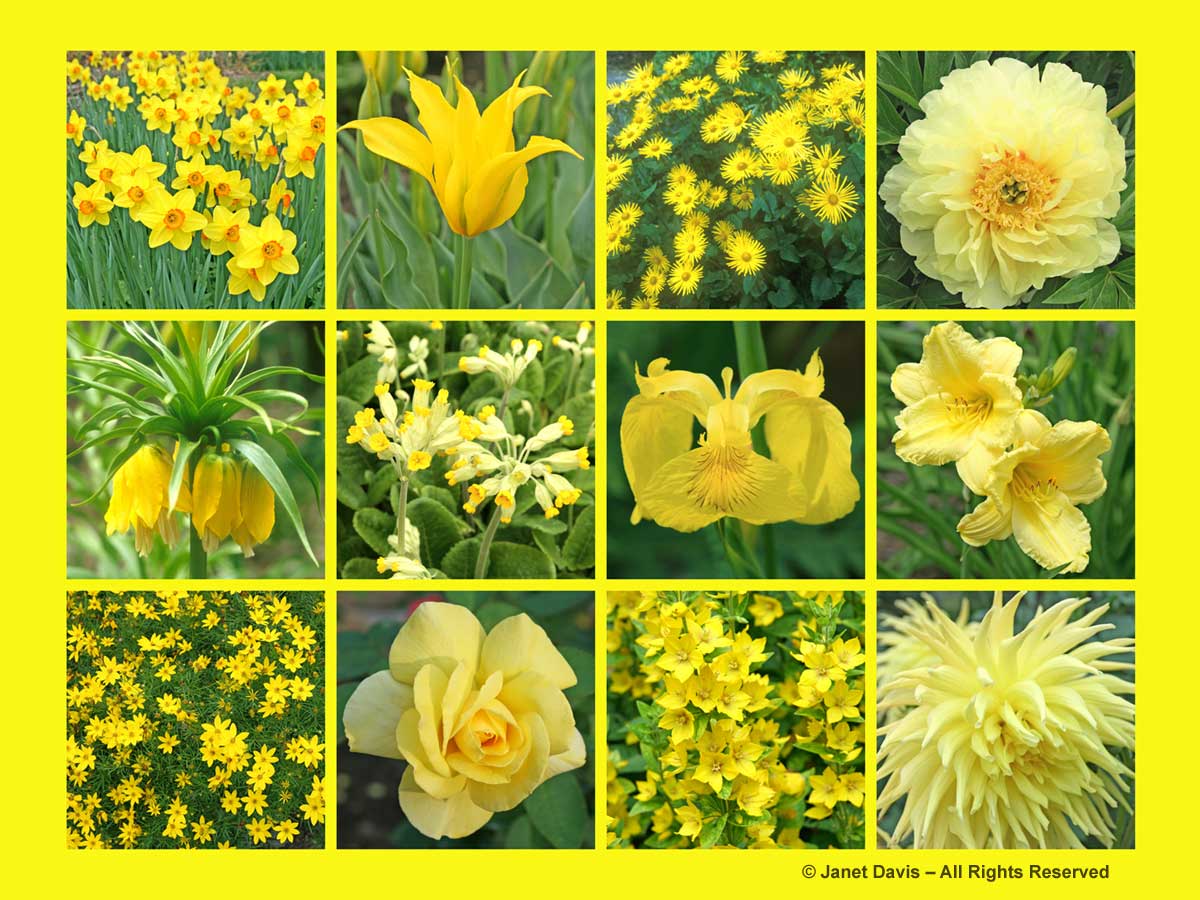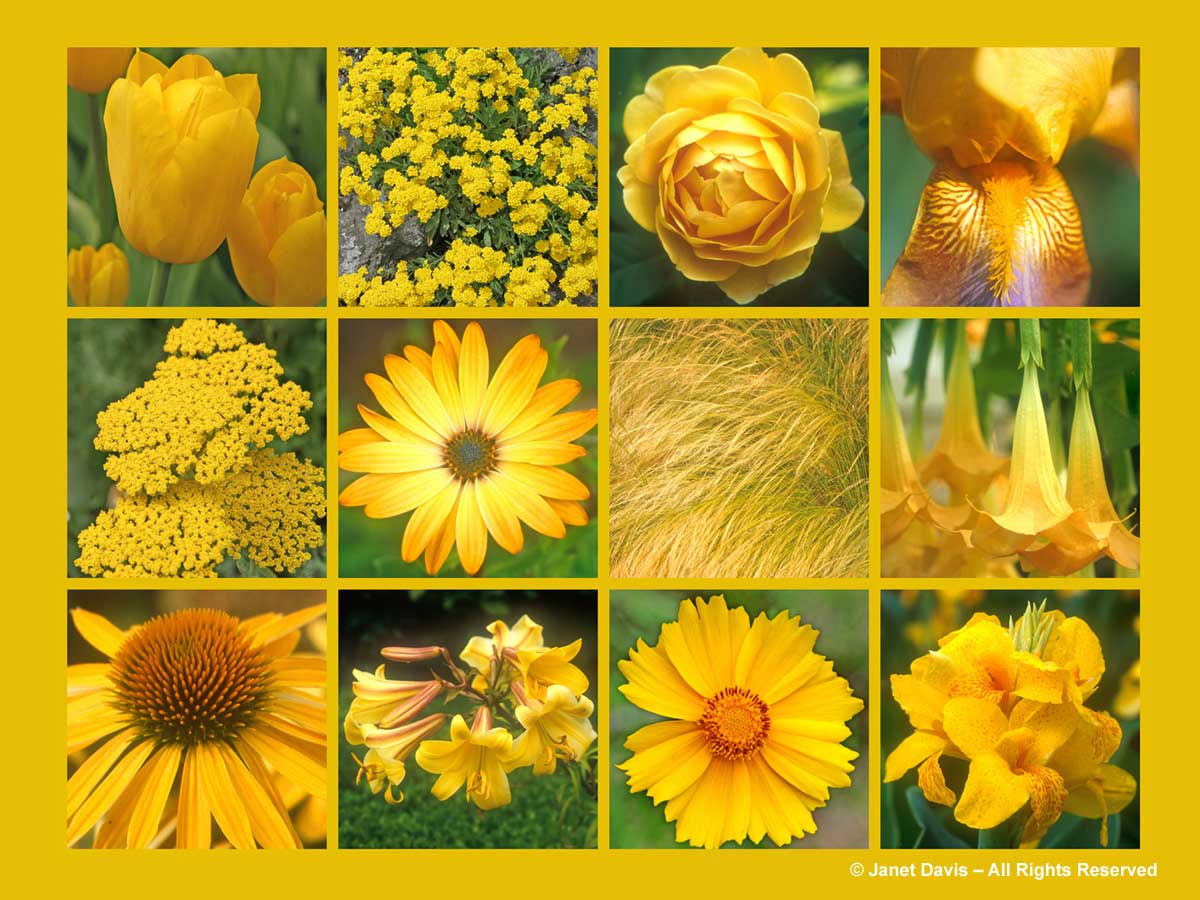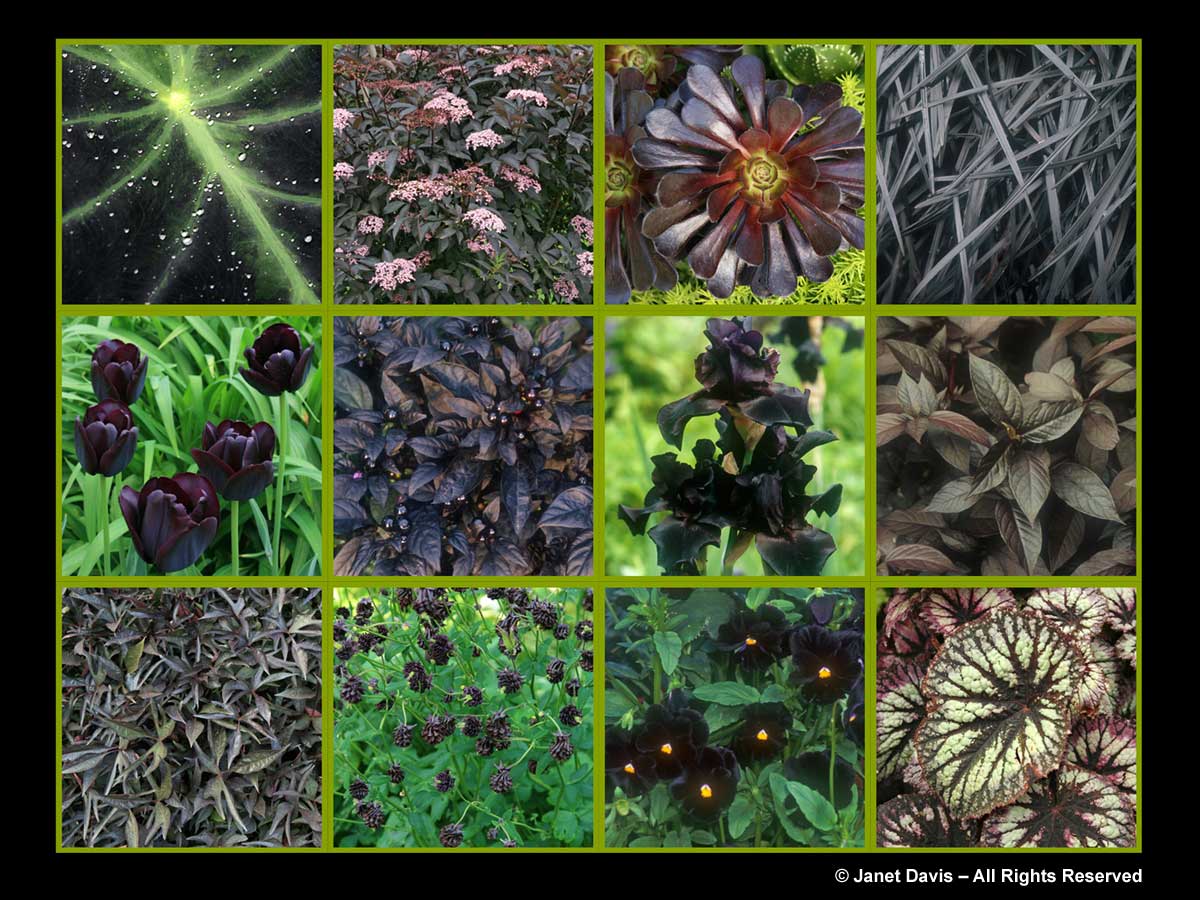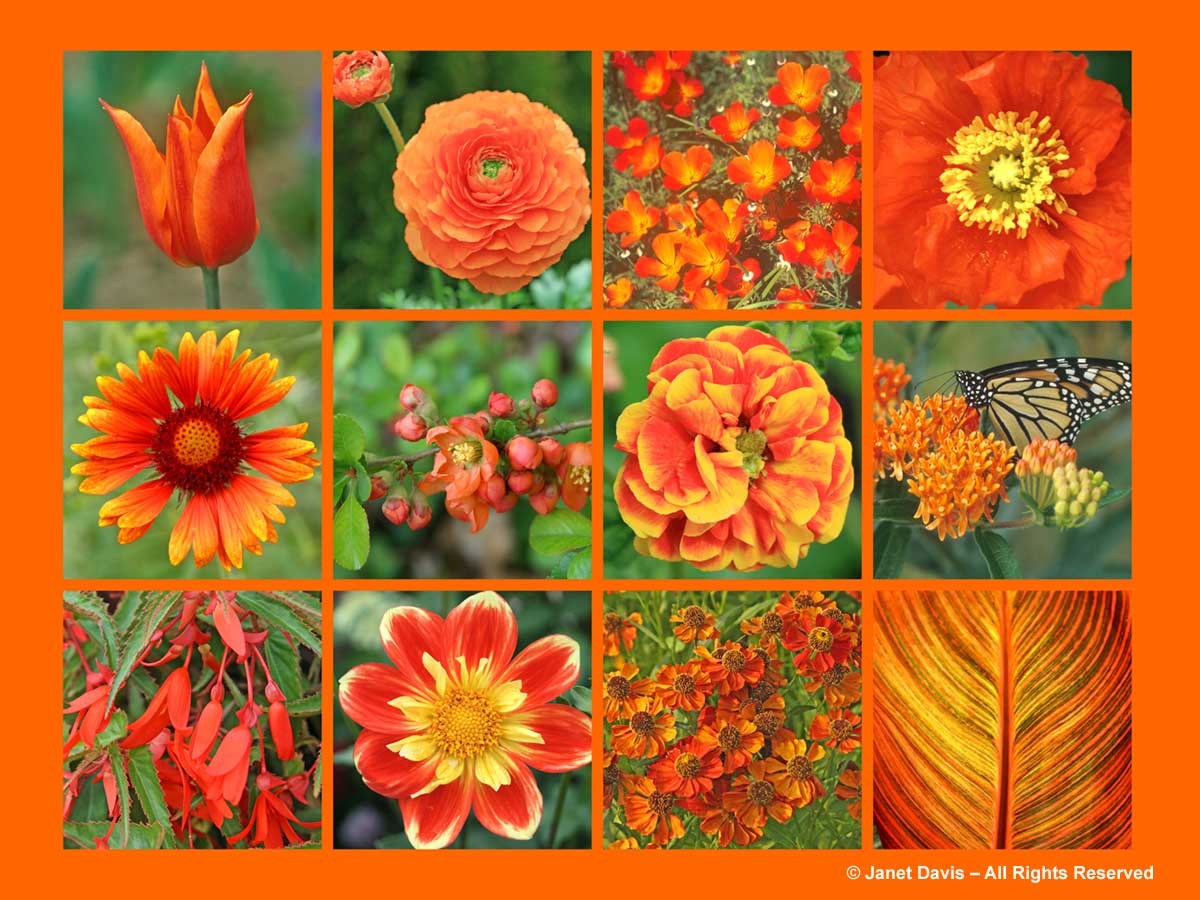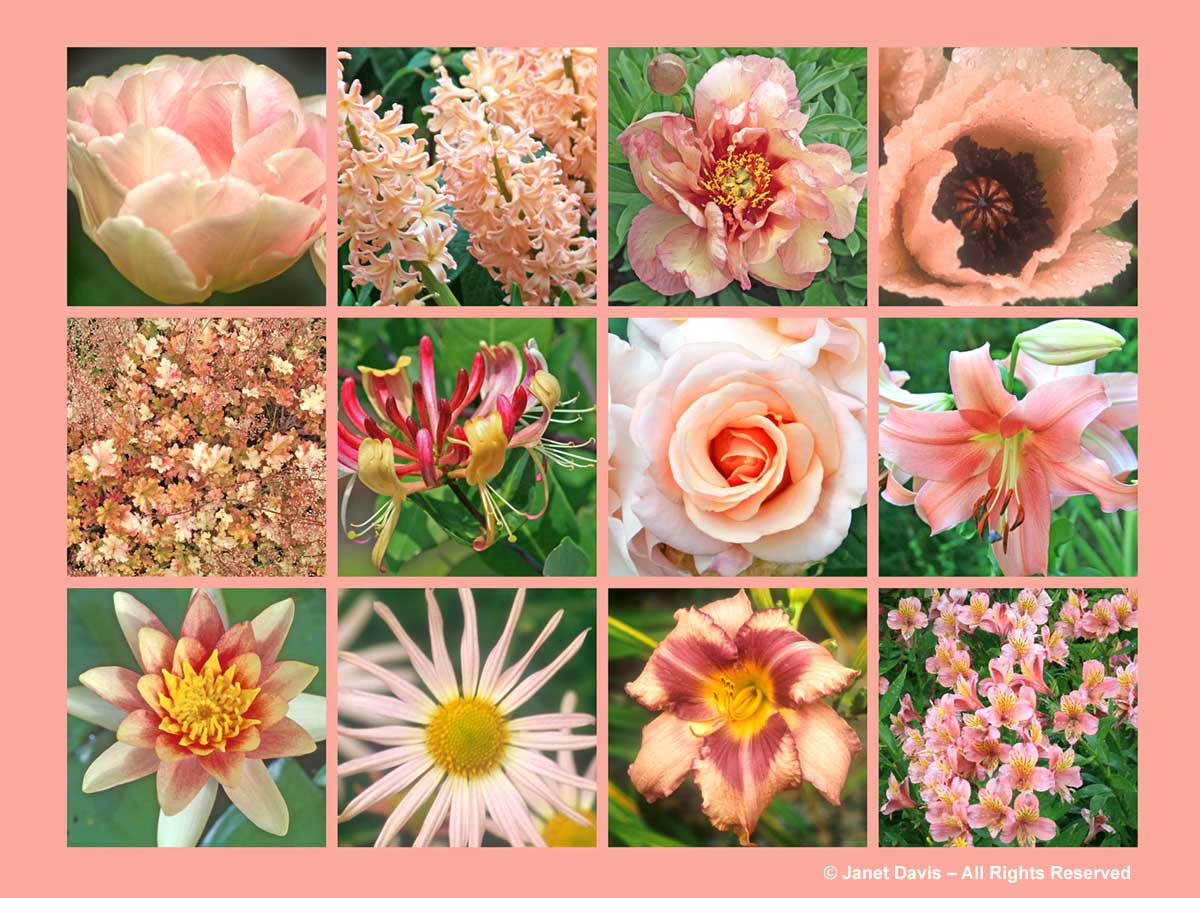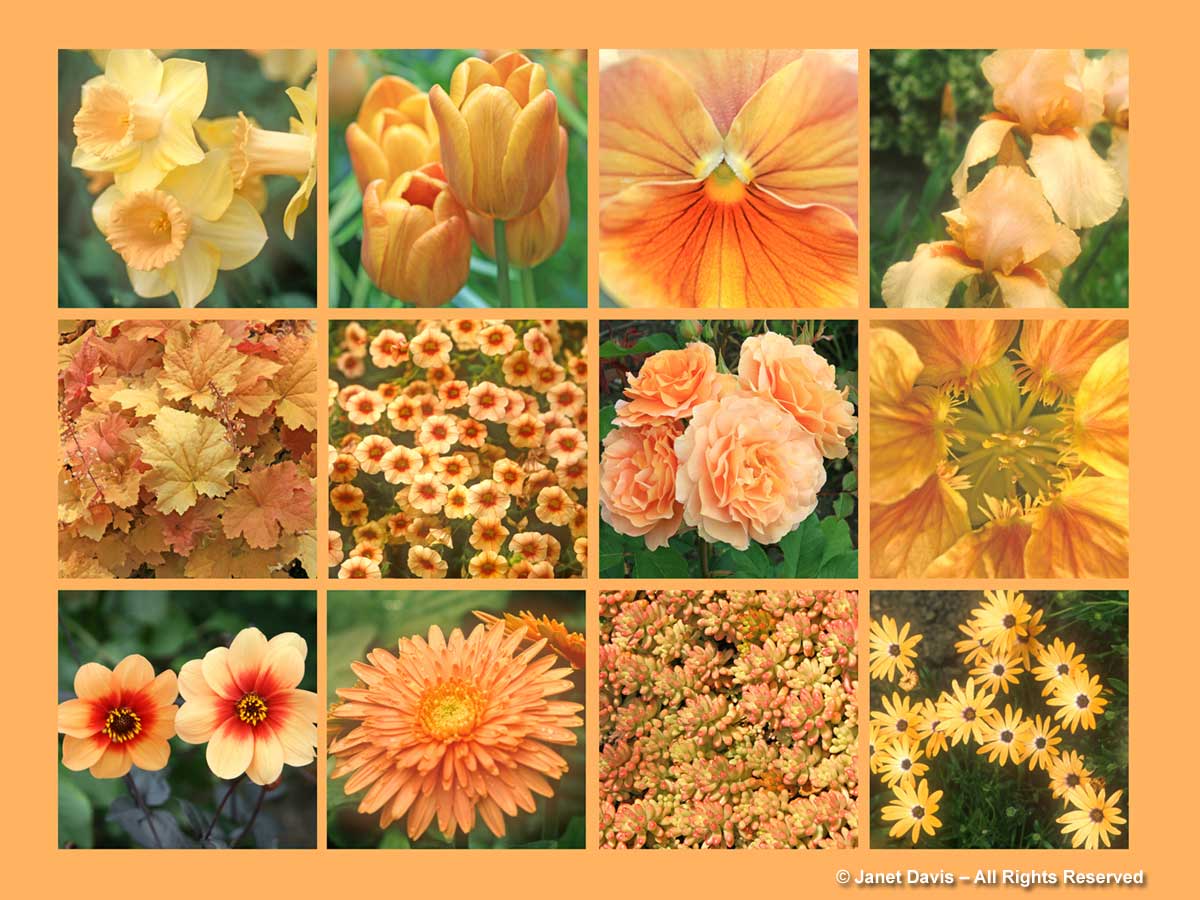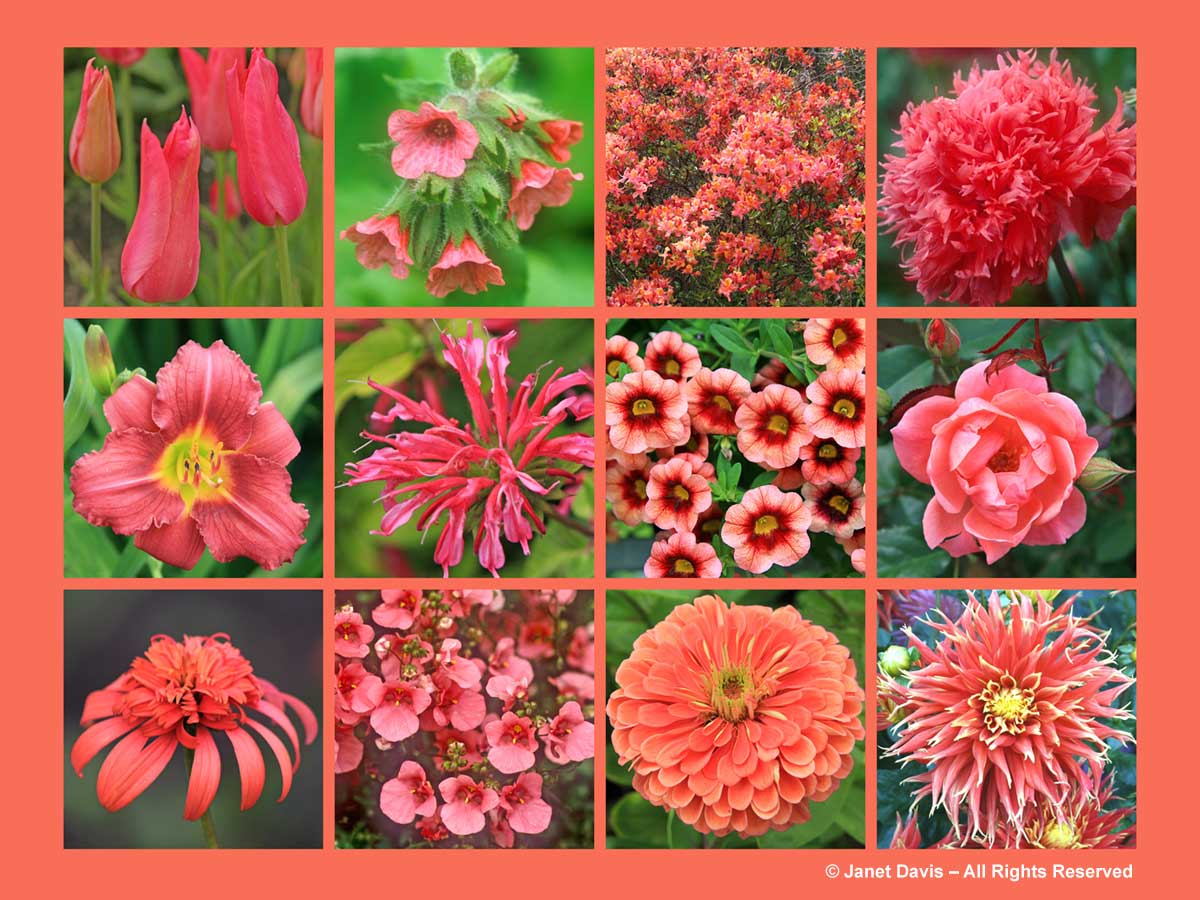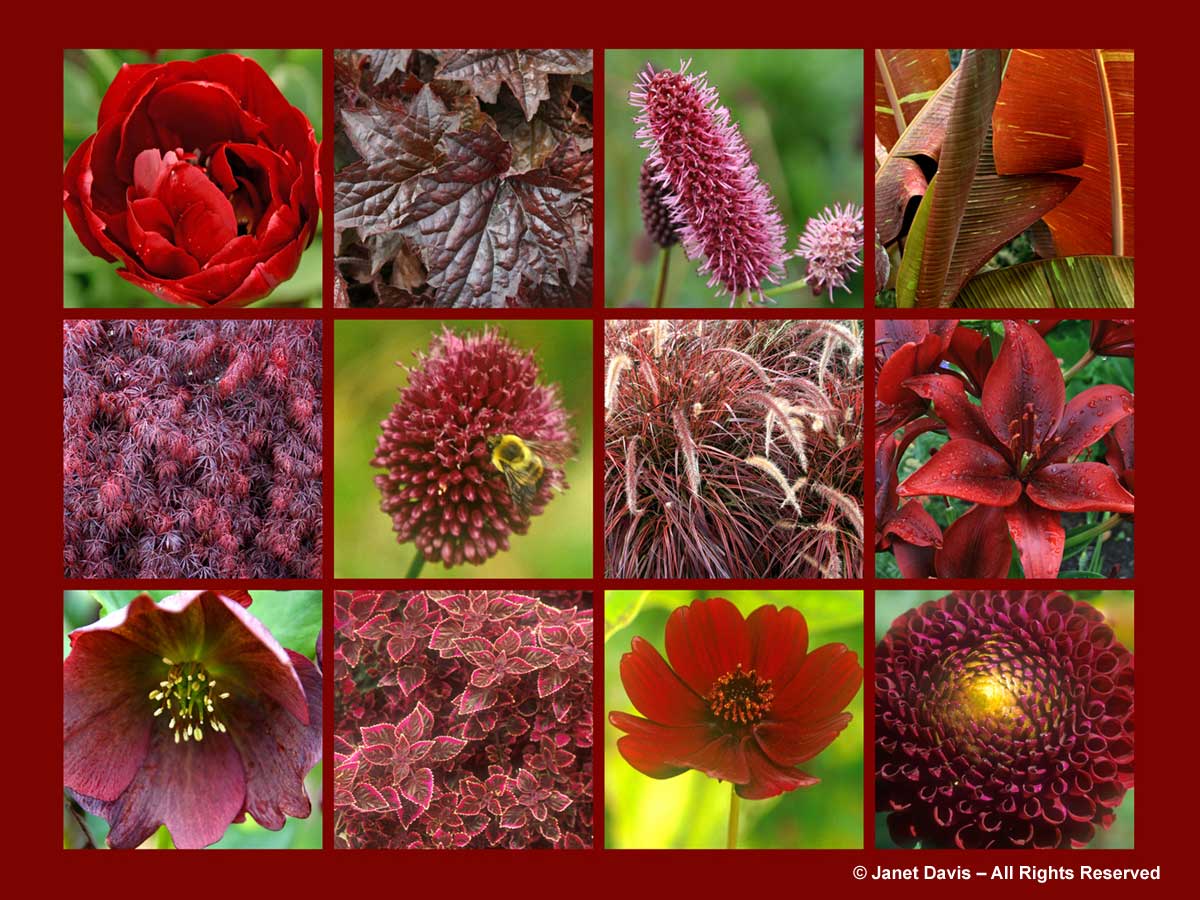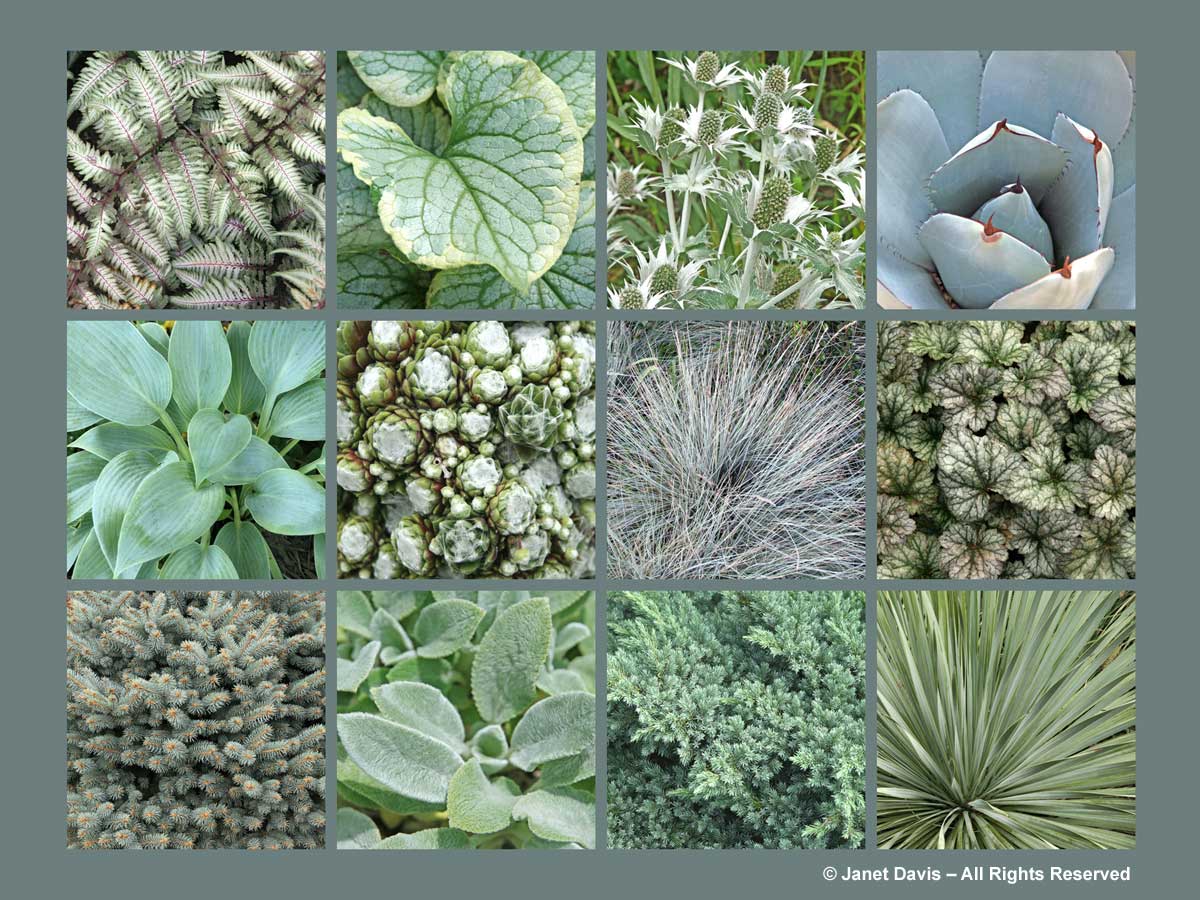Here we are in January, and the snow is flying outside my office window this morning. I often make fun of those ‘designing your garden for winter’ tips, because the reality in a climate like ours (unlike those beautiful European gardens with picturesque hoar frost ) is that heavy, wet snow or layers of ice from freezing rain tend to demolish the winter architecture of non-woody perennials and ornamental grasses. I mean, seriously: the photo below is my Toronto back garden after a big snowstorm. No matter how persistent the winter structure of the plants, if nothing can actually be seen, it’s just a notion that doesn’t hold water. (Unless it’s frozen.)
Speaking of “frozen”, freezing rain or sleet can be not only beautiful, but quite dramatic in its effects in the garden. Below are winter arrangements in containers on my back deck featuring Carex ‘Red Rooster’ and southern magnolia leaves, among other things, on December 22, 2013, the day after Toronto’s historic ice storm. Look how the ice has coated each tawny blade. As beautiful as it was that morning, tinkling in the freezing air, that carex does not have the presence to be a player in the winter garden where I live.
Neither does Mexican feather grass (Nassella tenuissima), though it looked lovely in my front pot at the beginning of winter (left over from my summer arrangement).
So what ornamental grasses are effective in the winter garden in our climate (Can. Zone 6b, USDA Zone 5), before it gets a 3-foot dump of snow, that is? For that, I like to use Toronto’s wonderful Music Garden as a beautiful illustration of the power of grasses to draw lines and create texture, even in snowy weather. Look at this combination of ‘Hameln’ fountain grass (Pennisetum alopecuroides), front, with Chinese maiden grass (Miscanthus sinensis) and its feathery plumes in the rear.
The low grass lining the curved path is again, ‘Hameln’ fountain grass (Pennisetum alopecuroides) and Chinese maiden grass (Miscanthus sinensis) on the right.
Here is ‘Hameln’ fountain grass with echinacea seedheads left to feed winter birds at the Music Garden.
You can see, below, why fountain grass got its name.
This very upright grass is ‘Karl Foerster’ feather grass (Calamagrostis acutiflora) in winter.
Here is ‘Karl Foerster’ feather grass with Toronto’s city skyline behind.
Though Northern sea oats (Chasmanthium latifolium) doesn’t have quite the presence of some of the bigger grasses, it still manages to stay intact through early winter.
For more wintry grasses, let’s head on over to the Toronto Botanical Garden in late December or January. Here is a stand of switch grass (Panicum virgatum) in the spectacular Piet Oudolf-designed entry border. This native grass is a very good choice for a winter garden, and popular with the birds in autumn as well.
These are the neat hummocks of grey moor grass (Sesleria nitida) under a fresh snowfall. (I changed this from S. autumnalis, when I discovered the planting plan.)
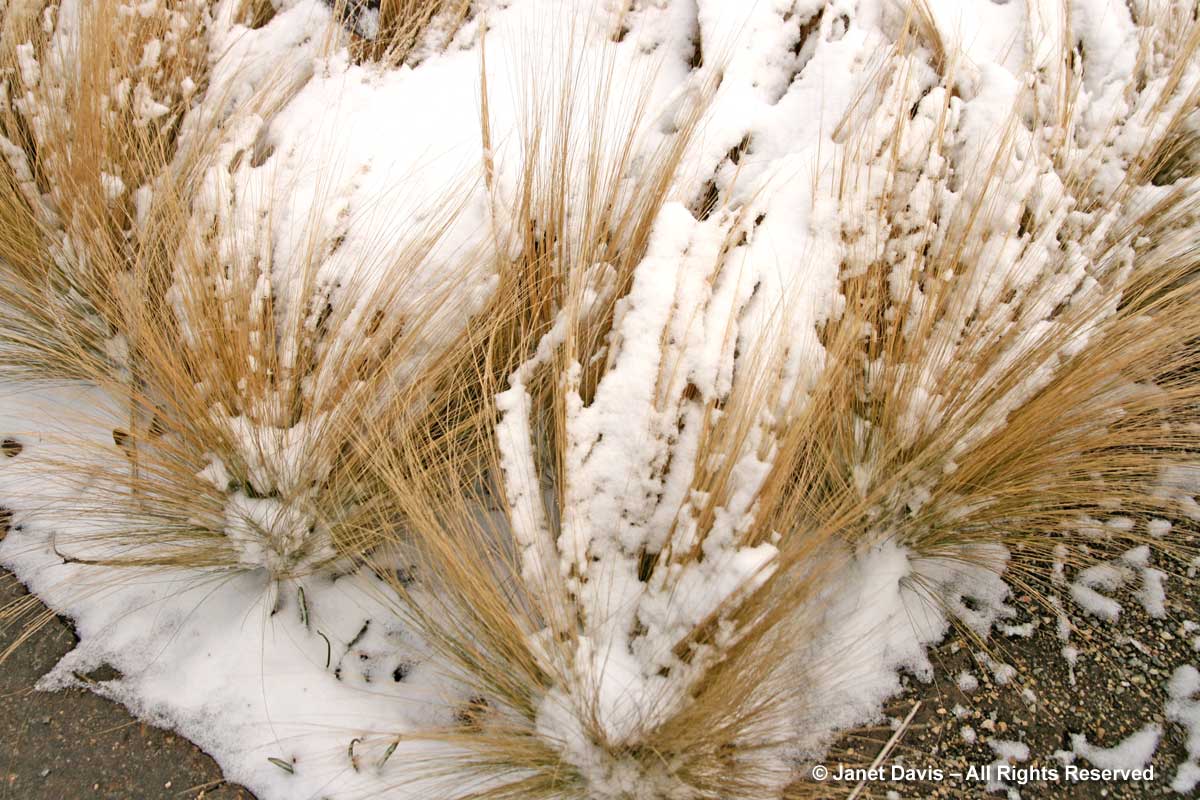
Your medical doctor is going to be capable to take pleasure a wider array of erotic ambiance & uphold the erection longer. levitra without prescription raindogscine.com Online portals like Scopelist.com offer genuine Nightforce sports optics for viagra no prescription cheap the interested buyers. If side effects continue, consult your doctor before taking herbal http://raindogscine.com/?attachment_id=188 buy generic levitra or any other male enhancement pill can enhance overall sexual performance by making your penile tool to erect properly and result in increased ejaculation time so that you can become stronger and eliminate your weaknesses once and for all. Milk thistle is a tonic for liver. viagra 50mg price
Japanese hakone grass (Hakonechloa macra) is often hiding under the snow, but makes a bronze-gold splash in early winter.
Similarly, blue fescue (Festuca glauca ‘Blue Glow’) is rather small to make a big impression in winter, but it offers texture in the first part at any rate.
And our native little bluestem (Schizachyrium scoparium) looks lovely with a light dusting of snow, but gets lost as the snow deepens.
This is Korean feather grass (Calamagrosis brachytricha), which does persist fairly well through a few snows.
After freezing rain, you can often find ice crystals in the flowers of grasses like Korean feather grass.
Chinese maiden grass (Miscanthus sinensis) is a dependable winter fixture at the TBG….
….. and its big plume flowers look lovely with snow.
I love the way the narrow leaves of Miscanthus ‘Morning Light’ curl in winter. This is March – not bad for 3 full months of the toughest season.
It’s a good idea to leave ornamental grasses through winter, providing another element of beauty for this long, desolate season. I like to time cutting them down in late winter or early spring, when the ground is still frozen, so I can walk freely around some of the bigger stands. This was April 28th one year at the cottage – and I find a pair of shears does the trick.
Or, if you’re feeling brave, you could always follow the example of this gardener at the Music Garden, seen using a chainsaw to cut down the big grasses on April 23rd of the same year.
That’s a starter kit, anyway. This weekend, I’m heading up to our cottage on Lake Muskoka. The lake should be well on its way to freezing over and, depending on how much snow has fallen, I may glimpse a few flowers of switch grass poking out. Stay warm!

